What is a smart TV?
(0) - (0)
- 2023.10.12
#LG
#SmartTV
보기
보기 AMP
- Discover what makes a television smart and why internet access is so important
- Learn how a smart TV works and how it can communicate with other smart devices
- Make the most out of your smart TV by learning which apps and features are most beneficial
- Answering the most common questions about smart TVs and helping you to decide which one is right for your home
Take a casual glance at the latest televisions on the market and you will see that almost all TVs are smart. But what exactly is a smart TV and why are they so popular? In this comprehensive guide, we’ll attempt to answer all of your questions, from how a Smart TV works and what the best features are to how to decide which smart TV is right for you. Read on to find out more.
What is a smart TV?
The simple explanation is that a smart TV is any television that can be connected to the internet. This gives you access to a wide array of apps and streaming services that let you enjoy access to a wealth of entertainment at the touch of a button.
Much like smartphones, a smart TV also has the ability to connect to other wireless devices, such as a Bluetooth speaker.
How do smart TVs work?
A smart TV needs to connect to the internet and this can be achieved wirelessly or via an Ethernet cable. LG smart TVs come with built-in Wi-Fi connectivity that can detect nearby internet service providers and simply require you to enter your network login information – most likely in the form of your password.
A smart TV can also communicate with other smart devices via different wireless protocols such as Wi-Fi and Bluetooth, as well as Airplay for Apple users.
What can you do with a smart TV?
Thanks to internet connectivity, all the entertainment you could need can be found with a few clicks of your remote or even via voice commands (don’t worry, we’ll explain how that works later).
Access to the best content
Smart TVs make it even easier to access an enormous library of online content. In fact, LG TVs provide access to a Content Store where you can download even more apps like HBO Max and Twitch.1
Free to watch LG Channels
LG Smart TVs also provide many TV channels for free through LG Channels — no subscription required. Viewers can enjoy a variety of movies, as well as TV shows across multiple genres.
Your content on the big screen
With LG Smart Share you can easily share content from other smart devices such as your PC, laptop, tablet or phone. This means you can access all of your music, videos and photos via your TV and without the need for a wire.
FAQs
Hopefully you should have a better understanding of what a smart TV has to offer but how do you know which one is right for you? This section below should help you make an informed choice.
Do smart TVs work without an internet connection?
The simple answer is yes. Even if you don’t have the internet you will still be able to watch TV channels through your aerial or cable TV box. However, you won’t be getting the most out of your television as you won’t be able to access smart TV features such as streaming services and applications.
You also won’t be able to stream music, connect with other smart devices or stream games through the Nvidia GeForce, which is compatible with numerous LG smart TVs.
Is it possible to connect smart TVs to other devices?
This is one of the major benefits of a smart TV as devices such as laptops, PCs, smartphones, tablets and Home IoT devices can all be easily connected. Bluetooth speakers and soundbars can also be easily connected without the need for wires.2 And through LG ThinQ, Home IoT devices can be monitored without hassle on Home Dashboard.
Are all LG TVs smart TVs?
While some older models may not be smart, the current LG Smart TV line-up on offer from LG UK are all smart TVs. Therefore, they can all run apps and connect to the internet.
How to choose the best smart TV for my home?
If you’ve decided to invest in a smart TV then there are plenty of factors to take into consideration, from selecting the right TV size for your room to deciding what it will be mainly used for.
Screen size
Bigger may not always be better as it can depend on the size of your room. There is an optimal distance to view every size screen – which is explained in detail right here.
Picture quality
If you want the best possible image then the latest technology comes with a larger price tag. However, there are an array of options when it comes to smart TVs and you can learn more about the difference between NanoCell, QNED and OLED here.
Watching vs gaming
If you will mainly use your smart TV to watch shows and films then resolution and technology that improves the quality of the picture should be a priority. But if you spend hours playing your favourite games, then having a TV with a high refresh rate – such as this LG NanoCell TV – is critical.
What are the best smart TV features?
The ability to connect to the internet really does make a huge difference, with smart TVs now boasting a variety of features that improve the viewing experience and make your life just that little bit easier. Here are just a few benefits of smart TVs.
Easy access to a wealth of content:
No need for bulky boxes or streaming sticks. Smart TVs give you instant access to video on demand sites such as Netflix, Hulu, YouTube and Amazon Video. You can also get access to music streaming services and cloud gaming.
Easily connect with other devices
You no longer have to worry about cables as smart devices can connect to one another wirelessly. That means you can view photos, stream music, watch videos and even play games straight from your phone, laptop, PC or tablet straight to your TV.
Searching made simple
Looking for a new series or film to watch? With an LG smart TV, you can tap the voice button on your remote and ask for recommendations. With the help of artificial intelligence – in the form of LG ThinQ AI – the TV will know the type of content you watch and can give you a personalised list to choose from.
Control your smart home
By accessing the Home Dashboard on your smart LG TV, you can control all of your smart devices from the comfort of your sofa. This means you could turn on a light or preheat your oven without leaving the room.
Real-time sporting updates
Set up a Sports Alert on a LG smart TV and you can get a live update on your favourite teams and sports even when watching other content. This way you’ll know every time a goal is scored even if you’re not watching the game.
Better picture quality
A number of selected LG smart TVs now come with the α9 Gen4 Intelligent Processor – including the LG OLED evo. This clever piece of technology helps to remove noise and optimise contrast and saturation – thus delivering a crisp, high-quality picture.
If you are looking for a TV that can be easily connected to other devices wirelessly, delivers exceptional picture quality and gives you access to a huge library of content at the touch of a button, then a smart TV is the right choice.
Life's good!
1 Content and app availability may vary by country or region. Separate subscription required for some apps.
2 Compatibility of LG Soundbars will vary by mode. A power cable has to be connected in order to activate the soundbar.
Featured Product
LG OLED evo C3 55 inch 4K Smart TV
Energy Class

LG OLED evo G3 55 inch 4K Smart TV
Energy Class

LG OLED B3 55 inch 4K Smart TV 2023
Energy Class

More to read
LG Lab
Discover the key differences between Mini LED vs. OLED and find out which TV is the right choice for you.
LG Lab
What makes a good soundbar, and what are the best soundbars for LG TVs? We’ve combed through the details in this in-depth guide.
Helpful Hints
This helpful guide will teach you how to read TV sizes and find the perfect viewing height and distance for any room.
(
0) 명이(가) 좋아요를 눌렀습니다.
(
0) 명이(가) 댓글을 달았습니다.
로그인 후 확인하실 수 있습니다. 로그인
아 드디어 구했다! 샤오미 워킹패드
(0) - (0)
샤오미 - 2019.03.19
#샤오미
#샤오미워킹패드
#워킹패드
#xiaomi
샤오미
보기
보기 AMP
최근 대학원 생활과 나이로 살이 많이쪄서 운동을 다시 해야겠다고 결심했습니다. 하지만 평일엔 수업이 있으니 불가하고... 요즘 미세먼지도 많아 외부에서 장시간 하기가 좀 그래서 집에서 야간에 할 수 있는 운동을 찾고 있었습니다.
그러던 중! 샤오미 워킹패드가 눈에 들어와 관심을 가지게 되었습니다.
근 한달간 중고나라를 살펴봤는데 역시나 인기제품인지 올라오자 마자 바로바로 거래가 되거나 가격이 터무니 없이 비싸서(정품가가 38만원이고 새제품이 인터넷에서 36만원선에 거래가 되는데 중고나라에 32만원에 올리면...) 손가락만 빨고 있었습니다.(지금 이 글을 보시는 분은 그냥 새거 사세요. 중고나라에 씨가 말랐습니다.)
이러다 운동은 시작도 못하겠다 싶어서 큐텐에서 35만원에 새제품을 구입하게 되었습니다.
생각보다 부피와 무게(28Kg)가 무거워서 깜작 놀랬네요~ 건장한 남자 혼자 들기도 벅찹니다~ 낑낑 들었어요 ㅜㅜ
워킹패드는 현재 구형인 A1과 신형인 C1 2가지 버전이 있습니다. C1이 신형이지만 염가판으로 나와서 가격이 좀더 저렴한데 A1 디자인이 좀 더 고급스러워 저는 A1으로 구입을 했습니다.
(주요 차이점은 C1이 좀더 저렴하고 사용가능 무게가 증가하고, 전체 무게가 좀 가벼워 진 정도 입니다.)
박스에 친절하게 오픈 방법이 인쇄되어 있네요~
아 진짜 힘들게 겉박스를 열었습니다! 이제 본박스를 오픈할 차례~
샤오미 제품들은 항상 이렇게 처음 열었을 때 메뉴얼이 보입니다. 컨셉인듯요.
펼칠 때 모서리 부분을 사진과 같이 꾸욱 눌러 펴주시면 됩니다.
인터넷에서 패드 방향을 조절해 줘야 한다고 했는데 펼칠 때 패드를 어느 한쪽에 치우치지 않게 맞춘다음 펴주면 별도로 패드를 맞출 필요가 없더군요~
제품 출하시 업체에서 넣어줬는지 220볼트 돼지코가 있습니다~
구성품은 왼쪽부터 리모콘, 윤활유, L자 렌치, 전원선 입니다.
리모콘 부속품은 손잡이끈과 건전지(CR2032), 본체 이렇게 입니다~

동영상 인코딩 중입니다.5분 이상 소요될 수 있으며, 영상의 길이에 따라 소요 시간은 달라집니다.
도움말 MULTI TRACK멀티트랙의 트랙별 영상은 우측 관련영상에서 볼 수 있습니다.
-
-
-
-
-

광고 후 계속됩니다.
자 이제 실제 테스트할 차례~ 실제 사용해 봤습니다~
제가 계획한 유투버를 보면서 집에서 사용하기에 완전 굿입니다~
속력은 최대 6.0까지 가능한데, 구입 후 미홈 앱을 동기화하고 튜토리얼을 패스해야 최고 속도까지 사용이 가능합니다. (미홈앱 지역 설정시 꼭 중국으로 하셔야 모든 혜택을 받을 수 있습니다~)
샤오미 제품들의 가장 큰 장점! 바로 IOT 기능이 아닐까 생각됩니다. 앱에서 제가 활동한 내용을 다 확인할 수 있어 정말 좋습니다~
점점 샤오미 제품이 늘어나네요~ 이번 워킹패드가 지금까지 구입한 샤오미 제품 중! 가장 고가의 샤오미 제품이 되었습니다!
개인적으로 샤오미 제품은 정말 가성비가 뛰어나다고 생각됩니다. 아울러 마케팅 전략도 엄청 똑똑하게 했다고 생각되어지고요~(요건 담에 시간이 되면 한 번 포스팅해 보도록 하겠습니다.) 다만 올해부터 샤요미가 제품 전반 가격을 올리겠다는 소식을 들었는데, 과연 소비자들은 어떤식으로 받아들일지 궁금하네요~
좀 더 많이 사용해 보고 추가 리뷰를 남기도록 하겠습니다! 그럼 아듀!
(19.3.3 추가)
일단 유튜브와 WalkingPad 조합은 가히 최고입니다~ 집중해서 유튜브 보다보면 어느세 1시간 걷게 됩니다~ 다만 패드가 자꾸 한 쪽으로 치우치는 문제가 발생하네요~(하단의 흰색 화살표 참고) 뭐 그건 걷기할 때 다시 맞춰주면 되니 크게 문제는 안되지만 매번 할 때마다 맞춰줘야 하는 건 좀 불편하네요~
(
0) 명이(가) 좋아요를 눌렀습니다.
(
0) 명이(가) 댓글을 달았습니다.
로그인 후 확인하실 수 있습니다. 로그인
영어 소고기/돼지고기 부위
(0) - (0)
꿀팁 모음 - 2018.10.11
#영어소고기
#영어돼지고기
#고기부위명칭
#영어
꿀팁 모음
보기
보기 AMP
| 양지머리는 어느 부위 소고기일까요?
"소고기 부위별 명칭"
(출처: MissyUSA의 Hit Recipe에 게재된 오제니/이시영님 글)

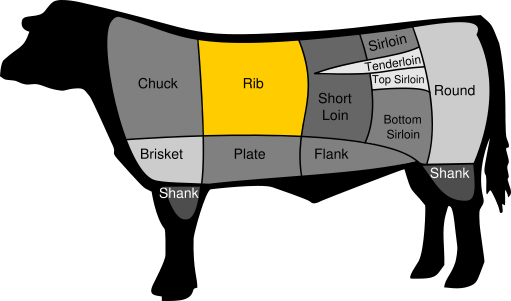
1. 목심,장정육 Chunk : 등심보다는 약간 질기고 맛이 진합니다. 스테이크, 구이, 불고기 에 쓰입니다.

2 안심 Tenderloin : 등심 안쪽에 위치한 부분으로 연하고 양이 적어 최상품이죠. 지방이 적고 담백합니다. 고급 스테이크(안심스테이크), 로스구이, 전골로 쓰입니다.

3 등심 sirloin : 갈비 위쪽에 붙은 살로 안심,채끝과 함께 상급부위이며 안심보다는 못하고 채끝보다는 나은 상급부위에 해당합니다. loin 이라 하면 등심,채끝,우둔살까지 통틀어 말하며 sirloin 이라 하면 등심과 채끝을 말한다고 이해하면 됩니다. "top sirloin" 이라 붙여 있으면 가장 좋은 등심부위라 보시면 됩니다. strips, striploin 등이라 써 있어도 이 부위라 보시면 됩니다. 육질이 곱고 연하며, 붉은 살코기 속에 지방이 적당히 섞여 있어 맛이좋습니다. 우둔살(Rump) 도 좋지만 정말 맛있는 불고기를 해 드실려면 이 부위를 사시는 게 좋습니다. 참고로 filet mignons ( "필레이 미니옹" 이라 읽으시면 됩니다. ) 는 등심 스테이크를 말합니다.

4. 채끝 shortloin, sirloin : 등심과 이어진 부위의 안심을 에워싸고 있다. 육질이 연하지만 등심에 비해 지방이 많습니다.

5 갈비 Ribs : 갈비뼈에 붙어 있는 부위로 기름기가 많고, 육질은 질기나 누구나 알고 있듯이 맛이 매우 좋습니다. prime ribs: 갈비살의 제일 맛있는 부위를 칭합니다. 
6. 우둔 Rump : 엉덩이 부위의 고기로 기름기가 적고 맛이 담백하여 여러 가지 조리에 쓰인다. 불고기나 주물럭으로 좋습니다.
7. 홍두깨 Rump round : 고깃결이 곱고 부드러우며 맛이 담백하여 여러 가지 조리에 두루 쓰입니다.

8. 양지 brisket : 양지머리라고도 하죠. 목 밑에서 가슴에 이르는 부위로 질기지만 오랜 시간에 걸쳐 끓이는 조리를 하면 맛이 좋아 한국음식으로는 국,찌개 미국식으로는 스튜(Stew)를 만드는데 쓰입니다.

9. 사태 shank, fore shank : 다리의 오금에 붙은 정강이살 고기로서 양지와 마찬가지로 질기지만 장시간 물에 넣어 끓이면 연해지며 양지와 달리 기름기가 없이 담백하면서도 깊은 맛이 나 미국인들도 좋아하는 부위입니다. 한국음식으로는 국,찌개 미국식으로는 스튜(Stew)를 만드는데 쓰입니다. "아롱사태" 다 아시죠?

* 중치 hind shank : 중치는 뒷다리의 사태 부분입니다.
10. 업진육,설도 Flank, Plate : 그림이 잘못 됐네요. "12. 쇠머리" 라고 배쪽에 잘못 나와 있는 게 바로 Flank 입니다. flank 는 갈비밑의 옆구리에 있는 얇은 고기살입니다. 지방이 많고 육질이 질긴 부위지만 오랫동안 끓이면 맛이 있습니다.

참고:
11. 쇠꼬리 Tail
12. 쇠머리 Head
13. 우족 Oxfeet
14. 도가니 Knee bone
15. 사골 Marrow bone
==========================================================
"소고기 부위별 명칭"
(출처: 미국육류수출협회, http://www.usmef.co.kr/usr/cooking/cooktip.asp)

| ① 혀 (Tongue): 건강에 좋은 살코기 부위. 구워서 레몬과 소금을 곁들여 먹으면 최고. 스튜에도 사용됩니다.
② 살치살 (Chuck Flap Tail): 마블링이 좋고 소스나 향신료와 잘 어울려 양념을 하여 요리하면 좋습니다.
③ 알목심 (Chuck Eye Roll): 지방이 적절히 있어 부드럽고 마블링이 좋은 부위로 구이, 전골, 샤브샤브에 적합합니다.
④ 알등심, 꽃등심(Rib Eye Roll Lip-on): 쇠고기 본래의 맛을 제대로 즐길 수 있는 부위입니다. 스테이크등 각종 구이는 물론 오븐을 이용하여 덩어리째 조리하는 로스트 비프에도 좋습니다.
⑤ 뼈없는 갈비(Bone-less Short Rib), 꽃갈비, 진갈비: 갈비에서 뼈만 떼어낸 맛있는 부위로 구이에 제격. 보통 우리나라에서는 갈비라고 하면 뼈가 꼭 붙어 있어야 한다고 생각하는데, 뼈가 없어도 부드러운 육질의 고소한 갈비맛을 느낄 수 있는 부위입니다. 도리어 뼈의 무게가 빠지니 더 경제적이겠죠?
⑥ 갈비 (Bone-in Short Rib): 우리나라에서 가장 인기있는 부위. 쇠고기의 풍부한 맛을 마음껏 즐길수 있는 미국산 갈비는 양념없이 구워도 정말 맛있습니다.
⑦ 채끝 (Strip Loin): 살코기와 지방의 조화가 훌륭하며 육질도 부드럽습니다.두툼하게 썰어 스테이크로, 얇게 썰어 구이로 즐기면 고유의 고기맛을 가장 잘 맛 볼 수 있습니다.
⑧ 안심 (Tenderloin): 이름 그대로 쇠고기 가운데 가장 부드러운 부위. 스테이크로 드시는 것이 가장 좋습니다.
⑨ 늑간살(Rib Finger Meat): 갈비대와 갈비대 사이의 고기를 발라낸 형태의 고기입니다. 뼈가 붙어 있어야만 갈비라는 생각은 버리세요! 뼈를 발라먹는 번거로움은 없애주고, 갈비 고유의 맛은 그대로 살아있는 부위입니다.
⑩ 앞갈비(Chuck Short Rib): 지방이 많으며 고기의 풍미도 있습니다. 이동갈비, 찜갈비의 형태로 드시면 좋은 부위입니다.
⑪ 정선삼겹양지(Karubi Plate): 삽겹양지를 정선한 상품으로 마블링이 뛰어나 구이용으로 적합하며 불고기나 국거리 용도로 적합합니다. | | | | 부산물 (Variety Meat) | | *양깃머리 (Mountain Chain Tripe): 4개 있는 소의 위 중 첫 번째 위. 쫄깃쫄깃한 육질로 구이용으로 최고입니다.
*천엽 (Bible Tripe): 4개 있는 소의 위 중 세 번째 위. 삶아서 초고추장과 함께 먹으면 일품.
*토시살 (Hanging Tender) : 횡경막의 일부로 부산물로 구분되어 있지만, 일반 정육과 다를 바가 없는 맛과 육질이 특징입니다. 요즘 서서히 각광을 받기 시작하는 부위. 구이에 알맞습니다.
*안창살 (Outside Skirt): 복부에 가까운 횡경막 부분. 토시살과 마찬가지로 부산물로 구분되어있지만일반 구이집의 인기 메뉴일 정도로 육질이 아주 부드럽고 독특한 달콤한 풍미를 가지고 있습니다.
*간(Liver): 철분을 다량 함유하고 있어 전으로 부치거나 볶아서 먹습니다. 영양식으로 만점입니다.
*대장 (Large Intestine): 씹는 맛이 쫄깃하며 단맛이 있습니다. 소스를 발라 굽거나 조림에 적합합니다. |
==========================================================


==========================================================
"돼지고기 부위별 명칭"
(출처: 미국육류수출협회, http://www.usmef.co.kr/usr/cooking/cooktip.asp)

① 목살 (Collar Butt): 마블링이 좋은 부위로 스테이크나 로스용으로 적합하며 우리나라에서는 수육으로도 알맞은 부위입니다. ② 등심 (Loin): 국내에서는 지방이 적어 비선호부위에 속하지만 유럽, 미국, 일본에서는 선호도가 매우 높은 부위입니다. 돈까스, 카레, 잡채용으로 해드시면 좋습니다.
③ 안심 (Tenderloin): 지방이 적고 가장 결이 곱고 부드러우며 칼로리가 낮은 부위로 맛이 산뜻하고 담백하며 저칼로리이므로 성인병이 걱정되는 사람이나 치아가 좋지 안은 분이라도 안심하고 즐길 수가 있습니다. 비타민 B1을 가장 많이 함유한 부위입니다.
④ 항정살(Jowl): 마블링이 참치의 지방을 연상시켜, 고급스럽게 느껴집니다. 돼지고기의 항정살은 돼지 한마리에서 200g밖에 나오지 않는 희소부위로 결 반대로 얇게 썰어 구이로 해드시면 좋습니다.
⑤ 스페어립 (Spareribs): 갈비뼈에 삼겹살의 일부를 붙여 생산하는 부위로 바비큐용으로 숯불이나 오븐을 이용해서 조리해보세요.
⑥ 삼겹살(Belly): 살코기와 지방이 서로 층을 이루어 돼지고기 특유의 풍미를 맛볼 수 있는 부위로 우리나라 사람들이 가장 좋아하는 부위입니다. 구이는 물론이고 얇게 썰어 샤브샤브로 해드셔도 좋습니다.
⑦ 뒷다리살 (Ham): 지방이 적고 안심 다음으로 비타민 B1이 많이 함유되어 있습니다. 부드럽고 맛이 좋으므로 고기맛을 즐길 수 있는 요리에 적합합니다. 덩어리째 로스트로, 토막내어 장조림용으로, 얇게 썰어 샤브샤브로 이용해보세요 |
(
0) 명이(가) 좋아요를 눌렀습니다.
(
0) 명이(가) 댓글을 달았습니다.
로그인 후 확인하실 수 있습니다. 로그인
Apple Watch Series 4 vs. Series 3: Which should you get?
(0) - (0)
Apple watch | 애플워치 - 2018.09.20
#applewatch4
#applewatch3
#2018applewatch
#apple
Apple watch | 애플워치
보기
보기 AMP

Julian Chokkattu/Digital Trends
In September, Apple pulled back the curtain on the latest iteration of its popular smartwatch, the Apple Watch Series 4. The Series 3 is already a superb device — as of 2018, it topped our list of the best smartwatches — so what could Apple possibly do to best it? A few things, as it turns out. The Series 4 has a number of new features (some subtle, some astounding), but it’s not a cheap gadget, and if you already own a Series 3, you may wonder whether the upgrade is worth it. Let’s break down the differences between the two models.
SPECS
| | Apple Watch Series 4 | Apple Watch Series 3 |
| Display size | 40mm (44mm w/ cellular) | 38mm (42mm w/ cellular) |
| Resolution | 324 x 394 pixels (368 x 448 w/ cellular) | 272 x 340 pixels (312 x 390 w/ cellular) |
| Touchscreen | LTPO OLED Retina display w/ Force Touch | OLED Retina display w/ Force Touch |
| Wireless interface | Bluetooth 5.0, Wi-Fi 802.11b/g/n, LTE and UMTS | Bluetooth 4.2, Wi-Fi 802.11b/g/n, LTE and UMTS |
| Depth | 10.7mm | 11.4mm |
| Accelerometer | Yes | Yes |
| Gyroscope | Yes | Yes |
| Altimeter | Yes | Yes |
| Ambient light sensor | Yes | Yes |
| Optical heart rate | Yes | Yes |
| GPS | Yes | Yes |
| Water resistant | Yes | Yes |
| Battery life | 18 hours | 18 hours |
| Price | From $399 | From $279 |
| Availability | Available to order September 14, available September 21 | Now |
DESIGN AND DISPLAY
The Series 3 was a familiar face for anyone who had one of the previous models, with the most notable difference being a colored dot on the crown. It was also just a tiny bit thicker than its predecessors.
The Series 4 sports a seamless edge-to-edge display, and Apple boasts that it is more than 30 percent larger than the Series 3’s. This is in keeping with the trend in mobile devices of purging bezels once and for all, and it makes for a sleek device.
The Series 3 expanded the functionality of the Apple Watch by adding cellular support, and the Series 4 builds on this with an improvement in form: The new watch has a back made of black ceramic and sapphire, which Apple claims will allow radio waves to flow with less resistance, improving reception. The Series 4 also rocks a speaker that is 50 percent louder than the previous generation’s. These factors combine to make a smartwatch that should be much better for making calls on the go — although whether this makes the Apple Watch a legitimate smartphone replacement is still up in the air.
A small but welcome touch is the addition of haptic feedback to the Series 4’s crown. As users scroll through screens, the watch will reward them with a comforting click.
FITNESS AND HEALTH-TRACKING FEATURES
The Series 3 was already a great fitness tracker. In our review, we described it as “clear, concise, informative, and encouraging, and with many different modes to suit the majority of people.” We also noted that “heart-rate monitoring is easy, and there are varied tracking options for walking, running, cycling, swimming, and more.”
The Series 4 pushes the design to new heights with the addition of an electrocardiogram (ECG) sensor. When a user places their finger on the crown, the watch creates a “closed circuit” and can measure the rhythm of the user’s heart. It’s a major addition for customers worried about their heart health, and according to Apple it is the first ECG sensor available over the counter. Apple has already secured approval from the Food and Drug Administration for the Series 4 to be considered a legitimate medical device.
Another boon to the Series 4’s health tracking is the ability to detect when the user has fallen over. If the user remains on the ground for a minute, the watch can even place a call to emergency services, a miraculous feature for people who live alone and need assistance.
BATTERY LIFE
With all these new features, one may wonder if the battery life has taken a hit. Apple hasn’t extended the battery life, but it has at least maintained it. Like its predecessor, the Series 4 will get 18-hour “all-day” battery life, although Apple did bump the outdoor workout battery life to six hours.
PRICING AND AVAILABILITY

Julian Chokkattu/Digital Trends
The circle of wearable life continues, and with the arrival of the Series 4, Apple is dropping the starting price of the Series 3 to $279. The Series 4 will start at $399, or $499 for the cellular version. Customers will be able to place their orders for the Series 4 starting September 14, and the device will be available (in most markets) starting September 21.
CONCLUSION
If you’re strapped for cash, the Series 3 remains a lovely device, and you’d certainly be fine sticking with it (or picking it up at the new, lower price). For those who don’t balk at the Series 4’s price tag, however, it is undoubtedly the smartwatch to get, a bold evolution of what was already the premier device on the market. Its new health-tracking features are unparalleled, and a great addition for anyone concerned about their vitals.
보기
(
0) 명이(가) 좋아요를 눌렀습니다.
(
0) 명이(가) 댓글을 달았습니다.
로그인 후 확인하실 수 있습니다. 로그인
Apple Watch Series 4 hands-on review
(0) - (0)
Apple watch | 애플워치 - 2018.09.20
#applewatch4
#applewatch3
#2018applewatch
#apple
Apple watch | 애플워치
보기
보기 AMP
HIGHS
- Impressive array of heart-tracking features, ECG
- Larger screen that looks great
- Strong performance
- Haptic feedback on crown is a nice touch
- Excellent app support
LOWS
- Longer battery life would have been nice
- Expensive
- No third party watch faces
Last year’s Apple Watch Series 3 cemented its place as the best smartwatch you can buy. This year, Apple has gone a step further to make the Apple Watch Series 4 the only wearable you need. The improvements range from a larger screen to two times better performance over the Series 3, but the spotlight falls on the electrocardiogram (ECG) app, which has been certified by the Food & Drug Administration, making the Apple Watch Series 4 the first over-the-counter ECG alternative for consumers. It’s an impressive feat, and it shows just how much of a lead Apple has over the competition.
We managed to spend some time with the new watch at Apple’s event in Cupertino. The ECG app won’t be available until later this year, but that still left us plenty to explore.
BIGGER SCREEN, SLEEK DESIGN
Like before, the Apple Watch Series 4 comes in 40mm and a 44mm size options. What’s new here is the screen real estate — you get more screen, without having to deal with a significantly bigger watch body.




Slimmer bezels allow a 30 percent larger screen, which means you can see more content than ever before. Will this affect battery life? Apple claims new low-temperature polycrystalline oxide (LTPO) display technology should improve power efficiency, so we’ll just have to wait and see. The screen looks excellent, as usual, though we’ll need to use it outdoors to see if it’s easy to see in bright sunlight.
We liked the Vapor watch face, which showed off neat, dynamic animations on the watch as it lit up.
The Series 4 watch looks a little curvier than previous Apple Watch devices, but it’s just as elegant and sleek. We tried on the stainless steel 44mm watch, which felt lightweight and supremely comfortable. The leather magnetic strap wrapped around our wrist without much fuss, and the lug design meant there were no gaps between the watch and our wrist.
All this being said, we would have been thrilled to see what Apple would do with a circular watch, but it looks like that may never happen.
Accompanying the larger screen are several new watch faces, and some look better than others. The Infograph watch face, for example, looks a bit too cluttered for our tastes, but it does provide a ton of information at a glance if that’s what you want. It has an air-quality index, ultraviolet index, weather, and access to breathing exercises, heart rate, activity, music, and workout. The complications can be customized to your liking.

Julian Chokkattu/Digital Trends
Other new watch faces have pretty animations that shift to the rhythm of breathing exercises — handy if you constantly find yourself stressed out.
We much preferred the Vapor watch face, which showed off neat, dynamic animations on the watch as it lit up. We do think Apple missed an opportunity here to launch a store for third-party watch faces, but baby steps were made. The Infograph Modular watch face lets you add in a slice of data from any other Apple apps or third-party apps — if developers add support. Baby steps.
MAJOR BREAKTHROUGHS
One of our favorite features on the Series 4 is the haptic feedback implemented in the Digital Crown. As you rotate the button, you can feel vibrations for every selection you move past. It’s a small but wonderful touch that makes interacting with the watch a little more fun.
The Series 4 Apple Watch can also alert you when it detects a low heart rate or an irregular heartbeat.
The crown is also what you will use for the electrocardiogram app when it’s available later this year — just tap your finger on it, and the electrical heart sensor will do the rest. You’ll be able to download a PDF to share with your doctor.
While we can’t comment on how well it works, the ECG has the potential to make a significant impact in the health community.
Many people wear the Apple Watch all day, but may not do the same with traditional ECG monitors. While the results likely won’t be as accurate as what you may find in the doctor’s office, the ability to take measurements quickly at any moment will be a major boon.
The Series 4 Apple Watch can also alert you when it detects a low heart rate, and recognize an irregular heart rate. If you have any heart-related issues, these features make the Apple Watch the watch you want to have on your wrist at all times.

Julian Chokkattu/Digital Trends
Going a step further, the watch can also detect when you fall, and send out an alert to your emergency contacts if it doesn’t detect movement after a minute. Sure, Life Alert exists, but a stylish watch is a lot more enticing than a clunky pendant.
BETTER PERFORMANCE, LOUDER SPEAKER
The Apple Watch Series 4 is powered by Apple’s new S4 chip, which the company claims delivers two times faster performance. We never ran into a problem with performance on the Series 3, but we’ll happily take any improvements. Moving around the watchOS operating system is fluid and smooth, and we didn’t see any issues here.
Apple has also shifted the placement of the microphone to reduce echo during calls, and the speaker is purportedly 50 percent louder. We weren’t able to tell in the loud environment we were in, but if true that should make using the new Walkie-Talkie feature in watchOS 5 easier. Speaking of watchOS 5, you can check out all the new features available in our handy guide.
APPLE WATCH SERIES 4 COMPARED TO

Garmin Fenix 5X Plus

Casio Pro Trek WSD-F30

Alpina AlpinerX

Fossil Q Venture

Garmin Vivoactive 3

Emporio Armani Connected touchscreen…

Fitbit Ionic

Apple Watch Series 3

Diesel On Full Guard Smartwatch

Huawei Fit

Garmin Vivoactive HR

Apple Watch Series 2

Asus ZenWatch 2

Asus ZenWatch

Garmin fenix 2
We’re not expecting much of a difference with battery life of the Series 4, so expect more than a day, perhaps two, based on our experience with the Series 3.
PRICING AND AVAILABILITY
The Apple Watch Series 4 starts at $400 for the Wi-Fi and GPS model, and $500 for the GPS and cellular model. Prices also vary depending on whether you want the aluminum case or the stainless steel. There are a ton of options to choose from, so it’s easy to find something you’ll like. The two size options are also great for people who want a smaller or larger watch. Pre-orders start September 14, with sales starting September 21.
There’s a lot of technology fitted into the relatively small case of the Series 4 Apple Watch. It’s impressive, but we haven’t really been able to test many of these features, so we’re not ready to recommend it quite yet. Still, considering the FDA certification and the host of new heart-tracking features, this is certainly a smartwatch worth considering for everyone.
보기
(
0) 명이(가) 좋아요를 눌렀습니다.
(
0) 명이(가) 댓글을 달았습니다.
로그인 후 확인하실 수 있습니다. 로그인
Apple Watch Series 4: Everything you need to know
(0) - (0)
Apple watch | 애플워치 - 2018.09.20
#applewatch4
#2018applewatch
#apple
Apple watch | 애플워치
보기
보기 AMP
At its September hardware event, Apple unveiled it’s highly anticipated next-generation smartwatch — the Apple Watch Series 4. From a larger display to a built-in electrical heart sensor that can measure a variety of health metrics, the latest device brings along some notable new features.
Here’s everything you need to know about the Apple Watch Series 4.
DESIGN AND DISPLAY
The Apple Watch Series 4 comes in two sizes — 40mm and 44mm – and also brings along a 30 percent larger display. There’s also a redesigned modular watch face with more detailed and graphic information. Users can see stocks and heart rate, track scores from sports teams, view boarding information, and more. In terms of colors, the Series 4 comes in three aluminum finishes — silver, gold, and space gray. The Series 4 also comes in gold stainless steel with a Milanese band, in addition to the silver and space black stainless steel options. The new bands will also work with any of the Apple Watch predecessors.




Julian Chokkattu/Digital Trends
The Breathe app, which many use for meditation or to lower their heart rate, will now be available as a watch face. That way, you’ll be able to use it by simply raising your wrist to allow the Breathe app to guide you through deep breaths.
For the most part, the Series 4 looks similar to its predecessors, although there’s a new digital crown with haptic feedback. This will allow for a more responsive feel when you flip through items on your watch. The speaker has also been completely redesigned, making it 50 percent louder, and the microphone can now be found on the opposite side — far away from the speaker. This will hopefully help to reduce echo and make phone calls much clearer.
The back of the Series 4 is made of black ceramic and sapphire crystal, allowing radio waves to pass through the front and back. Apple says this is meant to improve cell reception.
SPECS AND BATTERY
Under the hood is Apple’s next-generation S4, 64-bit dual-core processor that’s been designed to perform two times faster. The accelerometer and gyroscope have twice the dynamic range and can sample motion data eight times faster.
Nothing has changed when it comes to battery life, though — the Apple Watch Series 4 has the same 18-hour, all-day battery life. Apple has increased outdoor workout time to six hours, with full GPS tracking for long bike rides.
SOFTWARE AND SPECIAL HEALTH FEATURES
The Apple Watch Series 4 runs Apple’s new WatchOS 5 operating system. It comes along with a variety of improvements, like enhanced fitness and health tracking, walkie-talkie mode, and more.
The Series 4 also has a ton of additional health features. For starters, it can now detect when you fall by analyzing wrist trajectory and impact acceleration. It will then initiate an emergency call. If it senses you’re immobile for 1 minute, it’ll automatically call and send a message to your emergency contacts using the SOS feature.
While older models of the Apple Watch include an optical heart rate sensor to track calories burned, resting heart rate, and more, the Series 4 offers a few new features. You’ll now receive a notification if your heart rate appears to be too low — which could mean that your heart isn’t pumping enough blood to the body.
In addition, the Apple Watch will now be able to screen your heart rhythm in the background. It’ll send a notification to the watch if it detects irregular rhythm, which could point to atrial fibrillation. While the device isn’t able to diagnose the issue, it can detect it for you so you can then consult a doctor.
Perhaps one of the most impressive features on the Series 4 is the built-in electrical heart sensor. Built into the back of the sapphire crystal and digital crown, users can now take an electrocardiogram (ECG) — the first of its kind in a smartwatch. This will measure electrical activity of the heartbeat in order to help diagnose heart disease and other conditions. You’re able to take an ECG anytime, anywhere, straight from your wrist by opening the app and placing your finger on the digital crown. Since all of the information is stored in the health app, you’ll be able to share the ECG with a doctor, who will be able to see a more detailed picture of what’s going on. Apple has also received clearance from the Food and Drug Administration.
PRICE AND AVAILABILITY
The Apple Watch Series 4 starts at $399, while the cellular model starts at $499. The Apple Watch Series 4 is now available for pre-order in the U.S., with availability beginning September 21.
Updated September 14: The Apple Watch Series 4 is now available for pre-order
보기
(
0) 명이(가) 좋아요를 눌렀습니다.
(
0) 명이(가) 댓글을 달았습니다.
로그인 후 확인하실 수 있습니다. 로그인
APPLE WATCH SERIES 4 REVIEW: THE BEST GETS BETTER
(0) - (0)
Apple watch | 애플워치 - 2018.09.20
#applewatch4
#applewatch3
#2018applewatch
#apple
Apple watch | 애플워치
보기
보기 AMP
The greatest Apple product comeback story of the past few years has, without a doubt, been the Apple Watch. Launched with great fanfare four years ago, the initial version tried to do way too much with way too little, and it had confusing software to boot. Worst of all, it was unclear what the original Apple Watch was even for. No single thing stood out.
Then Apple did what Apple often does: iterated, refined, and fixed. But as much as there were software and hardware improvements to the Series 2 and Series 3, the most important refinements were to the Apple Watch’s purpose. It gained clarity. It was for fitness and notifications. Eventually, when it was ready, Apple added better connectivity.
Now, with the Series 4, Apple is iterating again. And, importantly, it’s learned how to iterate the product’s hardware and its purpose at the same time. The Series 4 has finally achieved something like the original goal of the Apple Watch. It’s not quite a do-anything computer on your wrist, but it can be different things to different people now.
With apologies to the new iPhones, the Apple Watch Series 4 was the most impressive thing Apple announced last week. After using it for the past week or so, I think it lives up to the hype.
8.5VERGE SCORE

GOOD STUFF
- Great battery life
- Huge, beautiful screen
- Health-tracking features, not just fitness
BAD STUFF
- Siri is still unreliable
- No always-on screen option
- Complication options can be confusing
Buy for $399.00 from Apple
For the first time since the original Apple Watch, the hardware has been fully redesigned, with a new body and new sizes. But it’s not a major overhaul. These still look like the Apple Watches you’re used to: they have the same rounded-corner lozenge shape, the same glass that curves around to match the body, and the same digital crown and single-button layout.
Before we get too far, we should talk pricing. This Watch is not especially cheap. The smallest, least expensive model comes with GPS and Wi-Fi and costs $399. But if you start piling on the upgrades, you can quickly jack up the price to something that feels exorbitant, especially if you’re upgrading from a Series 2 or Series 3. It’s $29 more for the larger size, $100 for LTE compatibility (plus $10 per month or so from your carrier), and the stainless steel models are $200 more (and only come with LTE). Add in Apple Care, and you can end up spending a lot — though it’s nothing like the wild “Edition” prices of yore. (Don’t even get me started on the Hermès model.)
THE LARGER SIZES DON’T FEEL THAT MUCH BIGGER THAN THE OLDER MODELS
The two new sizes are 40mm and 44mm, but they really don’t feel that much bigger on your wrist than the old sizes. I was using the 42mm Series 3 and the 44mm size is only subtly bigger, but it’s also subtly thinner. To me, it feels about the same, but I think the trade-off of size for thinness is worth it. I suspect the same will be true for people who prefer the smaller size, but my recommendation is to go to a store and try one on before buying.
I’m really happy — and impressed — that Apple managed to make existing Watch bands fully compatible with the new sizes. Even my old third-party bands fit seamlessly into the new Watch body.
Things look different when the screen turns on. The screen on the Series 4 is just incredibly good. Apple says it’s 30 percent bigger, which is one of those specs that’s easy to just sort of pass over when you read it. But 30 percent is a lot, and you absolutely notice it right away.
It’s still OLED so the blacks are truly black and blend into the watchface glass. But if you pick a full-screen watchface, you’ll see that the screen also goes closer to the edges of the Watch than before, including the rounded corners.
The overall effect makes the square display on my Series 3 look dumpy and cramped by comparison — even though, until last week, it was arguably the best smartwatch screen on the market. As John Gruber writes, “The Series 4 displays take up so much more of the face of the watches that the new 40mm watch’s display is larger than the display on the old 42mm models — the new small watch has a larger display than the old large watch.”
:no_upscale()/cdn.vox-cdn.com/uploads/chorus_asset/file/13111171/vpavic_180917_2949_0203.jpg)
:no_upscale()/cdn.vox-cdn.com/uploads/chorus_asset/file/13111151/vpavic_180917_2949_0210.jpg)
:no_upscale()/cdn.vox-cdn.com/uploads/chorus_asset/file/13111173/vpavic_180917_2949_0235.jpg)
Beyond the size and the screen, there are a few other subtle exterior differences to note about the hardware. The rear of the Watch is now ceramic instead of metal to allow for a better wireless signal. If you spring for the LTE model, the garish red dot on the digital crown has been replaced with a much more subtle red ring.
The microphone has been moved between the two buttons so that it’s further away from the speaker to help reduce echo in calls. The speaker has been boosted to provide more volume. It really is way louder, and I haven’t heard any distortion during phone calls.
Last year’s Apple Watch had some issues with LTE at launch, though Apple fixed it up fairly quickly. This year, I haven’t had any major problems with LTE. In fact, several people I called with the Watch simply didn’t believe I wasn’t on a phone. It sounds good, and the louder speaker means you can hear it without holding the thing next to your ear.
But it does take the Watch a minute (sometimes two) to switch on LTE and get connected. That’s not radically worse than what happens when you pull your phone out of airplane mode, but on the Watch, it’s always a little less clear what’s happening and why when data is not coming in.
On the inside, there’s a faster S4 processor, a W3 chip (which is just Apple’s W2 chip with Bluetooth 5.0 support), and an accelerometer and gyroscope that are able to take samples of your movements more often (which is how Apple was able to add the new fall detection feature). Apple’s also tied haptics to the digital crown, so when you spin it, you feel little ticks that precisely correlate to what’s happening on the screen. It’s completely unnecessary but pretty neat.
BATTERY LIFE HAS BEEN STUPENDOUS
Last but certainly not least: the battery size is about the same. Battery life on the Series 4 is as good or better than on the Series 3 Watch. Apple claims 18 hours of regular use or six hours of outdoor workouts. I haven’t done a six-hour outdoor workout (and I don’t plan to), but my testing shows the battery life far exceeds Apple’s own claims.
I took the Watch off the charger on Saturday morning and wandered around Oakland for four hours while disconnected from my phone. I used LTE for maps, a couple calls, and GPS for tracking my outdoor walk “workout.” I was still at 50 percent at the end of that day, and I didn’t get below 20 percent by the end of my lazy Sunday (which also involved an hour or so of GPS tracking and some LTE data).
The battery life is so good that I wish Apple gave me an option for an always-on ambient screen, maybe by turning off some radios. Alas, you still have to turn your wrist to see the time.
:no_upscale()/cdn.vox-cdn.com/uploads/chorus_asset/file/13111157/vpavic_180917_2949_0076.jpg)
watchOS 5 is kind of a grab bag of new features, which sounds dismissive, but I don’t mean it to be. It’s a good sign that watchOS is ready to be laden with features instead of rethought from the ground up, as it was in years past. There’s support for podcasts, Walkie Talkie mode, slightly improved (and grouped!) notifications, and a bunch of fitness and health options.
:no_upscale()/cdn.vox-cdn.com/uploads/chorus_asset/file/13112701/IMG_0030.png)
:no_upscale()/cdn.vox-cdn.com/uploads/chorus_asset/file/13112703/IMG_0031.png)
But the thing people will probably pay the most attention to are the new watchfaces that are available on the Series 4 Watches. They’re designed to show off the new rounded-corner screen. Some are just sort of flashy animations, while others are chock-full of new complications in phantasmagoric colors.
Of the new watchfaces, I am most fond of the animated ones. Apple says that the fire, water, and vapor animations were all created with practical effects. As in: literal fire, vapor, and water were filmed with high-speed cameras as they flowed on custom-welded rigs. They look great; the animations naturally flow right up to the rounded corners.
The watchface that you’ll probably see the most in ads is called “infograph.” It takes the bigger screen of the Series 4 and fills it up with as many as eight complications. There’s a “modular” version as well that shows the digital time and six complications. Like many parts of watchOS 5, they use new, more rounded fonts, too.
The infograph watchface is polarizing. I don’t like it at all, though I wouldn’t go so far as to call it a “design crime.” There are just too many colors doing too many different kinds of work splashed all over the screen in a garish and show-offy way. Too many of Apple’s watchface options are like that. Call me boring, but I prefer a Watch look that’s a little more staid. It makes me a little sad that Apple still doesn’t allow third-party watchfaces.
Even if you like the new watchfaces, you probably won’t like what happens when you try to select a new complication. There are now “old”- and “new”-style complications, which are completely different and incompatible. The newer watchfaces need the new complications, so third-party developers will have to update their apps (and so will Apple). You can’t add the Home app to the new watchfaces, only the old ones. The most annoying part is that there’s no way to know what complications are available on any given watchface without scrolling through and looking for the one you want.
:no_upscale()/cdn.vox-cdn.com/uploads/chorus_asset/file/13111167/vpavic_180917_2949_0025.jpg)
On the fitness front, the best new feature is automatic workout detection, which can tell if you’ve started or stopped a workout and ask you if that’s the case and if you want to log it. There are now options for yoga, hiking, setting a target pace, and tracking your pace. You can also see your cadence as you run and challenge somebody to a week-long exercise competition. (I didn’t extensively test these features; I’m still at the “fill your damn rings” stage of my exercise goals.)
Maybe the most interesting change, though, is how Apple is more clearly separating out health features from the fitness stuff. There are a few new features in watchOS 5 and the Series 4 that are designed to help you detect health problems, not just encourage you to close those activity rings or run a marathon.
That’s interesting because it more explicitly positions the Apple Watch as a device that can help detect health problems, making it something that people who can’t exercise that much might be more interested in. Apple, as always, is very careful to not cross the line into making actual health claims about its new features. It’s careful to say that the Watch can detect things like irregular heartbeats, not that it will.
THERE’S A BIG DIFFERENCE BETWEEN “TRACKING YOUR FITNESS” AND “MONITORING YOUR HEALTH”
watchOS 5 is able to detect low heart rate now, in addition to high heart rate. Later this year, Apple will add detection for irregular rhythms and provide notifications for them. The big new feature on the Series 4 is that it can take an electrocardiogram (EKG) using electrodes built into the back of the Watch and the digital crown. It can then send a PDF of your results to your doctor. I wasn’t able to test that as it is coming later this year. Both irregular heartbeat detection and the EKG features have been granted “de novo” classification by the FDA, and that distinction is important, as Angela Chen explains:
It’s important to understand that the FDA has “cleared” both apps, but that’s not the same as “approving” them. There are usually three ways to get the FDA involved in a new project, according to Jon Speer, co-founder of Greenlight Guru, a company that makes quality management software for medical device companies. The most advanced is FDA approval, which is done only for Class III products, or technologies that might have higher risk but also a higher benefit. (Think: implantable pacemakers.) Approval is the gold standard, and companies need to do a lot of testing to receive this designation.
The Apple Watch is in Class II. For Class II and Class I, the FDA doesn’t give “approval,” it just gives clearance.
Another new feature exclusive to the Series 4 is hard fall detection, thanks to a new 800Hz accelerometer and gyroscope that can that can measure up to 32 G-forces. The Watch should be able to tell if you’ve had a spill and ask if you’d like to call emergency services. If you don’t move for a full minute after falling, it can do that automatically and also send a message to your emergency contact. Apple is turning it on automatically for users who tell the Watch they’re over age 65, and it’s making it an option for younger users as well.
I’ve tried to trigger it without hurting myself and I haven’t been able to, which I suppose is a point in the Watch’s favor. (My tests were far from scientific; I was just hurling myself at the couch.) Apple says that to build its fall detection algorithms, it used data from a study involving 2,500 participants over several years, and it also worked with assisted living facilities and movement disorder clinics.
So throwing yourself into bed after a long day shouldn’t trigger it, but a fall from a ladder or tripping over a curb and flailing your arms as you hit the ground might. Again, Apple’s health claims are not that the Watch will detect these falls, but simply that it could.
:no_upscale()/cdn.vox-cdn.com/uploads/chorus_asset/file/13111175/vpavic_180917_2949_0180.jpg)
A lot of people were really excited about Walkie Talkie mode, but after testing it, I don’t think it’s especially compelling. Unlike those classic Nextel Push-to-Talk phones, Walkie Talkie mode on the Apple Watch is essentially just a FaceTime Audio call with a button you press to talk and little beeps and visual indicators to tell you if it’s your turn.
:no_upscale()/cdn.vox-cdn.com/uploads/chorus_asset/file/13112603/IMG_0035.png)
When you send the first message, you have to wait for a connection to be made, and then it’s just tapping the screen and talking. The connection stays active until a few minutes after the last person finishes speaking. It’s neat, but it doesn’t feel as instant as a true PTT system. I also had connectivity problems with it, but that may have just been OS launch-day overloading.
That said, it’s silly fun to push the big yellow button with your nose when it’s your turn to talk. I strongly recommended it. (If it becomes a thing, I want to make sure I get full credit for coining the term “nose calls.”)
Siri on watchOS 5 is still Siri. There’s a new feature that lets you simply lift your wrist and start taking instead of pushing a button or saying “Hey Siri,” and it works really well. The Siri shortcuts you set up on your iPhone should also work from your Watch, too. Siri still feels super unreliable, though.
Siri gets especially fussy when you have a spotty connection. Too often, when I wanted to ask a question, I’d be met with a “hang on…” message, followed by a “I’ll tap you when I’m ready” message, followed by an interminable wait during which I’d forget whatever it was I needed Siri for.
One last little watchOS 5 thing I must mention: you can open links to webpages now, too, which is kind of fun. Articles you click on get put into readability mode, so you don’t have to worry too much about ads or bad layouts on your Watch. Hooray for the web!
:no_upscale()/cdn.vox-cdn.com/uploads/chorus_asset/file/13111159/vpavic_180917_2949_0162.jpg)
This year’s Apple Watch is incredibly good. If you use it just for notifications and step counting, it’s probably overkill, but it’s able to handle more advanced features better than any other smartwatch I’ve tested. Mapping, music, workouts, calls, texting, podcasts… most of the stuff I could imagine wanting from a smartwatch works better than ever before. The only real bummer is that I still don’t feel like I can trust Siri to do everything I’d like reliably, and that’s more of an intermittent hassle than a real killer.
If you’re looking at this Watch with an eye toward the health features, I have to admit that they’re difficult to test: the new features could be very compelling to a lot of people. Passive monitoring for heart problems and falls could literally be lifesavers, but they aren’t all available yet, and we’d need to see third-party lab testing to really make a call there.
THE APPLE WATCH HAS EARNED ITS PLACE AS THE BEST-SELLING WATCH
For people who are looking to upgrade an existing Apple Watch, that’s a harder question to answer than usual. Spending four to six hundred bucks for a bigger screen is a luxury I wouldn’t casually recommend to anybody, even though the screen is wonderful. Many of watchOS 5’s best features will work fine on more recent Apple Watches, too. Yes, there are exclusive watchfaces on the Series 4, but that’s also a silly thing to drop so much money for.
What I can tell you is this: the Apple Watch has earned its place as the best-selling watch. It’s at least an order of magnitude better than other smartwatches and fitness trackers. Nearly everything it is designed to do, it does very well. It’s not yet a general purpose computer for your wrist, but, thankfully, Apple isn’t aiming for that anymore. The Watch is for doing little bite-sized versions of phone things like texting and listening to music, it’s for fitness, and it’s for health monitoring.
Now that Apple has figured out what the Apple Watch is for, the Series 4 just makes it better.
보기
(
0) 명이(가) 좋아요를 눌렀습니다.
(
0) 명이(가) 댓글을 달았습니다.
로그인 후 확인하실 수 있습니다. 로그인
SONY 1000X M3 REVIEW: SUPREME NOISE CANCELING
(0) - (0)
Sony WH-1000XM3 - 2018.09.19
#sony
#wh-1000xm3
#noiseCanceling
#Bluetooth
#Headphone
Sony WH-1000XM3
보기
보기 AMP
Sony seizes the title for best noise-canceling cans with a winning redesign
There’s an enthusiastic “It’s a Sony” sticker on a kitchen wall in my childhood home. I put it there more than 20 years ago when my parents brought home a big-screen Sony TV and an accompanying Sony VCR. Since that day, I’ve owned a Walkman cassette player and a Walkman phone, a PlayStation, a NEX mirrorless camera, and an illogical desire for VAIO laptops. Like any child of the ‘90s, I grew up with Sony’s name being synonymous with the most desirable technology. This is why it’s such a nostalgic pleasure for me to today be reviewing a new Sony product that is the undeniable best in its category.
The Sony 1000X M3 over-ear, noise-canceling headphones are the third iteration of Sony’s already great 1000X series. The original 1000Xs cost a cent under $400 and were instantly among the best in their class. Sony seemed to find little room for improvement with its second-gen 1000X M2s, so it chopped $100 off the price and polished up a couple of technical aspects — though that came at the cost of some excitement in their sound. Just as it seemed as though Sony would slip behind the rapidly improving competition, however, the 1000X M3s arrive and rectify almost every issue the series has had so far, while splitting the cost difference between its predecessors with a sensible $349 price.
9VERGE SCORE
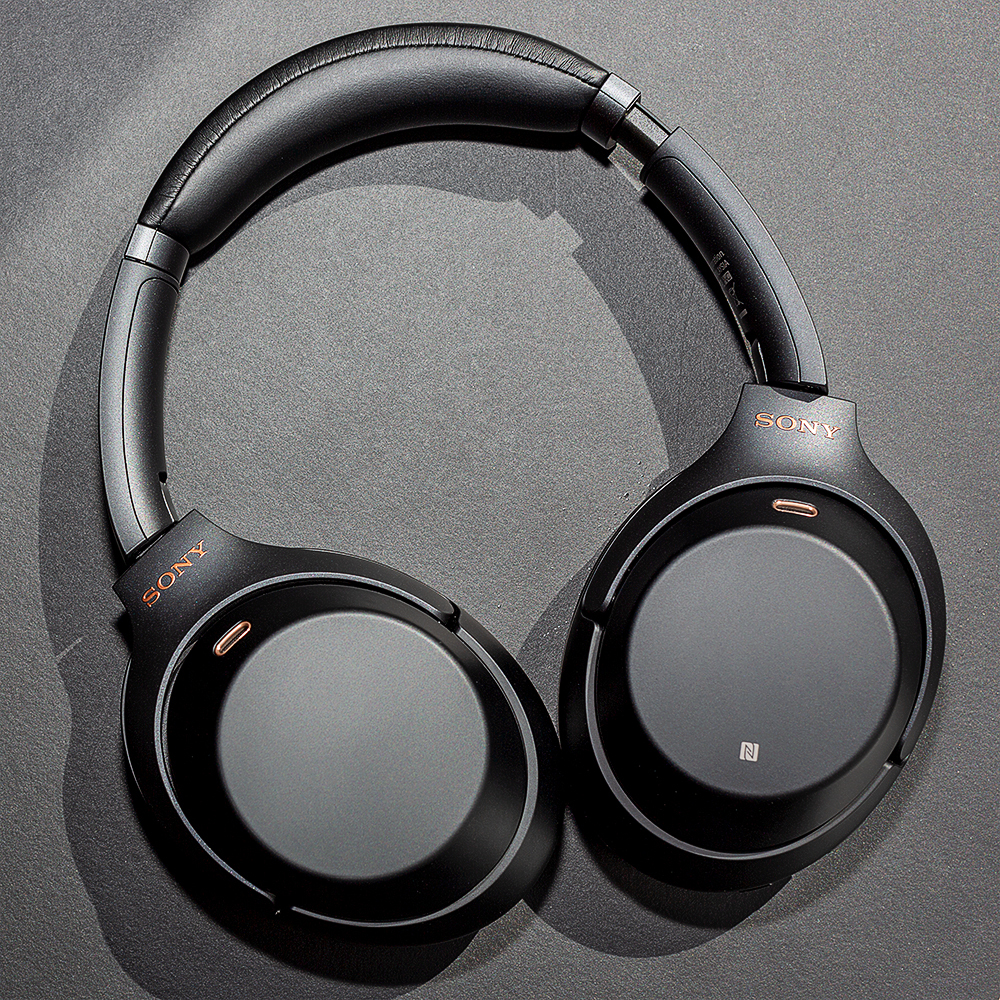
GOOD STUFF
- Extraordinary noise canceling
- Pillowy comfort
- USB-C charging and stupendous battery life
- Best sound from Sony’s 1000X yet
BAD STUFF
- Touch controls are still a pain
- Bass response could be cleaner and more defined
- Pads get sweaty on warm days
- Irritating blinking LED status light on left ear cup
Buy for $349.99 from Best Buy Buy for $348.00 from AmazonBuy for $349.99 from B&H Photo
Sony got two things very right with its first-gen 1000X headphones: the noise canceling and the fit. That’s why I find it surprising that the company has gone for a major redesign with its M3 generation: the physical design didn’t seem in need of much tweaking. But everything that Sony has changed has been for the better. It takes courage to tinker with a popular design and skill to actually improve on it.
EVERY CHANGE SONY MADE HAS BEEN FOR THE BETTER
Some 1000X M1 and M2 users had complained about the headband being susceptible to cracking (an issue I never encountered in months of contented use of those headphones), and they’ll be comforted to know Sony’s design shakeup has delivered a new headband with more padding. The updated headband has a more oblong shape than previously, which makes the headphones more discreet by fitting them closer to the wearer’s head. Even when they’re not being worn, the 1000X M3s are easier to grip and tote around because of their narrower shape, plus they still collapse down to fit into the provided compact carrying case.
:no_upscale()/cdn.vox-cdn.com/uploads/chorus_asset/file/12571443/jbareham_180823_2895_0052.jpg)
WHO IS NOISE CANCELING FOR?
Noise-canceling headphones used to be the exclusive preserve of frequent flyers who cared more about tranquility than sound quality or aesthetics. But, as the world has grown noisier and technology has gotten better, we all now demand and are getting noise-canceling cans that sound great and don’t look like a Volvo parked on your head. Whether at home, on the train, or in the office, noise canceling is fast becoming a must-have feature for over-ear headphones.
Bose and Sony are the premier brand in this space, but others like Bowers & Wilkins, Beyerdynamic, and Bang & Olufsen are offering compelling alternatives.
Somehow, Sony has reduced the weight of its latest 1000Xs while increasing the battery life. With noise canceling turned on, Sony now claims 30 hours of endurance, a full 50 percent more than the previous 20 hours. Even as someone who deals with the constant improvement of tech on a daily basis, I find this massively impressive. More on battery life later, but the new lighter weight truly elevates Sony’s headphones to the absolute top tier for comfort, whether you’re talking wired or wireless over-ear models. Bose’s QuietComfort 35s endure in popularity in large part because they’re so effortless to wear, and Sony goes that one notch higher.
When I reviewed the 1000X M2s, I noted that I wore them without a hint of discomfort for a full five-hour trip, and the M3s are even less intrusive. Sony has made the space for your ear inside the M3 pad a little deeper, and the pads themselves are designed to distribute pressure evenly. I’ve used these headphones across three different two-hour flights in the past week, and my colleague Chaim Gartenberg (who wears glasses) also found them exceedingly comfortable on the eight-hour journey from New York to Berlin. In fact, there’s not a member of the Verge staff that’s tried these headphones without falling in love with their fit and feel.
:no_upscale()/cdn.vox-cdn.com/uploads/chorus_asset/file/12571453/jbareham_180823_2895_0120.jpg)
Bose QuietComfort 35 II next to Sony 1000X M3.
Design critiques are hard to find, but I still have a few to offer. One is that the headband’s sizing adjustment slips out of position easily. If you’re super pedantic about setting your ideal fitting and never wanting it to change, that might irritate you. You don’t, however, have to be punctilious to be annoyed by the blue status LED on the left ear cup: this is a remnant of Bluetooth headphones of yore, and I’ve no idea why Sony keeps putting it on its latest headphones. Beyerdynamic recently showed off a much smarter design that put the LEDs on the inside of the ear cups. And the final issue I came up against with the 1000X M3s is that they do heat up and get sweaty on a warm summer’s day. This is the one aspect where I think Bose’s more airy QC35s have the edge over Sony and most of the rest of the competition.
PHYSICAL BUTTONS AND SWITCHES > TOUCH CONTROLS
I don’t expect everyone to agree with me on this point, but Sony’s touch controls remain the same as they ever were, and I remain fundamentally opposed to them. They’re reasonably functional: swipe up and down for volume, forward and back for track change, and double-tap the middle to pause, play, or pick up a call on your connected phone. The problem comes in when you’re rocking out to some track and you want to raise the volume but accidentally fast-forward to the next song. I did that more than once. There’s also a slight lag to the headphones recognizing double taps, leading to a recurring split-second of uncertainty anytime I want to control playback. Touch controls on headphones: cool when they work, infuriating when they don’t.
:no_upscale()/cdn.vox-cdn.com/uploads/chorus_asset/file/12571433/jbareham_180823_2895_0016.jpg)
:no_upscale()/cdn.vox-cdn.com/uploads/chorus_asset/file/12571435/jbareham_180823_2895_0029.jpg)
:no_upscale()/cdn.vox-cdn.com/uploads/chorus_asset/file/12571439/jbareham_180823_2895_0041.jpg)
We have to talk about Sony’s noise canceling. It’s unreal. It’s like noise insulted Sony a long time ago and Sony retreated to its dojo for many years, trained hard, and then came back to kick noise’s butt. Bose, Sennheiser, AKG, Bowers & Wilkins, Bang & Olufsen — name any company that produces noise-canceling headphones, and I guarantee you that its noise canceling is not as good as Sony’s. There’s a new dedicated chip just for processing the noise canceling inside the M3s, and I’m convinced that chip alone is worth the price of admission with these new 1000Xs.
THE NEW HIGH-WATER MARK FOR NOISE-CANCELING PERFORMANCE
Some headphones, I wear because I have to. (I know, it’s a tough job I have!) Others, even when I’m reviewing them, I just wear because I enjoy them. With the Sony 1000X M3s, the latter is universally true. They even nudged out my AirPods, which are the buds I usually opt to wear when I’m tired and intolerant of any discomfort in fit or sound. Sony’s cans give me the extra benefit of obliterating the noise around me — which is an advantage anyone can appreciate in almost any circumstance.
As I write this review, I can’t hear my fingers typing on the Apple Magic Keyboard. Or the creaky floor disturbed by my upstairs neighbors. Or my other neighbor’s kids playing in their backyard. It’s just silence. It’s bliss.
:no_upscale()/cdn.vox-cdn.com/uploads/chorus_asset/file/12571437/jbareham_180823_2895_0037.jpg)
The sound of the M3s marks an important improvement over the M2s. I found Sony’s prior edition deadened the vocals and rendered music unexciting. This update fixes that and goes a step further in delivering the most coherent, pleasing, and simply best sound that Sony has produced with its 1000X series. The highs are present but restrained, the vocals and mid-range have been brought back to life, and the bass is voluminous. Sony’s tuning is like a big, warm hug.
WHERE THE MUSIC CALLS FOR A PENCIL LINE, SONY USES A THICK MARKER PEN
The bass is technically bad: thick and distorted. Where the music calls for a pencil line, Sony uses a marker pen. Bass-heavy tracks like Tricky’s “Somebody’s Sins” will even make the headphones gently vibrate. But you know what, every other headphone maker in this class also boosts the bass — and what’s more, I like it. I don’t need to watch Roger Federer play to enjoy a game of tennis, and I similarly don’t need the purest and truest reproduction of a song to bop my head to it. Sony is beating Beats at its own game here, because I much prefer Sony’s M3 sound to that of the Beats Studio 3 or Solo 3.
The Bowers & Wilkins PX is an intriguing rival to the Sony 1000X M3, because, in my estimation, it still has a more incisive and exciting sound. But a pair of PX cans costs $390, weighs significantly more, doesn’t fit everyone as well as Sony’s alternative, and doesn’t collapse down. The things that were forgivable about the PX last year are less so now that Sony’s updated 1000Xs are out. This is a general theme when comparing the M3s against their most direct rivals: Sony’s fast rate of updates is keeping it on the cutting edge of a fast-moving market, and companies like Bose are starting to fall behind.
:no_upscale()/cdn.vox-cdn.com/uploads/chorus_asset/file/12571431/jbareham_180823_2895_0005.jpg)
There’s great synergy between Sony’s unmatched noise canceling, thoroughly optimized physical design, and friendly audio tuning. Because of the powerful noise isolation, I don’t ever need to turn the volume up to high levels, and the blank canvas of background silence renders all music more realistic, nuanced, and detailed. Sony complements this by doing some digital processing to artificially expand the soundstage of its headphones. It seems like the 1000X M3s detect where in the mix each sound and instrument belongs, and if it’s on the left or right side, the headphones push it out a little bit further to give the impression of depth and expanse. It’s a neat trick. Combining the comfortable listening experience with the comfortable fit just makes these headphones extremely inviting.
RANGE ANXIETY IS NOT AN ISSUE WITH THESE HEADPHONES
Sony’s claimed 30-hour battery life is, in all honesty, not something I’ve been able to fully test. Do you know how long 30 hours is when using headphones conventionally? It’s been 10 days since I fully charged the 1000X M3s, in which time I’ve used them on three flights, daily walks, and casual listening at home, and they’ve still got 50 percent of their battery left. Even if you use these on your daily commute to and from work, you’re likely to go well over a week before needing to recharge. It’s safe to say that range anxiety will not be an issue with these headphones.
:no_upscale()/cdn.vox-cdn.com/uploads/chorus_asset/file/12571447/jbareham_180823_2895_0083.jpg)
I have to commend Sony for making the glorious switch to USB-C for its charging port. Most headphone companies are still dragging their feet about this change, with one recently telling me that USB-C costs four times as much as MicroUSB charging. But Sony’s 1000Xs are competing against premium headphones, where there’s obviously enough padding in the profit margin to make the upgrade. On the rare occasions when I need to recharge the M3s, I no longer have to hunt around for my one legacy cable. I can just pop my phone’s charger into them. If you use Sony’s charger, you can also get fast charging that will give you 5 hours of music playback from just 10 minutes plugged in. The only thing missing here is the ability to plug in a digital music source via the USB-C port, for a wired connection for those among us whose phones lack headphone jacks.
EASY TO RECOMMEND, HARD TO PUT DOWN
The 1000X M3s automatically switch themselves off after five minutes of inactivity, which is cool for energy preservation, but a bit irksome if you just want to use their noise canceling without playing any sound. (Update: as readers have pointed out, Sony’s companion mobile app lets you disable this feature). Sony has also brought back its ear-cupping gesture, which lets you cover the right 1000X cup with your hand to activate the built-in mics and hear the ambient sound around you. Speaking of microphones, calls with the 1000X M3s are clear and well handled, plus the headphones have a trigger button to launch Google Assistant or Siri on your paired smartphone, if you’re into that kind of thing. Wireless connections are also top notch, with zero dropouts or issues during my testing. Just that silly blinking LED light.
:no_upscale()/cdn.vox-cdn.com/uploads/chorus_asset/file/12571451/jbareham_180823_2895_0090.jpg)
Owners of the 1000X M1s or M2s pondering whether there’s enough here to justify an upgrade should ponder no more. Sony’s 1000X M3 is meaningfully better than both its predecessors as well as the vast majority of other wireless, noise-canceling headphones.
It’s remarkable to pick up these headphones, weigh them in your hand, and consider all the processing and wireless technology contained within them. For years, the preemptive grievance with wireless cans has been the regular need to recharge them and the added heft of having to carry batteries inside them. This pair of Sony headphones puts an end to those complaints.
Even as Sony ascends to the throne of the undisputed noise-canceling champion, compelling rivals are already in the works. The title of best pair of headphones in this class seems to be changing hands every few months, which is a function of the category evolving and improving faster than anything else in tech. Yes, that means any purchase you make today is liable to be surpassed by an even better model pretty soon, but it also means we’re all getting better choices when going out to get our next pair of headphones.
보기
(
0) 명이(가) 좋아요를 눌렀습니다.
(
0) 명이(가) 댓글을 달았습니다.
로그인 후 확인하실 수 있습니다. 로그인
Sony WH-1000XM3 Bluetooth Headphone Review – STILL the King of Noise-Canceling
(0) - (0)
Sony WH-1000XM3 - 2018.09.19
#sony
#wh-1000xm3
#noiseCanceling
#Bluetooth
#Headphone
Sony WH-1000XM3
보기
보기 AMP
Sony WH-1000XM3 Bluetooth Headphone Review – STILL the King of Noise-Canceling
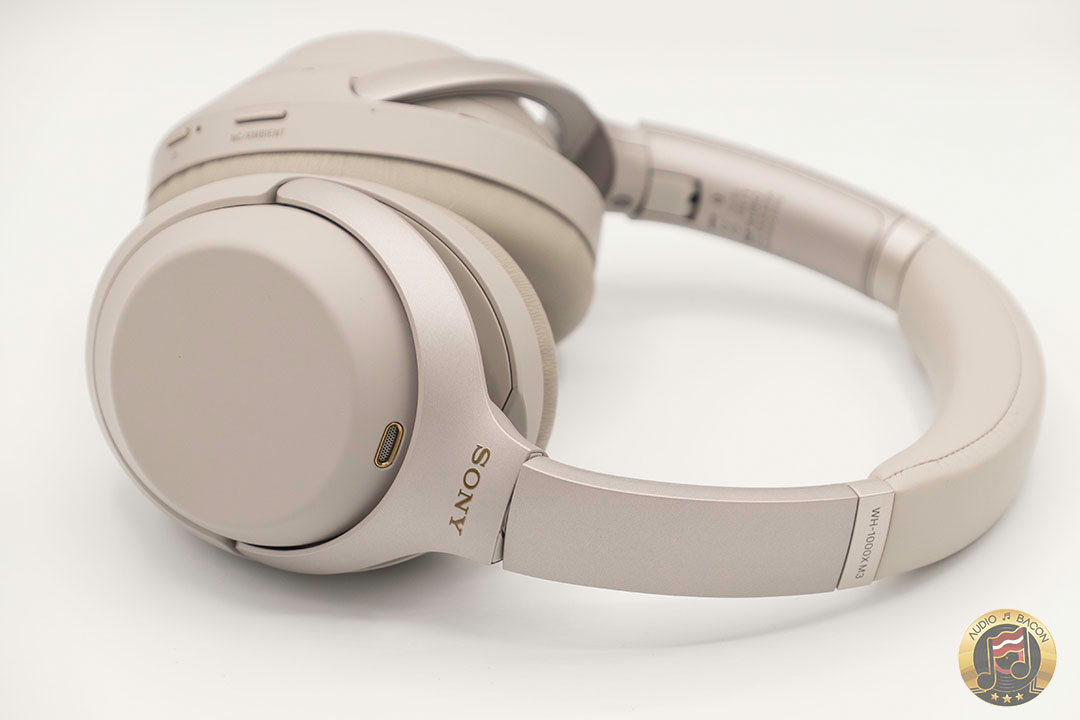
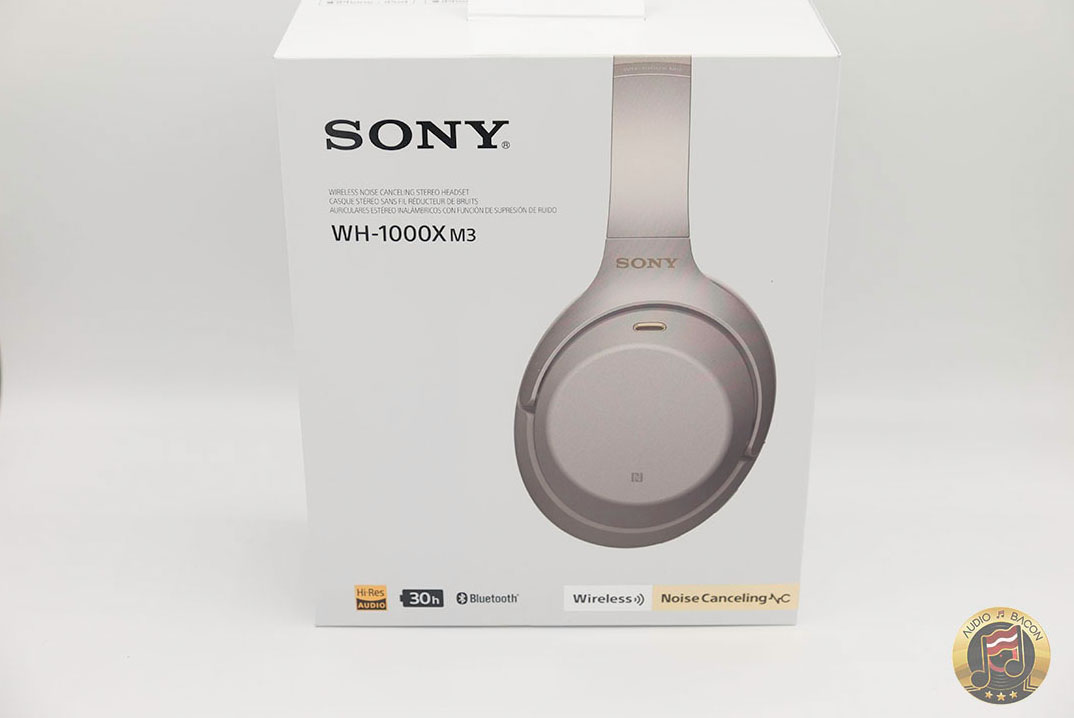
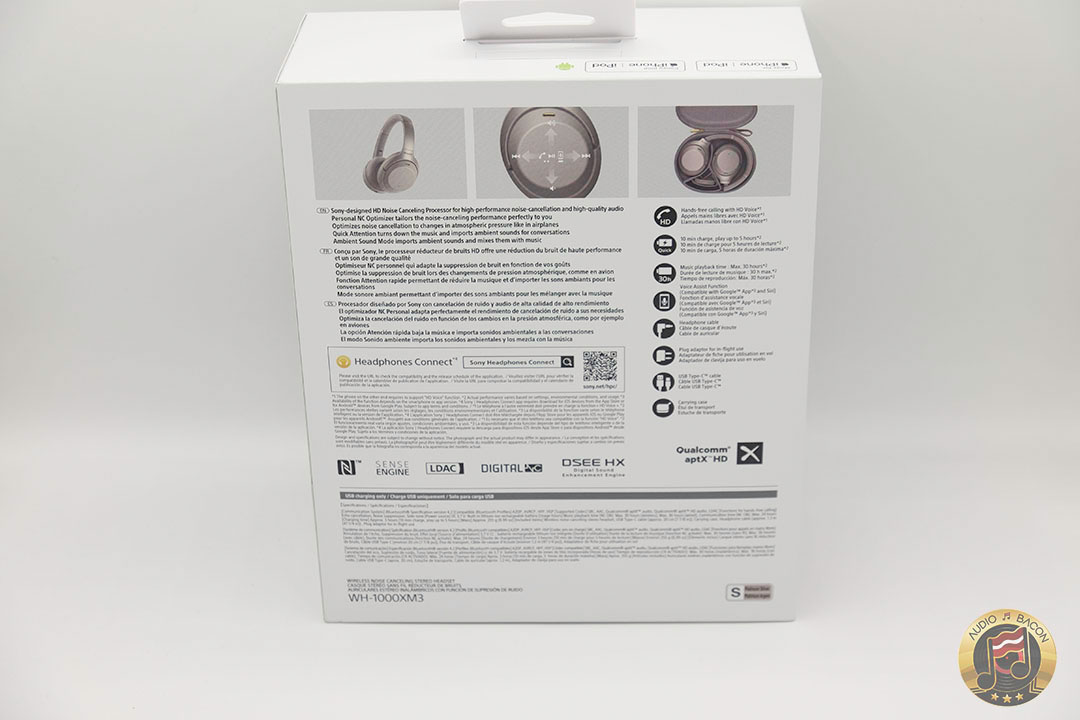
There seem to be two major camps when it comes to Bluetooth headphones: Bose or Sony. Let’s get this out of the way.
The Bose QuietComfort 35 IIs are surely comfortable but the tonal balance always sounded a bit uplifted to my ears. I feel the Sony WH-1000XM2 has more accurate tonality but imaging is a little messy and it lacks some shine up top. Regardless, the Sonys were still wonderfully engaging and definitely more aligned with my palate.
When compared directly with the Bose noise-cancelers, I’ve always felt the Sonys had a more engaging and richer musicality. As for comfort, I’ve never had issues with long listening sessions on the M2. The noise-canceling performance was also more than sufficient in all scenarios.

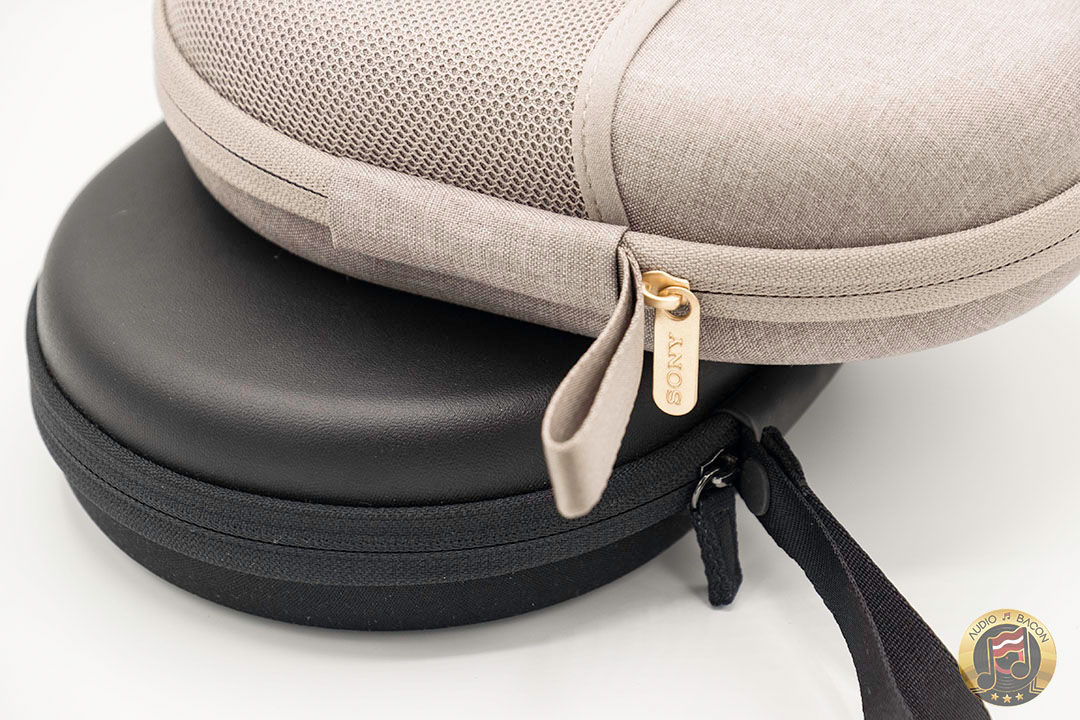
So when Sony announced the WH-1000XM3 ($349.99), my first thought was “It uses the same drivers? It can’t be that much better. ” Well, it turns out Sony has been busy cooking up something really special. On paper, the improvements over the M2 seem to be substantial. I must commend Sony for their attention to customer feedback and constantly improving the listener’s experience.
In any case, the proof is in the listening. Let’s get to it.

I could still hear voices!
There’s a misconception that noise-canceling works well across all frequencies. I’ve recommended the Sony WH-1000X series to many friends. Some have complained about how it doesn’t filter out voices or higher frequency sounds. Why is this the case?
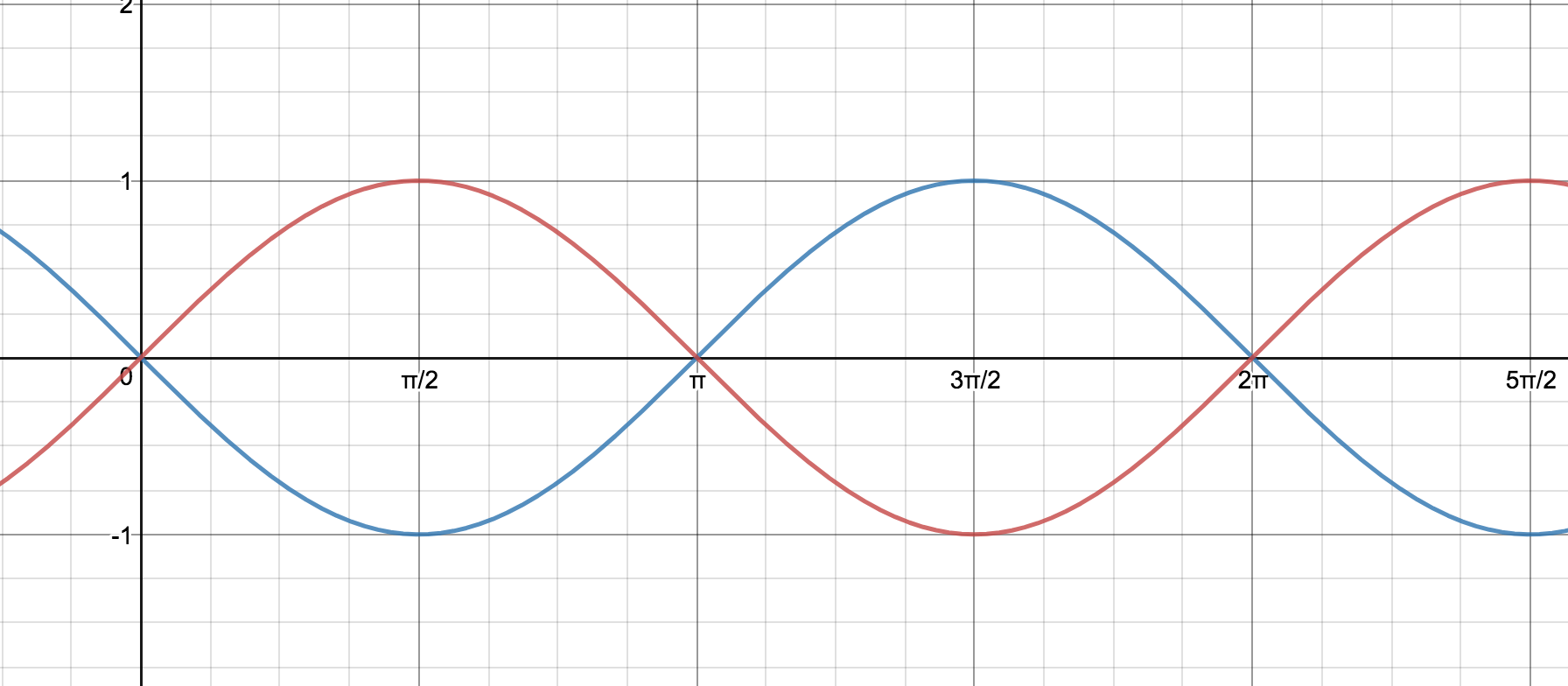
Put simply, these headphones use microphones to record the ambient sound, offset the phase by 180 degrees, and applies it to the output signal. For example, if the blue signal above were the ambient noise, the red would be the offset generated by the headphones – which “cancels” out the sound.
Simple enough – what’s the big deal? The problem is that ambient noise isn’t simple. They’re not perfect sine waves.
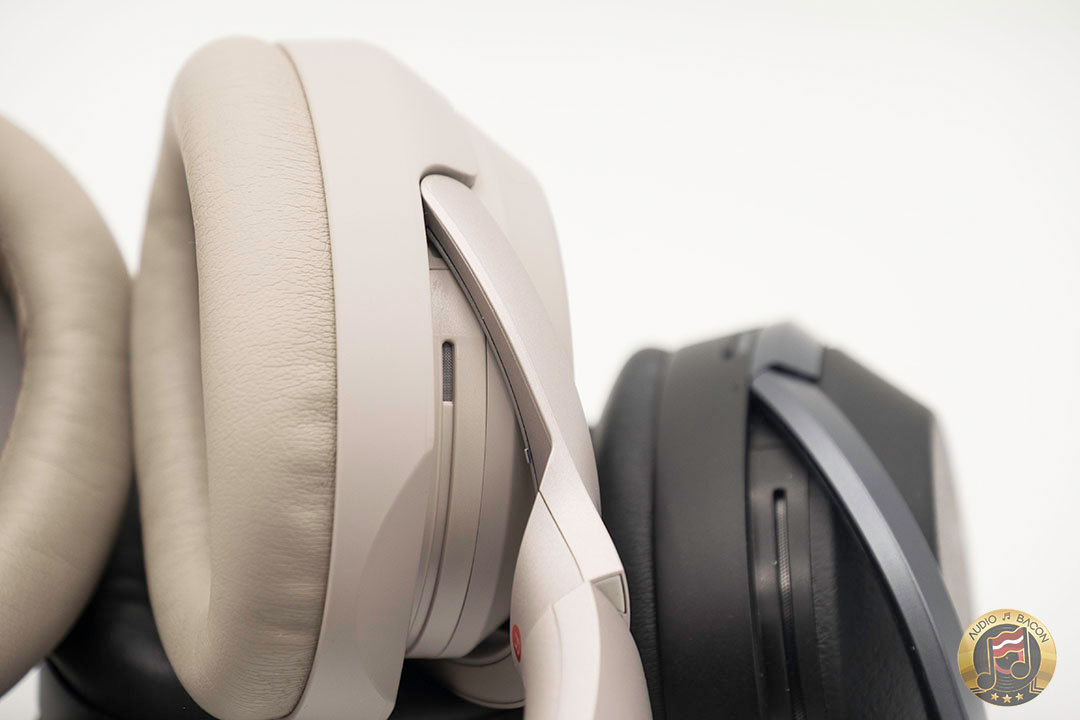
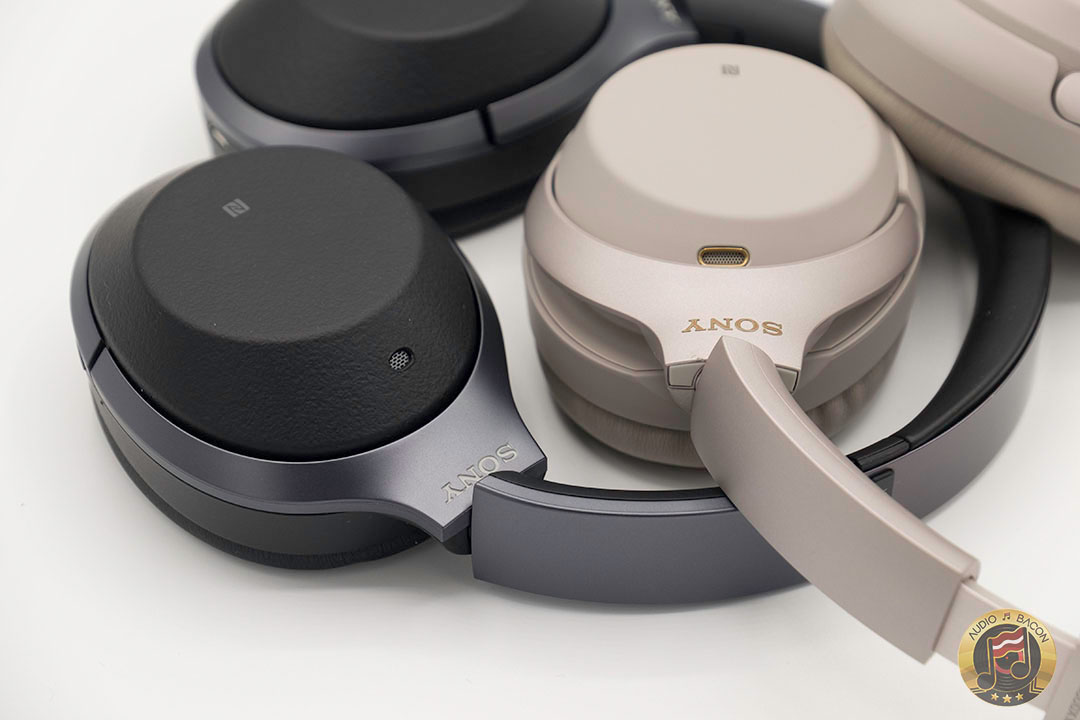
Another issue is timing. The noise-canceling process introduces latency between the recording (of the noise) and the actual playback of music. This latency isn’t as important in the lower frequencies (traffic, train, air conditioner, etc) and hence easier to “cancel out.” Higher frequencies are inherently more susceptible to timing errors and require more care to manage and control. That’s why you’re still able to hear voices and higher-pitched sounds with even the best ANC headphones.
Bottom line: Noise is complex and the noise-canceling process isn’t perfect. A compromise has to be made to preserve as much musicality as possible.

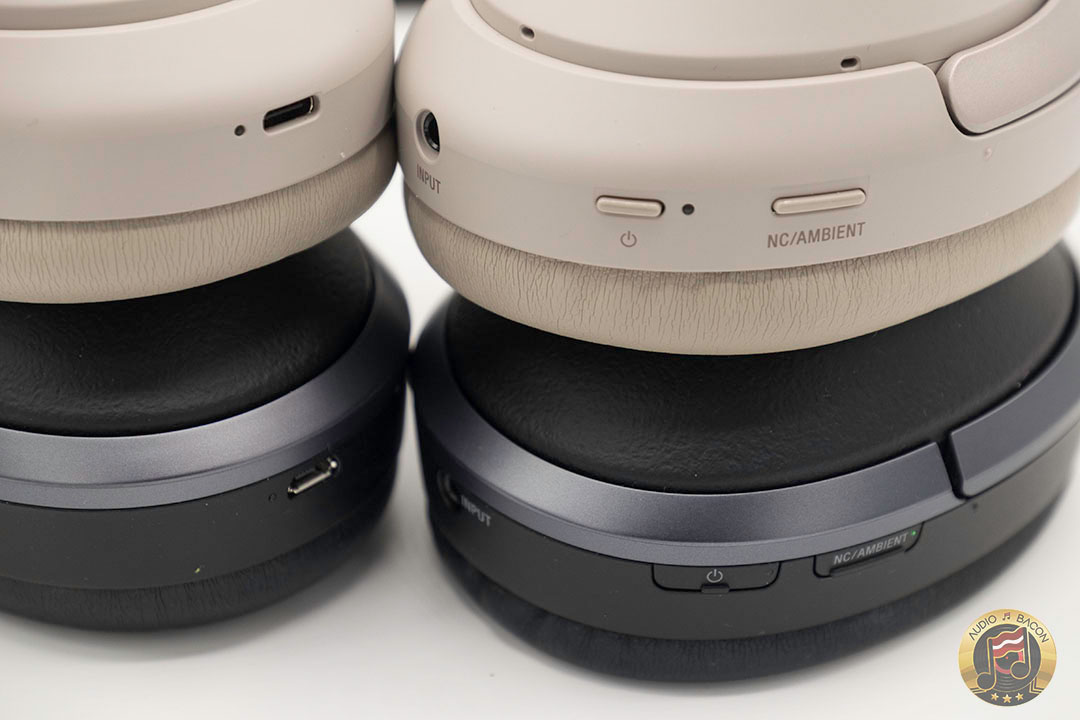
Build, Features, & Comfort
Encompassing all the features of M2 (including the same drivers), Sony was somehow able to go H.A.M. on their new WH-1000XM3 headphones.
-
- New HD Noise-Canceling Processor QN1 – Apparently the most advanced noise-canceling chip on the planet.
- Quick charge USB-C – 5 hours of use with a 10-minute charge! If you do the math, you’ll get a full charge in an hour. Crazy.
- More cushion: Thicker and deeper earpads and headband for extra comfort. It also provides a better seal over M2.
- Improved lifestyle case – A more elegant, fabric carrying case with compartments to actually put your cables.
- Disable Auto Power Off – In situations where you want to block out the world without having the headphones connected to a device.
- Weight – Physically lighter than the M2. It’s noticeable.
- Slick earcups – Smoother, untextured earcups. Some may prefer the “luxury” feel of the M2 with swiping. After extensive listening, the new smoother earcups seem more consistently responsive.
- Larger power and ambient buttons – More prominent power and ambient buttons. Makes it easier to differentiate and access when headphones are worn.
- Improved “Quick Attention” mode – This mode allows you to palm the right earcup to allow sounds from your environment to pass through. Seems to work at a much more natural volume vs. the M2. Which makes it less awkward about not taking your headphones off when responding to someone.
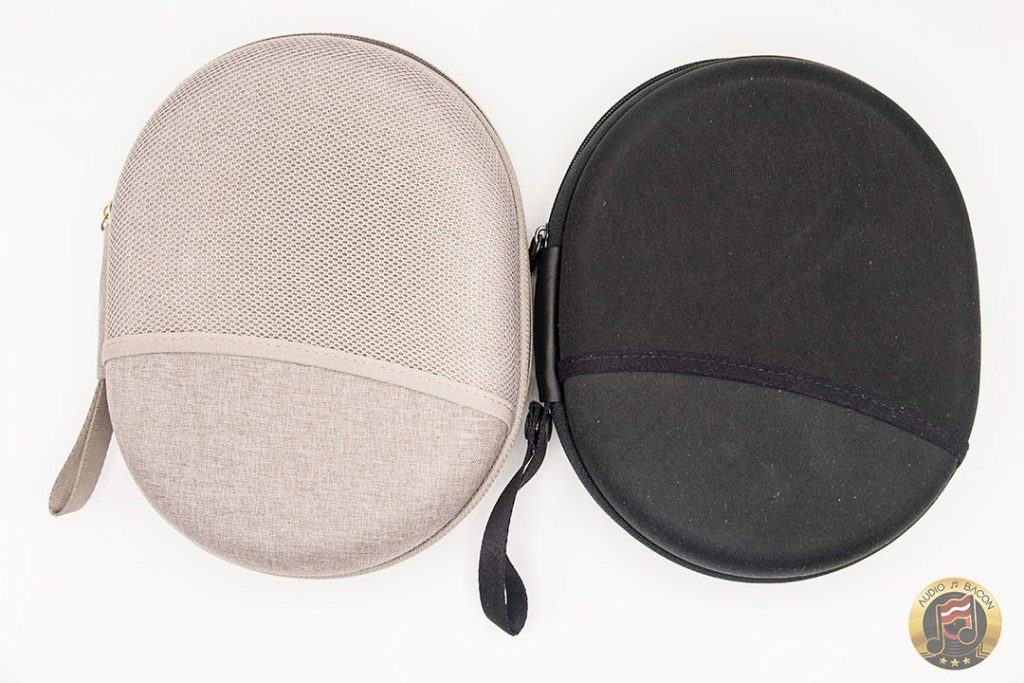
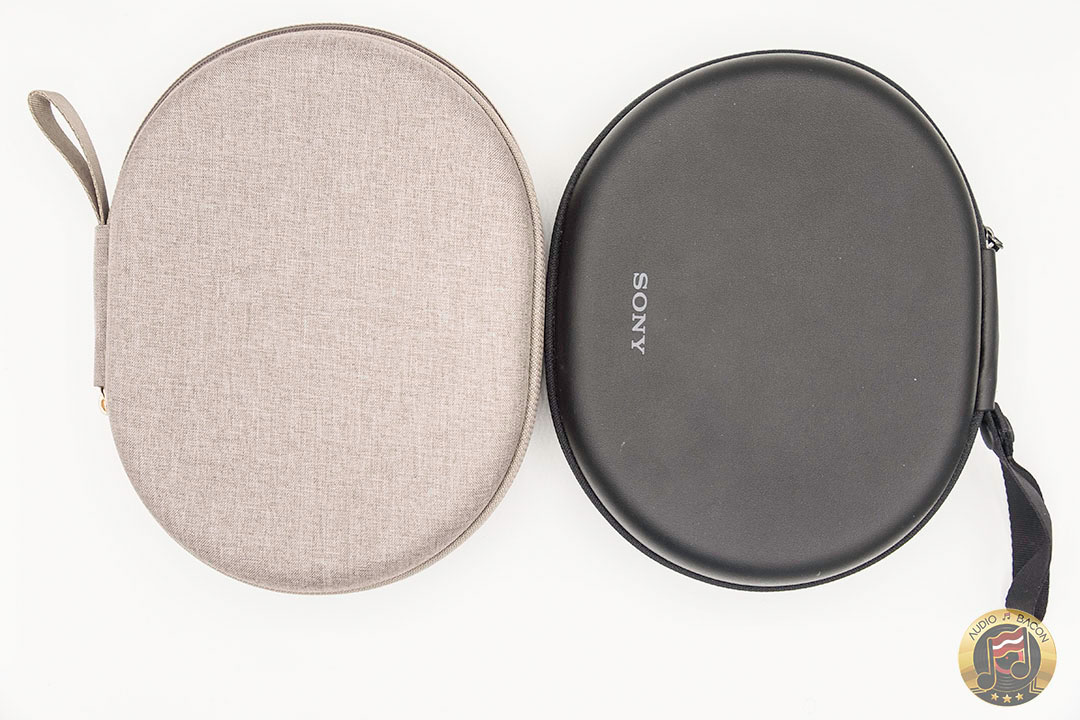
As with the WH-1000XM2, you’ll still get:
- Power on with NFC – Just tap your phone to the earcup and the M3 powers on automatically.
- 30-hour battery life – Make sure you don’t over-discharge by charging it up at least every 6 months.
- Upscaler – DSEE HX and LDAC
- Atmospheric Optimizer – Atmospheric pressure affects sound quality. Luckily, it has a built-in barometer that adjusts the noise-canceling algorithm to compensate for this.
Controls
Like the M2, the M3 has the same convenient touch interface (double-tap to play/pause, swipe to adjust volume/tracks, cover for “Quick Attention”t). It does feel different on the fingertips with the new untextured earcups but responsiveness seems to be just as responsive. This feature beats holding onto buttons and fumbling through your phone. Also, I’ve found myself swiping the right earcup on other headphones I’ve reviewed. Which only reaffirms it’s a feature I can no longer live without on a Bluetooth headphone.
I rarely used the Ambient modes with the previous models so the inclusion of Google assistant is quite useful. I’ve used it to ask random questions and to turn off the lights in the apartment. Most importantly, I’m able to ask Google Assistant to play specific playlists on Spotify. Too nice of a feature.
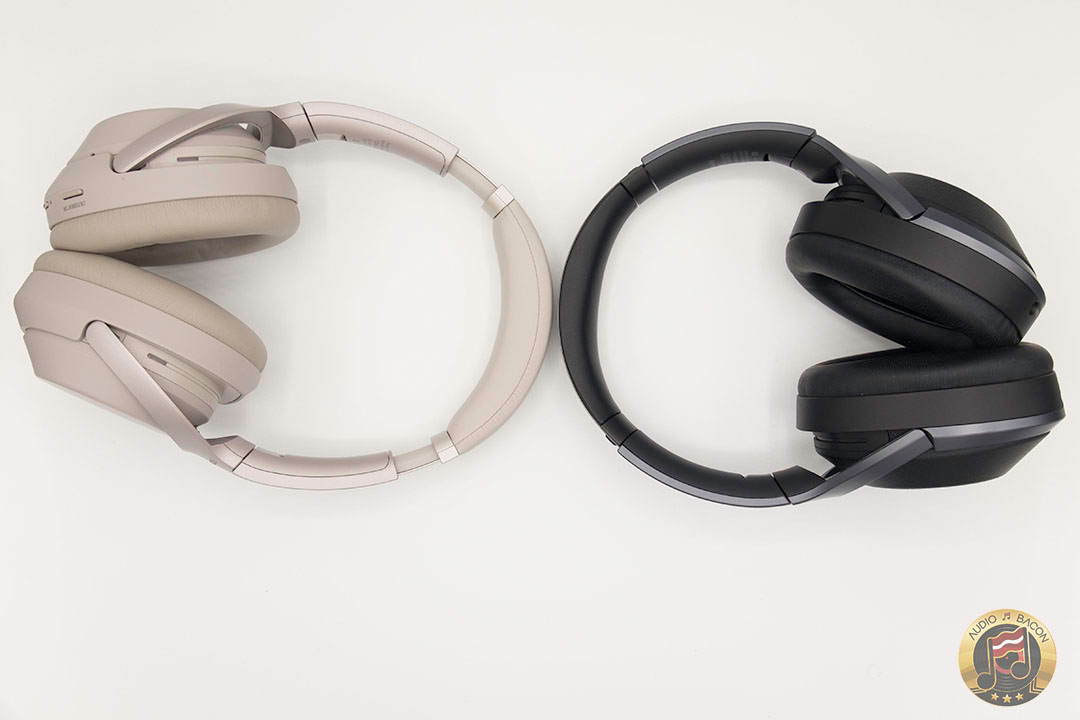
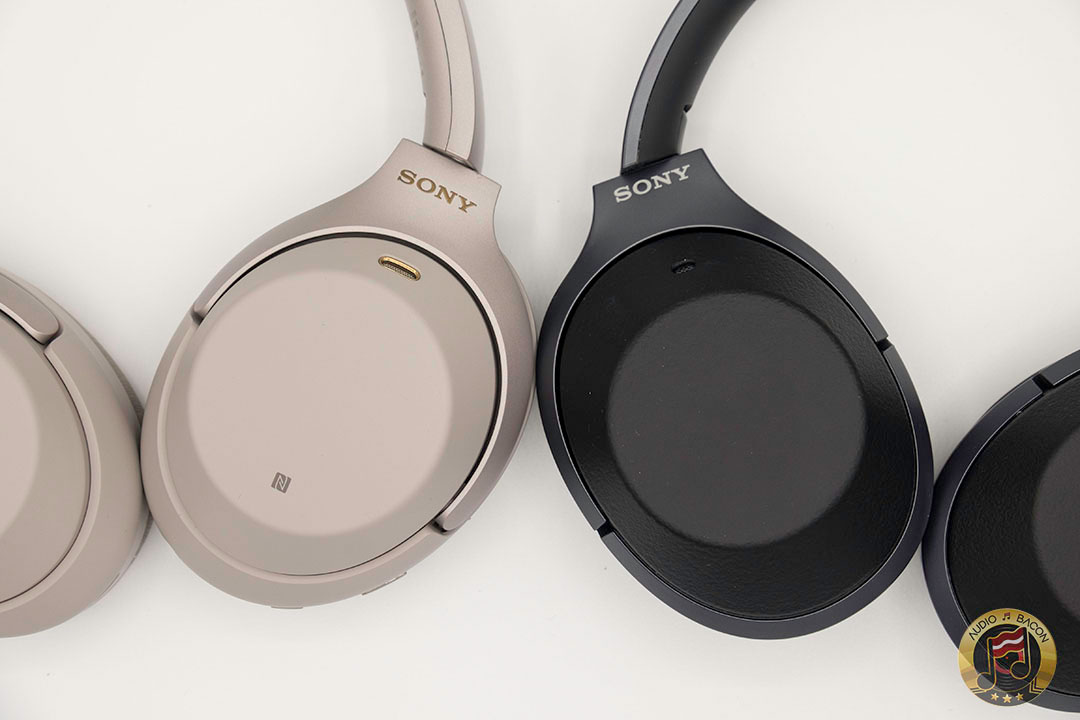
Comfort
In comparison to the M2, the M3 is much more comfortable. There’s a more balanced and evenly distributed comfort around the head. The rigid presence of the headband is much more noticeable with the M2. The M2 is also more “earcup focused” in comparison to the M3, which might provide discomfort over long-term listening for some.
I also didn’t have any issues with heat or sweat with the M3. The lighter weight of the M3s was also apparent over the M2 and very much appreciated.
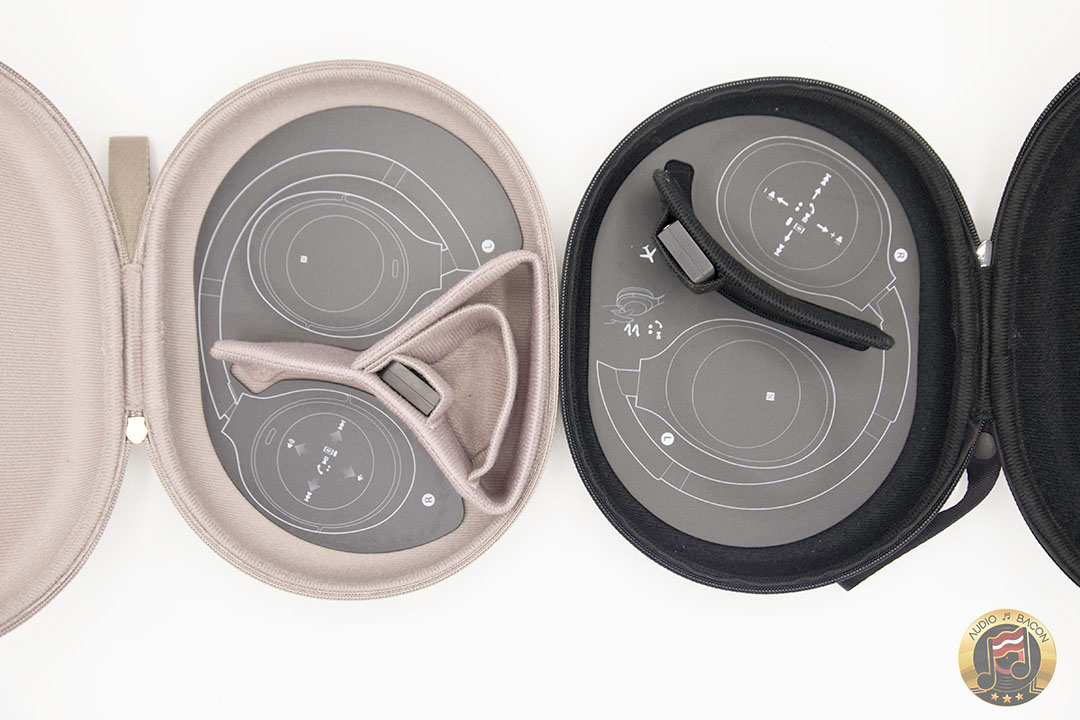
Active Noise Canceling (ANC)
The ANC performance on the M3 is far better than the M2, especially in the lower frequencies. In some cases, the M3 completely eliminates all hums and rumbles while the M2 will allow some of that sound to pass through.
As a real scientific test, standing next to a range hood on full blast, I’m only able to hear a dull, higher frequency sound with the M3’s ANC – all low frequencies are completely inaudible. With the M2, you still know you’re listening to a range hood. There’s still a low-level whirling hum, along with some of the high-frequency shrieks.
As for voices, you’re still able to hear some conversations albeit at a reduced level (less warm). It’s not a subtle improvement over the M2 in lower frequencies. Consequently, it seemingly emphasizes the higher frequencies (since it does a great job of removing the low end). So yes, you could still hear voices but the ANC is removing much more of the ambient noise over the M2.

Phone Call Quality
I rarely speak to humans on phone but for the sake of this review, I called up a local pizza shop. They said they were able to hear me clearly and didn’t hear any feedback. I received my pepperoni, bacon (duh), kale pizza without any miscommunication. Keep in mind this is in an office setting.
There have been complaints from customers who experienced echo and vocal feedback when making calls. When I made an outdoor call, I didn’t experience this. Granted I live in Los Angeles, where there’s no wind. YMMV.

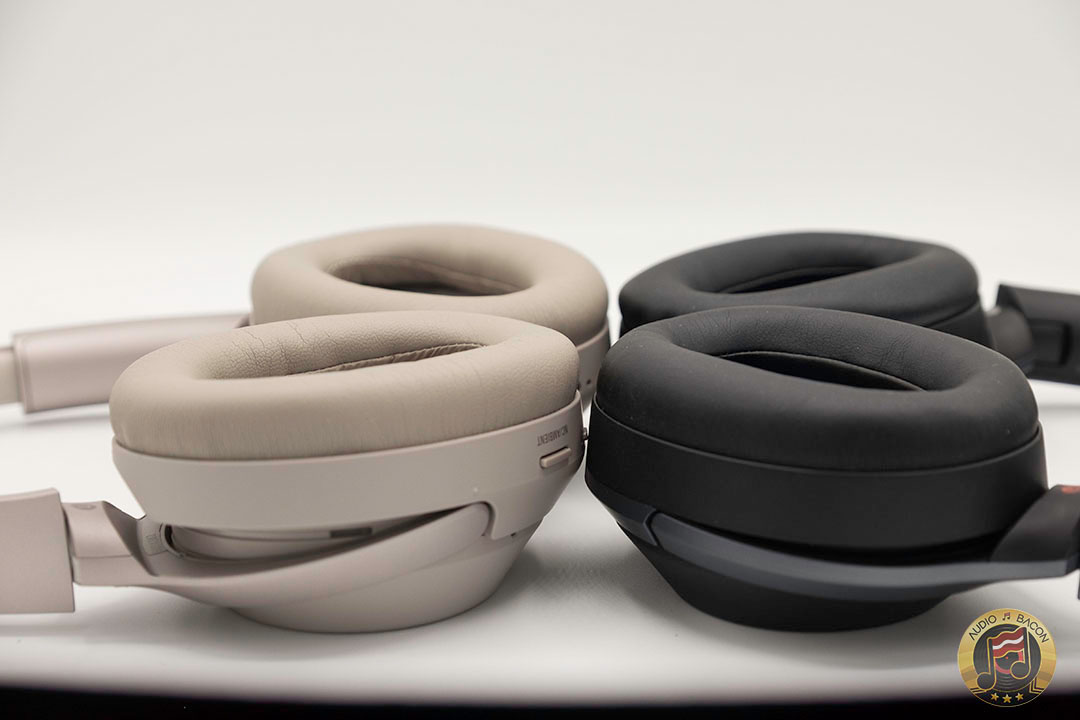

Setup
- Google Pixel with Android Pie
- LDAC – Sounds better than AptX HD to my ears and has fewer dropouts over longer distances.
- DSEE HX – With this option disabled, the overall sound is duller and less refined. Although I prefer this option off on the M2, it seems to sound better enabled with the M3. Music goes deeper and is more fleshed out. Bass is also tighter, more dynamic, and punchier. Overall more musical textures, shape, and smoothness. There is a slight edge in the mids, however.
- Sony Headphones Connect app – I highly recommend installing this app for additional features, customizations, and upgrades. You’ll also need the app to adjust the “Ambient” switch between Google Assistant and Ambient mode. It also makes it easy to tailor the sound to your taste while being able to control the music directly from the app (really useful for A/B testing).
- Headphones Connect App
- Adaptive Sound Control
- Ambient Sound Control
- Personal ANC Optimizer
- Atmospheric Pressure Optimizer
- Surround Position Control
- Equalizer
- Sound Quality Mode – Sound Quality vs. Stable Connection Priority
- DSEE HX
- Ambient button function
- Auto Power Off (NEW)
- NFC – I LOVE this feature. Just tap the Pixel to my headphones and I’m connected. Also made it easy to switch between the M2 and M3 for comparisons.
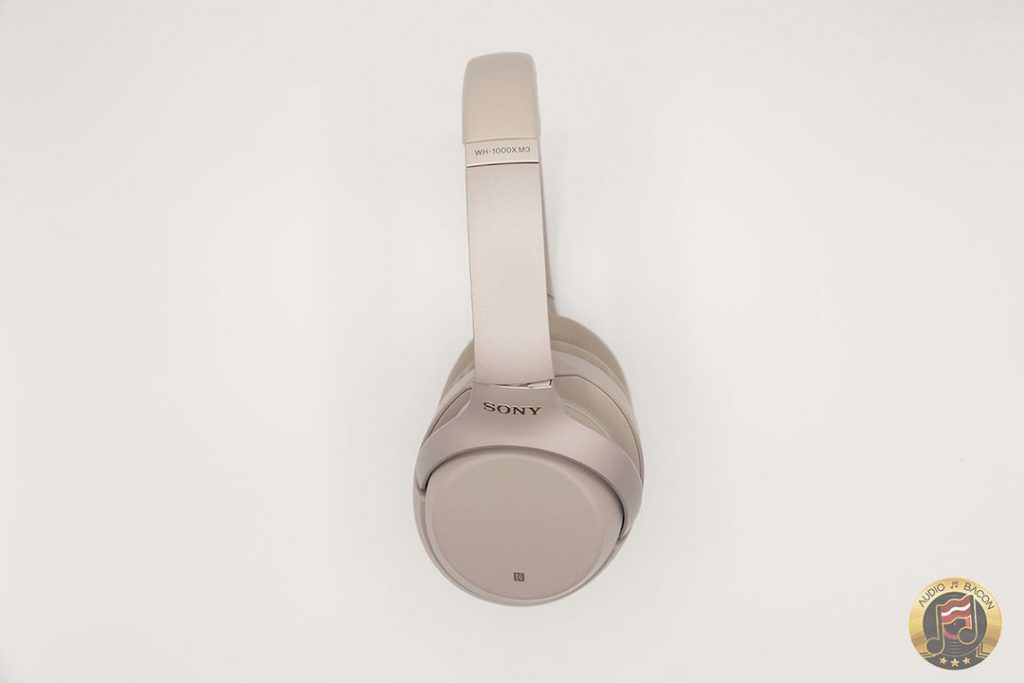
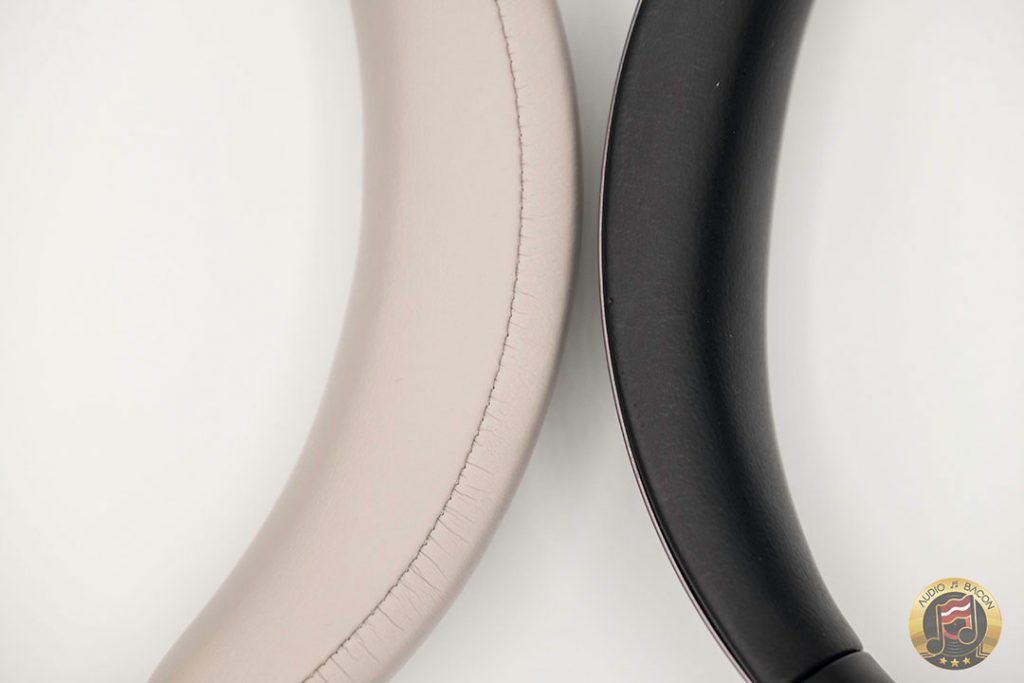
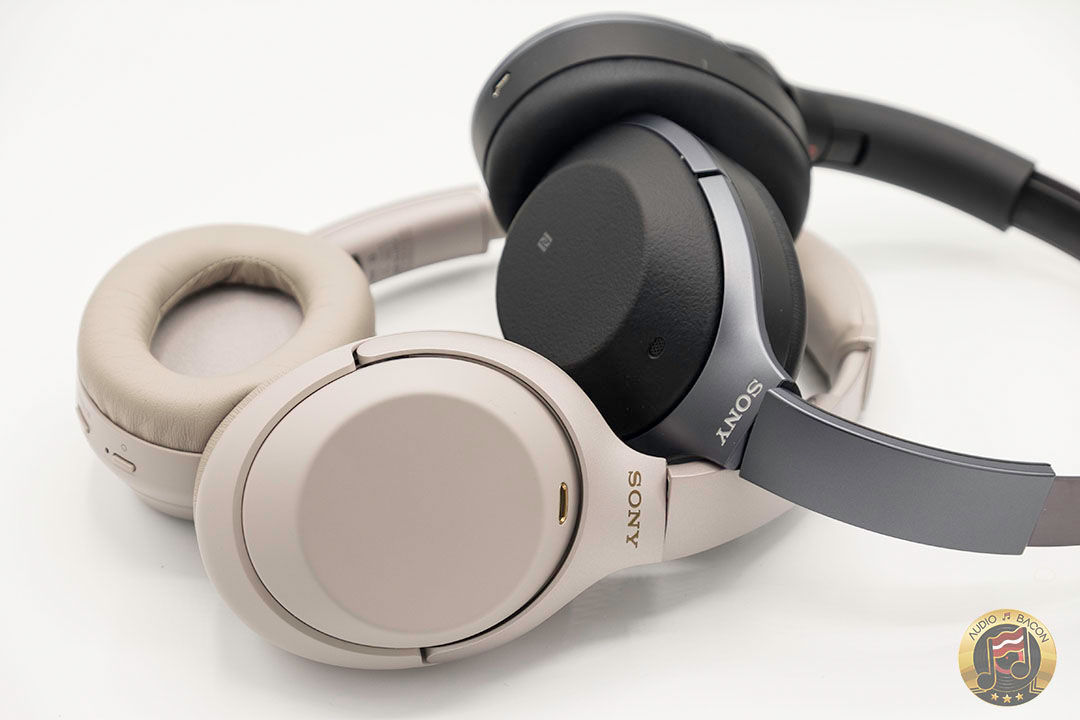
Sound
I’ll be directly comparing the M3 with the WH-1000XM2.

Kina Grannis – Can’t Help Falling in Love (Crazy Rich Asians)
I’ve been a huge fan of Kina Grannis since her early YouTube days and was happy to see her make it onto the big screen. This track has compelled so many sniffles and teary-eyes in the theater. Me? I’m too jaded to be emotional.
The WH-1000XM3 is able to finely delineate the finger and fretwork on the guitar. There’s also more contrast and gradations in vocals and violins. The M3 layers out the soundscape and rhythm in a more dynamic and musical way. It’s also much quieter.
The M2 sounds a bit more smeared and thick in comparison. The strings and voices merge tonally and dimensionally. The M3, on the other hand, images instruments with pinpoint precision and a focused central voice. It has a better grip over the acoustic elements and maintains integrity in the details. Overall, the M3 presents a nicer balance of clarity and warmth.
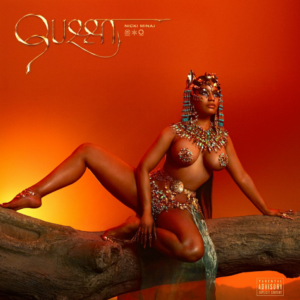
Nicki Minaj – Chun-Li (Queen)
Off the bat, the M3 is more intelligible and has truer timbre. Gongs and horns have more refined decay and flair. The bass loops are more pronounced and layered out separately. Focus and individualization of acoustic elements are far better reproduced on the M3 over the M2.
The M2 does have a more warmblooded sound, which does make her voice more convincing as far as tone. But the overall sound is more diffused, stretched, and grainy. Bass is also much looser on the M2.
The M2 is, in a way, more forward and in some ways – confused. The M3 has more of that “Hi-Fi” sound with better technicals and refinement. Something even a die-hard audiophile could appreciate.

Rage Against the Machine – Take the Power Back (XX 20th SE)
The M3 has much better bass definition and dimensionality over the M2. The intro electric guitar has more “tickle-factor,” twang, and palpable creaks over the M2. The M2 sounds warmer but more bloated and hazy. Transients aren’t as clean or crisp. Timbre is also more realistic on the M3.
The M3 is also more resolving of lower level nuances and details – in both vocal exertions and instrumental articulation. You just hear more of the intent of the music without its message being lost. The M2 has more grunt and weight but isn’t as transparent, controlled, or deep. Although I do enjoy the warmer tone of the M2, the spacious and dynamic sound of the M3 is more captivating.
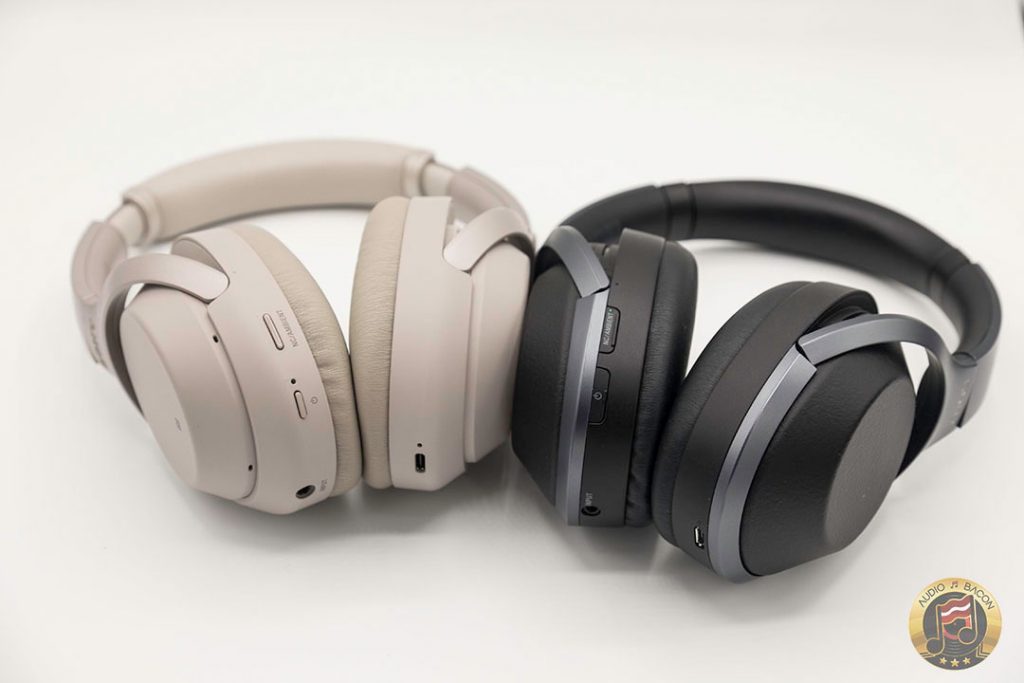
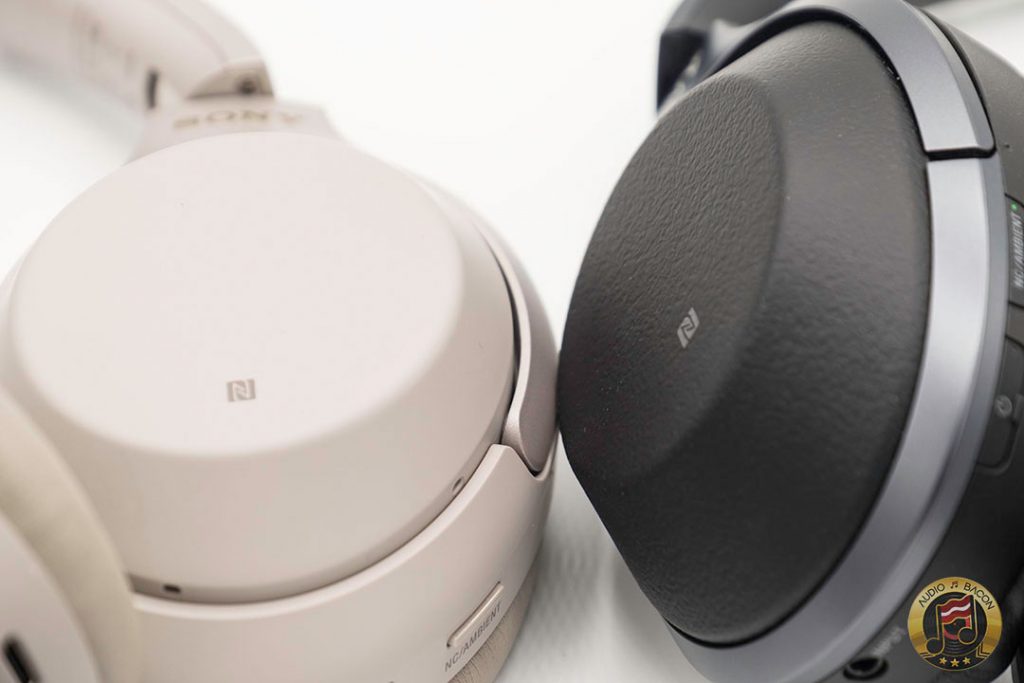
Final Thoughts
Trust be told, Bluetooth audio technology is more about convenience than sound quality. Most hardcore audiophiles will still plug in their Bluetooth headphones to squeeze out that extra performance. Fortunately, the Sony WH-1000XM3 provides both qualities – in wireless form.


In comparison to the WH-1000XM2, the WH-1000XM3 possesses better clarity, dynamics, acoustic layering, and a larger soundstage. It’s not as lush or forward as the M2 but has a tighter and smoother articulation. The M2 sounds more “robotic”, flatter, and unnaturally stretched in comparison. With the M3, voices and instrumentals are precisely layered out and sound more consolidated and contoured. Bass definition is also tighter, more dynamic, and more refined.

The biggest difference between the two is probably imaging. The M3 gets me closer to what I hear from a good 2-channel setup. The M2 is fuzzier around the edges and has a more splashy and loose sound. The M3 exhibits a clearer and more delineated sound across all types of recordings. For those looking to upgrade from the M2, it’s a no-brainer.
In addition to a more “audiophile sound,” we have a lighter headphone that’s more comfortable, fast-charging USB-C, intuitive and convenient controls, LDAC, Google Assistant + Spotify, and superior noise-canceling. I also dig the copper accents. The Sony WH-1000XM3 is simply the ultimate portable Bluetooth, noise-canceling headphone.
(
0) 명이(가) 좋아요를 눌렀습니다.
(
0) 명이(가) 댓글을 달았습니다.
로그인 후 확인하실 수 있습니다. 로그인
Sony Continues to Drink Bose's Milkshake
(0) - (0)
Sony WH-1000XM3 - 2018.09.19
#sony
#wh-1000xm3
#noiseCanceling
Sony WH-1000XM3
보기
보기 AMP
If you listen to what Sony says, you could assume that the third generation of the Sony 1000X wireless headphones is all about better noise canceling. This wouldn’t be a wrong assumption. The company managed to make its famous noise-cancelling headphones cancel even more noise. But what caught my attention is how much more comfortable they are. This is a sassy upgrade, since Sony’s major competitor, Bose, put “comfort” in the name of its headphones.
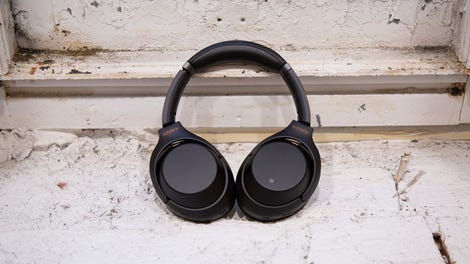
Sony MH-1000XM3
WHAT IS IT?
Wireless noise-canceling headphones
PRICE
$350
LIKE
Best-in-class noise canceling, very comfy
NO LIKE
Struggles with connecting to multiple devices
Put simply, Sony is taking another big gulp of Bose’s milkshake. Nearly a year ago, I declared that Sony’s noise-cancelling headphones had bested the long-standing category leader: the QuietComfort 35 II wireless headphones. The latest iteration of those Sony headphones is the WH-1000XM3. (The last ones were called the WH-1000XM2, so you see, there is a little bit of rhyme and reason to Sony’s model naming scheme.) Sony never told me that it wanted to make a better version of Bose’s headphones, but after spending two weeks using the new model, it’s obvious that Sony does keep giving people more good reasons not to buy Bose.
Let’s start with the adaptive noise-cancelling technology. For the third generation 1000X wireless headphones, Sony built something called “HD Noise Canceling Processor QN1.” Unlike previous models which integrated noise cancelling into the audio processor, this separate processor works on its own to identify and filter out more background noise than before. Through an app, you can also choose to let some of that noise back in. Say you’re in an airport and want to hear the flight announcements but keep the rest of the sound garbage away. The new QN1 chip is designed to do that better.

Photo: Adam Clark Estes (Gizmodo)
When it comes to headphones like these, I’m primarily interested in getting rid of all the noise. And while I struggle to put an exact number on the improvement, I can definitively say that the third generation Sony 1000X headphones block more noise than their predecessors, which were already better blockers than the Bose QuietComfort II headphones. The improvement makes me think of the second generation Sony headphones as a drippy faucet, and the new ones turn it off altogether.
While I wasn’t able to test the new 1000X headphones on a plane, my testing ground was the equally loud and unpleasant New York City subway. The old Sony headphones, which I used on countless commutes between Brooklyn and Manhattan, succeeded just fine at silencing conversations happening nearby me on the subway car. But I was pleased to see how the new Sony headphones actually reduced the roar of an oncoming train to a gentle hum that didn’t distract me from my music or keep me from comprehending whatever a podcast was telling me about the history of the Hun empire or whatever. Adjusting the noise-cancelling settings in the Sony Headphones app worked fine to let in more ambient noise, but like I said before, I just want my noise-cancelling headphones to cancel as much noise as possible. The third generation 1000X will now be my go-to shut-up-the-world headphones.

The second generation Sony 1000X headphones (left) have smaller ear cups and less cushioning on the headband than the new, third generation 1000X headphones (right).
Photo: Adam Clark Estes (Gizmodo)
The other big improvement with the new Sony headphones involves comfort. In addition to cancelling more noise, the WH-1000XM3 headset is designed to be more comfortable. Sony did this by implementing a new design for the headband as well as new ear cups that are roomier than their predecessors. The new headband adds a nice cushion for the top of your skull and a sleeker design that puts less space between the headphones and your head. And at 8.99 ounces, the third generation headphones are lighter than the previous generation, which weigh in at 9.7 ounces.
All of this adds up to a pretty damn comfortable set of headphones. While I liked the design of the earlier 1000X models, they did feel clunky compared to, say, the lightweight and pillowy Bose QuietComfort 35 II headset. The third generation 1000X headphones appear to borrow from some of the Bose comfort perks, namely that cushy headband and the bigger ear cups. When wearing the Sony WH-1000xM3 for hours at a time, I’d almost forget they were there. There was no ache on the top of my head, and I experienced very little squished ear syndrome. Despite the lighter weight, the third generation Sony headphones still felt sturdy, too. I always thought the Bose QuietComfort 35 II headset felt a little bit flimsy.
On top of better noise cancelling and comfort, the new Sony headphones come with a couple of minor but notable upgrades. The material on the outside of the ear cup loses the rough, gravelly texture of the previous generation and gains an almost silky feel. This means that the swipe gestures you can use to increase the volume or skip a track work more effortlessly. (As I noted in my last review, the swiping stuff was difficult on the older headphones.) Sony has also shifted from a single microphone for making phone calls to a microphone array. This means that my mom complains less about how I sound when I call her while using the headphones. And since most microphones on headphones stink, the fact that Sony put the extra effort into making these work better seems nice. Sony also improved the button design, so that they’re easier to push, which I also appreciate.

Photo: Adam Clark Estes (Gizmodo)
Sound quality on the third generation 1000X headphones remains the same as the previous generation. They sound as good as they ever did! But Sony decided not to add any big audio quality upgrades to the headphones this year. The WH-1000XM3 can still pump out deep bass, like the low thumps on “Doing It Right” by Daft Punk or the thundery pulses on “Oi-1" by Biosphere. The high guitar notes on “Solsbury Hill” by Peter Gabriel sound dreamy, natural, and clear. Diane Krall’s voice sounds rich and detailed on “Peel Me a Grape,” but you can still hear the full range of notes from the band. These headphones might not please audiophiles who prefer open-backed, planar headphones. They’ll almost definitely please everybody else, though.
So that’s a lot of good things I have to say about these consistently excellent Sony headphones. The one bad thing I need to bring up is connectivity. Like the Sony models before it, these wireless headphones connect very easily to one device, but if you’re switching between multiple devices, the Bluetooth connection gets very stubborn. The headphones only seem to want to connect to one thing at a time. For example, if I’m using the headphones with my laptop and switch to my phone, the 1000X headphones typically will not connect to my phone unless I disconnect them from my laptop. This is even true when I close my laptop and walk out the door with it in my backpack. I won’t be able to connect to the headphones with my phone because they’re still connected to the laptop. Very annoying! It’s not a dealbreaker, as every set of wireless headphones I’ve used has its quirks. But it’s not ideal.
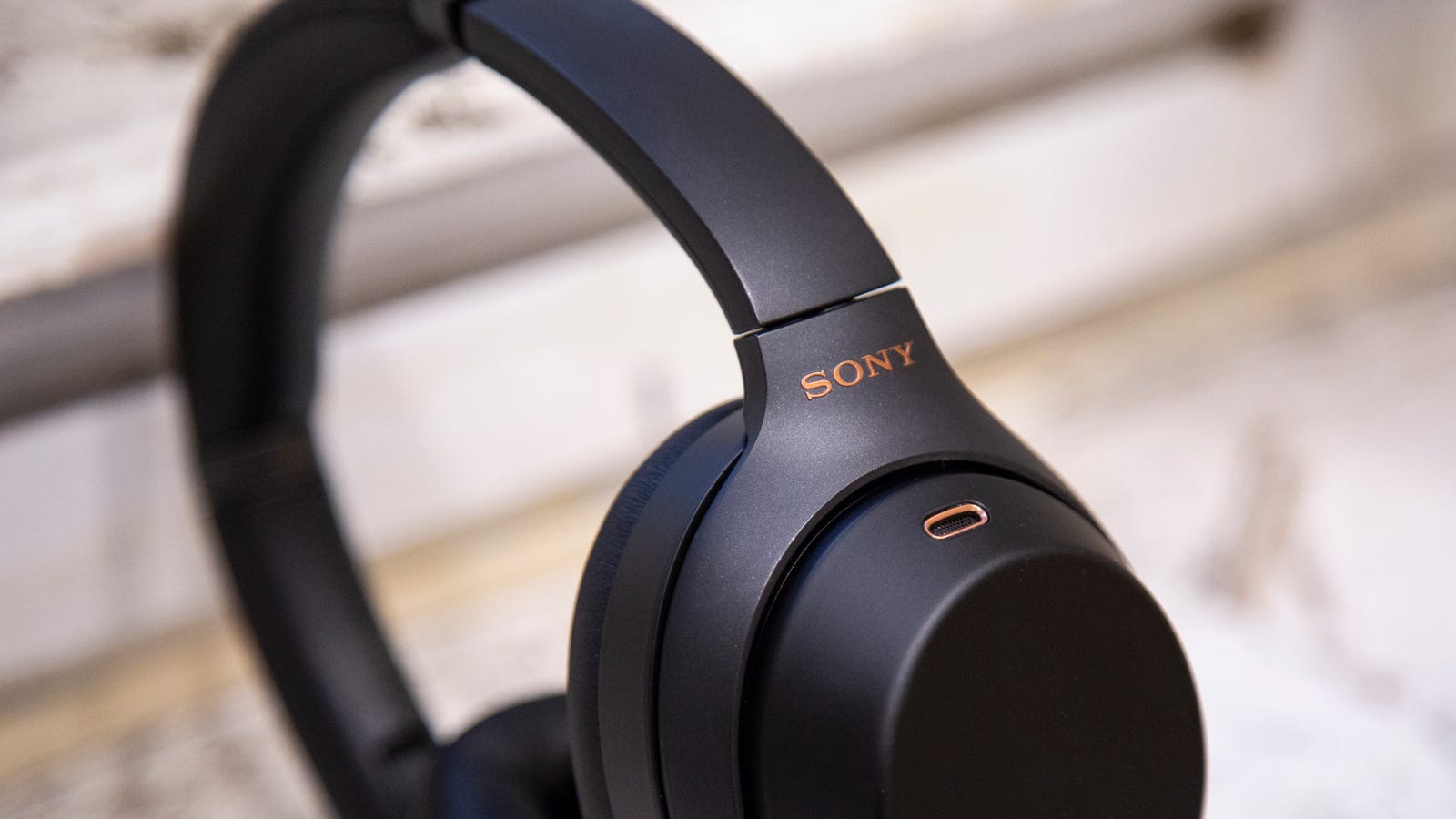
Florence Loses Speed, Now Crawling Inland as Historic Rainfall Continues [Updating]
Thursday 2:22pm
Then there’s the price point. It’s not so much that it’s too high. It’s that I wish it were lower. The WH-1000XM3 cost $350. That doesn’t make them the most expensive headphones in its class, but I don’t think I’d describe them as affordable, either. They are, however, the same price as the two-year-old Bose QuietComfort 35 II headphones, and they’re also better. You could even say they’re doubly better, since even the second generation 1000X headphones bested the Bose when they came out a year ago. You can buy the WH-1000XM2 headphones for $300 now, by the way.
They might not be affordable for everyone, but I do think the Sony WH-1000XM3 are some of the best headphones you can buy. It’s a boon that they also happen to be some of the best (if not the best) noise-cancelling headphones you can buy. Then again, they had the huge advantage of building on the excellent second and first generation 1000X headphones. If you own the WH-1000XM2, I’m not sure the improvements quite warrant an upgrade. But if you’re really craving better noise cancelling and better comfort, the third generation 1000X headphones deliver.
Your move, Bose.
READ ME
- Just like our favorite noise-cancelling except they cancel more noise
- New comfort features makes it feel like you’re wearing nothing at all
- Great audio, although there aren’t any improvements from the last generation
- Cost $350 but so do the Bose headphones, which also aren’t as good
- Wireless connection can be a little tricky
보기
(
0) 명이(가) 좋아요를 눌렀습니다.
(
0) 명이(가) 댓글을 달았습니다.
로그인 후 확인하실 수 있습니다. 로그인
APPLE IPHONE XS AND XS MAX REVIEW: SMOOTHED OUT
(0) - (0)
iPhone XR, iPhone XS max | 아이폰XR, XS맥스 - 2018.09.19
#apple
#iphone xs
#iPhone xs max
iPhone XR, iPhone XS max | 아이폰XR, XS맥스
보기
보기 AMP
Solid updates to a winning formula
Last year, Apple did something out of character: it introduced the usual update to the iPhone, the iPhone 8, while simultaneously introducing the iPhone X with a flurry of hype. The iPhone X was a total rethinking of the iPhone, with a new gesture system, Face ID unlocking, and an edge-to-edge screen that prompted a wave of app redesigns.
The iPhone X was meant to usher in the future of phones, and it succeeded; its influence (and its notch) are all over the industry now. Apple has gone from being an iPhone company to being an iPhone X company. This year, the iPhone X comes in one of two flavors: the updated, high-end iPhone XS and the midrange iPhone XR, which won’t arrive until next month.
APPLE HAS GONE FROM BEING AN IPHONE COMPANY TO BEING AN IPHONE X COMPANY
There are two iPhone XS models: the 5.8-inch XS and the new iPhone XS Max, which has a much larger 6.5-inch display and a frankly ridiculous name.
Really, both iPhone XS models are fundamentally just spec-bumped updates to the iPhone X. They have a new main camera sensor, a new processor, and a bunch of small updates that add up to a much nicer device than the X. One year after the notch, the arrival of the iPhone XS means we can look back at all the changes introduced by the iPhone X and see how they’ve gone, while looking at where Apple’s pushing the high end of phones next.
8.5VERGE SCORE

GOOD STUFF
- Terrific display
- Great speakers
- Long battery life
BAD STUFF
- Very good but not great camera
- Portrait Mode is extremely hit or miss
- Expensive
Buy for $999.00 from Apple
8.5VERGE SCORE
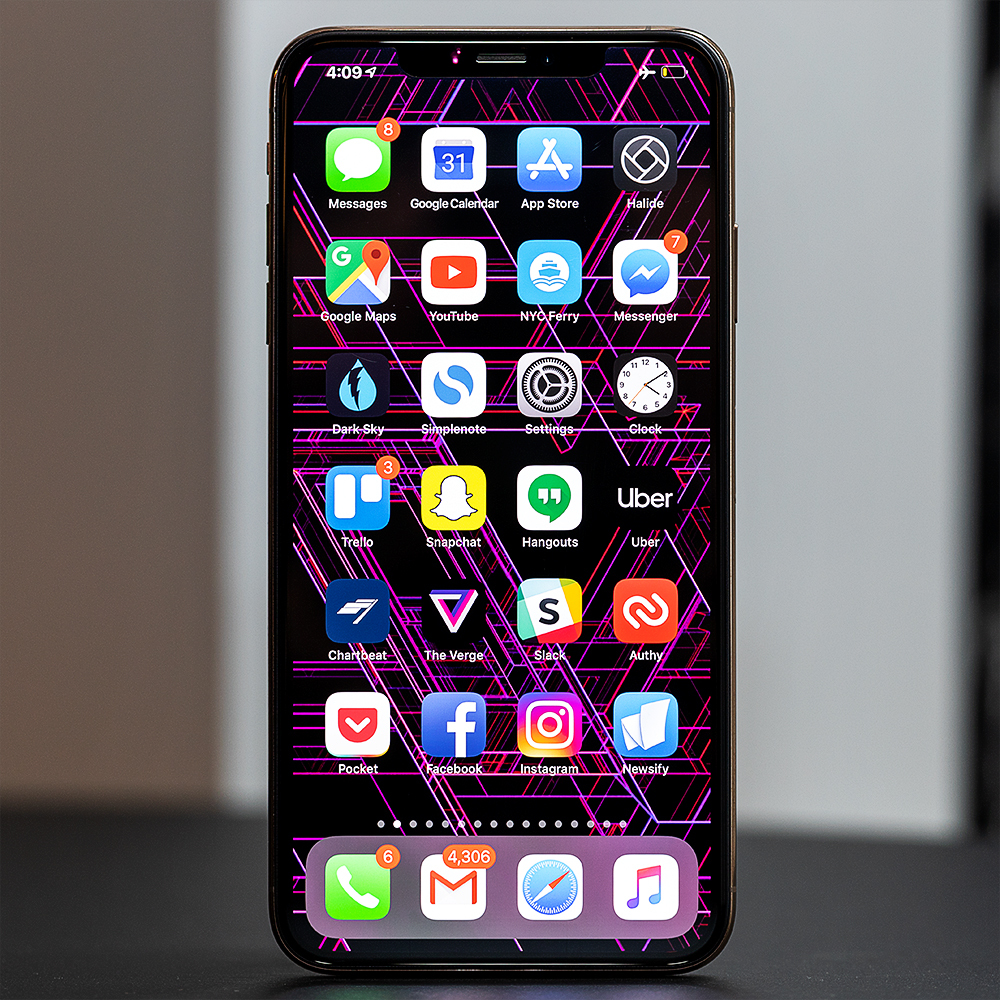
GOOD STUFF
- Terrific display
- Great speakers
- Long battery life
BAD STUFF
- Very good but not great camera
- Portrait Mode is extremely hit or miss
- Expensive
- If you buy a XS Max, you might have to say “iPhone XS Max” out loud
Buy for $1,099.00 from Apple
:no_upscale()/cdn.vox-cdn.com/uploads/chorus_asset/file/13104583/jbareham_180917_2948_0269_2.jpg)
XS MAXIMUM
Let’s start with the XS Max. Apart from the size, the XS and the XS Max are identical. They have the same A12 Bionic processor, same cameras, and the same OLED display tech with 458 pixels per inch. The XS Max also has a larger battery, which is nice. After a week of using it as my primary phone, the XS Max feels both bigger and smaller than I expected. Physically, it’s the same size as the iPhone 8 Plus and the Pixel 2 XL, and it definitely shares the same surfboard quality as Apple’s previous Plus-sized phones — at least when you look at it from the back.
But the edge-to-edge screen makes it seem much more reasonable from the front. The XS has the same OLED display as last year’s X, and the XS Max looks exactly like that display, just bigger. Because the screen fills the entire front of the phone, the XS Max doesn’t seem as huge as the Plus phones. It’s absolutely killer for watching videos or playing games on its huge, gorgeous display. I love it.
:no_upscale()/cdn.vox-cdn.com/uploads/chorus_asset/file/13106153/jbareham_180916_2948_0007.jpg)
At the same time, the XS Max’s size gets away from it. The large bezels on the older Plus phones mean the top of the display is actually lower on the phone, making it easier to reach. To pull down notifications or Control Center on the XS Max, you have to reach the very top of the device. I have big hands, and I basically can’t do it without tipping the phone over in my hand; I ended up having to use two hands most of the time. You can use Apple’s reachability feature to pull down the UI and then swipe, but that’s two swipes for one thing, and it just makes me a little sad.
The XS Max also doesn’t really do a ton in software to take advantage of that big display: there’s no extra row of home screen icons or picture-in-picture for video. Some apps that haven’t been updated look a little broken right now, particularly Instagram. Everything else is mostly just bigger; apps like Slack, Gmail, and Twitter show you the exact same amount of information as the smaller XS. If you think big things are funny (they are) check out the size of the status bar when you pull Control Center down. AT&T WIFI, it bellows at you. THE TIME IS 4:12PM, AND YOU HAVE 68 PERCENT BATTERY. I giggle every time, just as I did with the original Plus phones.
EVERYTHING IS MOSTLY JUST BIGGER ON THE XS MAX
There are some software changes for the bigger display that are familiar from the Plus: in landscape mode, certain apps can switch to a sidebar view, and you’ll see tabs (with favicons if you turn them on) in Safari. But that’s really it. Apple told me that it doesn’t want to overstuff the display because it doesn’t want the interface elements to be too small to tap on, and most people really do just want a bigger interface on a large phone, which makes sense. I just wish I had the option to up the information density on the XS Max just a little.
So yes, if you want a huge screen, get a XS Max. It’s a gigantic, beautiful screen, and I have enjoyed looking at it a lot. But nothing about it is easier to handle than the old Plus phones, and in some cases, it’s harder.
:no_upscale()/cdn.vox-cdn.com/uploads/chorus_asset/file/13106163/jbareham_180917_2948_0318.jpg)
DISPLAY AND FACE ID
The iPhone XS has the same OLED display as the X, with curved corners and the notch. After a year of looking at this display, I’m confident in saying that it’s one of the best displays available, with excellent color reproduction and brightness. And Apple’s TrueTone and Night Shift features are terrific; it’s easy to look at this screen all the time. (I also think Apple’s claim that this display supports HDR10 and Dolby Vision is a little silly. Sure, it gets brighter, but it’s nothing like HDR on a real TV.)
ONE OF THE BEST DISPLAYS AVAILABLE
Last year, we were wondering how Apple would handle burn-in on this new OLED display, and this year we know:there are basically no problems with burn-in on the iPhone X display. I would expect the XS to keep that up.
We’ve also learned that the iPhone X scratches way more easily than you’d expect. The glass on the front and back of the XS is supposed to be more durable, so we’ll see. My review units look pretty good so far, but that’s only after a week of use.
It’s also been a full year since Apple introduced Face ID, and we know that it works pretty well most of the time. Face ID on the XS is ever-so-slightly faster than the X. It’s noticeable side by side, but it’s not so much faster that you won’t find yourself pointedly staring at the phone to unlock it from time to time. iOS 12 lets you add a “secondary appearance,” which allows you to set up a second person if you want, which is nice.
A YEAR LATER, AND FACE ID SEEMS EASIER TO SET AND FORGET THAN TOUCH ID
Other than the minor speed increase and secondary appearance support, Face ID is still Face ID: it doesn’t work in landscape or upside down or anything like that. If you wear glasses like me, you’ll still have to enter your passcode every morning when you wake up because you’re holding the phone too close to your face for it to work. And sunglasses that block IR light will still prevent it from working. Apple says it’s working with sunglass makers to ship new kinds of sunglasses that support Face ID. (Only Apple can get another entirely different industry to adapt to its phone, instead of the other way around.)
A year later, and it’s pretty clear that Face ID is easier for people to set up and forget about than Touch ID, which means more people are securing their phones. That’s a good thing.
:no_upscale()/cdn.vox-cdn.com/uploads/chorus_asset/file/13104591/jbareham_180917_2948_0298.jpg)
CAMERAS
The camera upgrades on the XS over the X are significant. The XS makes the X camera look terrible most of the time. But we’ve been saying the best smartphone camera on the market is Google’s Pixel 2 for a year now, so that’s the standard to beat. And… I think the Pixel 2 still has a better camera than the iPhone XS. Don’t get me wrong: most people are going to like the photos they get from the iPhone XS. It has a solid camera, and I prefer it to the Galaxy S9. But compared to the Pixel 2, the XS doesn’t really do it for me.
I THINK THE PIXEL 2 STILL HAS A BETTER CAMERA THAN THE IPHONE XS
The front camera on the iPhone XS is the same as the iPhone X: a 7-megapixel sensor with a f/2.2 lens that takes depth information from the TrueDepth system to support Portrait Mode. The rear telephoto camera is also the same as the iPhone X: an optically stabilized f/2.4 lens with the same 12-megapixel sensor.
:no_upscale()/cdn.vox-cdn.com/uploads/chorus_asset/file/13104601/jbareham_180917_2948_0233.jpg)
But the rear wide angle camera (that you’ll use most often) has been updated: it’s still an optically stabilized f/1.8 lens with a 12-megapixel sensor, but each of those 12 megapixels is physically bigger now, which means they can collect more light. They are bigger, at 1.4µm pixels instead of 1.22µm, and deeper, at 3.5µm instead of 3.1µm. There’s also twice as many “focus pixels,” which is what Apple calls its phase-detect autofocus system.
Apple’s also revamped its image processing in a new system it’s calling Smart HDR, which runs photos through the A12 Bionic’s new integrated image signal processing subsystem and the Neural Engine. The basic idea is very similar to what Google’s doing on the Pixel 2: the iPhone XS takes a series of images at different exposures and combines them into a final photo. Like the Pixel 2, the iPhone XS starts a rolling buffer of four images the second you open the camera app, which allows for zero shutter lag. The image has already been captured the instant you push the shutter button.
THE IPHONE XS GENERALLY TAKES FAR BETTER PHOTOS THAN THE IPHONE X, BUT IT LOOKS MORE LIKE SAMSUNG’S CAMERAS THAN EVER
But while the Pixel 2 combines several underexposed frames, the iPhone XS also captures an additional overexposed image for each shot in the buffer, which picks up additional detail in the shadows of your image. Then, it looks at the other frames in the buffer to see if they can add additional detail, before merging several images together to create the final photo. It also detects faces and motion, so it knows what it’s looking at and adjusts the processing accordingly.
This whole concept is called “computational photography,” and it takes a lot of computing power. No DSLR or mirrorless camera to date can pull stuff like this off, especially not in real-time. That A12 Bionic does all of this capture and layering work in the instant it takes you to snap a photo.
The new Smart HDR feature lets the iPhone XS generally take far better photos than the iPhone X. They’re brighter, they’re better in low light, they have more detail, you name it. Over the past year, I’ve become less and less impressed with the iPhone X camera, and the iPhone XS is a solid improvement.
:no_upscale()/cdn.vox-cdn.com/uploads/chorus_asset/file/13106811/jbareham_180916_2951_iPhone_XS_0080_sized.jpg)
iPhone XS.
:no_upscale()/cdn.vox-cdn.com/uploads/chorus_asset/file/13106835/jbareham_180916_2951_iPhone_X_0046_sized.jpg)
iPhone X.
But Smart HDR is extremely aggressive — overly so, to my eye. It flattens out contrast in images and consistently smooths detail out of photos. You can see it clearly when you zoom in to a 100 percent crop of the same photo taken on the Pixel 2 and the iPhone XS: the Pixel captures more detail, while the iPhone tends to smooth it out. This loss of detail is the thing that bothered me the most about the iPhone X camera, and while the iPhone XS is better, the smoothing still disappoints me every time I see it.
:no_upscale()/cdn.vox-cdn.com/uploads/chorus_asset/file/13105513/jbareham_180916_2951_iPhone_XS_0064_sized.jpg)
iPhone XS.
:no_upscale()/cdn.vox-cdn.com/uploads/chorus_asset/file/13105533/jbareham_180916_2951_pixel_2xl_0043_sized.jpg)
Pixel 2XL.


iPhone XS at 150% (left) | Pixel 2XL at 150% (right)
Apple used to talk a big game about having a more accurate camera than Samsung, which has done aggressive smoothing and saturation tricks for years, but images from the iPhone XS camera look more like Samsung’s cameras than ever. And that might be fine for most people — most of these photos will only ever be viewed on mobile displays, and XS photos look fine to great on smartphone screens — but I don’t think they hold up to scrutiny the way Pixel 2 photos do.


iPhone XS (left) | Samsung S9+ (right)
Loss of detail is one thing, but there are some subjective things I prefer about the Pixel 2 as well: the XS shoots extremely warm photos, while the Pixel is more true to life, if a little muddier in the reds. Pixel 2 photos are extremely contrasty and somewhat desaturated, which I like but some people find harsh. This is all part of an age-old battle between what’s accurate and what people like to look at, and there’s really no right answer.
I would never try to tell you what photos you should like better, but it seems obvious that Apple and Samsung are chasing a different overall look than Google. And I can definitely tell you that more detail in photos is better than less.


iPhone XS (left) | Pixel 2XL
Apple’s also updated Portrait Mode on the XS, which blurs out the background and adjusts the lighting on your face to make your phone photos look more like photos taken with big cameras and lenses. The iPhone XS has a big new trick: it lets you adjust the blur after you take the shot. Samsung’s phones have allowed you to change the blur like this for a while, but Apple’s portrait photos look a lot better to me because the phone is doing a lot more work. But that doesn’t mean they always look good.
:no_upscale()/cdn.vox-cdn.com/uploads/chorus_asset/file/13106445/XS_Portrait.jpg)
The XS does a lot of things very quickly when you shoot a Portrait Mode photo: it identifies the faces in the scene and splits apart the background and foreground. Then it creates a depth map of the entire scene, particularly the subject in the foreground. Then it applies blur progressively to that depth map to model how a real lens on a real full-frame camera would smoothly transition the blur from foreground to background.
It’s pretty neat to adjust the blur after the fact and watch different parts of the image get blurrier at different rates. It’s definitely doing more than just cutting the background out and making it all blurry. It’s nicer than what phones like the Pixel 2 and S9 can do, although it still struggles around the edges and it has a tendency to cut off glasses.
Apple says it modeled the Portrait Mode blur against prime lenses on full-frame cameras, so we tested it against a 50mm lens on a Canon 5D Mark IV. As you’d expect, the Canon won running away. Apple’s software blur just isn’t there yet. But most people don’t have big cameras and expensive lenses, and Portrait Mode will do a lot for them. But it’s still a little gimmicky: I took close to 5,000 photos with my iPhone X over the past year, and just 207 of them were in Portrait Mode. I don’t think the new Portrait Mode on the XS is going to make me use it much more.


iPhone XS f2.2 (left) | Canon 5D Mark IV f2.2 (right)
On the video front, there are some new software stabilization algorithms on the rear cameras and entirely new stabilization for the front camera as well as the ability to record stereo audio. I didn’t take too many videos with the XS in my testing, but to me, it looks just as good as the X, which has been great over the past year.
Apple’s not wrong when it says the iPhone is the most popular camera in the world, and every improvement the company makes is welcome. It means more people are taking better photos. But I don’t think it’s the best smartphone camera out there anymore, and that’s even before the Pixel 3 comes out in just a few weeks.
:no_upscale()/cdn.vox-cdn.com/uploads/chorus_asset/file/13106871/jbareham_180917_2948_0384_02.jpg)
PROCESSOR AND BATTERY LIFE
Last year’s iPhone X had an A11 Bionic chip, and this year’s iPhone XS has an A12 Bionic. In terms of CPU performance, the A12 really isn’t that much faster: Apple only quotes a 15 percent performance improvement, and I didn’t really see a noticeable speedup over my iPhone X.
The A12’s GPU is 50 percent faster, but, as usual, that feels like headroom for the future since these devices tend to stick around for so long. Last year’s A11 GPU was 30 percent faster than the A10, and it’s not like developers are maxing that out after a year. Apple has a huge performance lead over the entire smartphone industry, and I think it’s great that it’s using that lead to make its devices last as long as possible, instead of running them at the bleeding edge of power and performance all the time.
I GOT A FULL 12 HOURS OF BATTERY LIFE OUT OF THE XS MAX WITHOUT USING LOW POWER MODE
The big change to the A12 is the new Neural Engine, which accelerates machine learning. Apple claims the Neural Engine on the A11 could perform 600 billion operations per second, while the A12 can do 5 trillion. That’s a huge increase — especially since the system also uses much less power — but in real-world use, the apps just aren’t really there yet. You’re basically just looking at a bunch of AR demos and the new camera features.
The A12 is also the industry’s first 7nm chip to ship at scale, which is a big deal for a variety of reasons, particularly battery life. I mostly tested the XS Max, and it did great — better than even Apple’s claim of 90 minutes more than the X. In fact, I got a full 12 hours of battery life out of the XS Max without low power mode, and that’s even under my heavy daily use of constant Slack and email, video watching, photo taking, and browsing. The smaller XS is rated to get 30 minutes more than the X, which has run for about eight hours for me this past year. It’s solid.
:no_upscale()/cdn.vox-cdn.com/uploads/chorus_asset/file/13104689/jbareham_180916_2948_0075.jpg)
EVERYTHING ELSE
Apple made a big deal out of the “wide stereo” speakers on the XS during the keynote, which felt a little silly, but the speakers on the iPhone XS are definitely louder and clearer than the speakers on the X. Like the X, the XS boosts the volume of the earpiece speaker to serve as the other stereo channel. But this year, both the earpiece speaker and the bottom speaker are closely matched, which lets Apple do some processing on the audio for greater stereo separation. I don’t think it’s super noticeable, but any improvement to phone speakers is a good one, and this is a good one.
:no_upscale()/cdn.vox-cdn.com/uploads/chorus_asset/file/13100645/akrales_180913_2950_0161.jpg) Photo by Amelia Holowaty Krales / The Verge
Photo by Amelia Holowaty Krales / The Verge
IOS 12
I didn’t spend a lot of time on iOS 12 in this review since my colleague Chaim Gartenberg just published a detailed iOS 12 review. But here’s his bullet point version:
- Improved performance, especially on older devices (it’s worth updating for this alone)
- Screen Time is Apple’s attempt at time well spent — it’s a lot of information, but you’re mostly on your own to set it up and use it
- Notifications group by app (finally!) and are easier to mute
- Siri Shortcuts might make Siri way more useful, if developers get on board
- Memoji is a fun thing you’ll use once and forget about forever
The internal wireless charging coil of the iPhone XS has also been improved, so it’s more forgiving of placement, and Apple says it’ll get to a full charge 30 minutes faster using the same charging pads as before. AirPower, the wireless charging system Apple announced last year, seems to be dead for now; Apple wouldn’t say anything about it when I asked.
Yes, the iPhone XS still has 3D Touch; press on that screen while you still can. And not having a headphone jack or USB-C is still very sad, especially because the entirely Apple-controlled Lightning ecosystem is extremely weak: there are very few Lightning headphones, zero third-party headphone dongles, and exactly one certified iPhone X battery case… that isn’t yet certified for the XS. Apple wants you to buy AirPods, so AirPods you will buy.
Dust and water resistance has been improved to IP68 from IP67 on the X and the XR. That means you can keep the XS at a depth of two meters of water for 30 minutes at a time, which seems like a lot. When you’re done splashing around, Apple recommends letting it dry for five hours before plugging it in to charge. (There’s still no warranty against water damage, though.)
The XS also has dual-SIM support, but we weren’t able to test it yet. It arrives with a software update this fall. We’ll report back when it gets here.
:no_upscale()/cdn.vox-cdn.com/uploads/chorus_asset/file/13106689/jbareham_180917_2948_0212_02.jpg)
So that’s the iPhone XS. Should you get one?
Well, these are still expensive phones: the iPhone XS starts at $999, and the top-of-the-line iPhone XS Max with 512GB of storage will cost you $1,449. That’s a lot of money. I am sure some people will find it ridiculous, while others will have already happily preordered.
IT’S WORTH WAITING TO CHECK OUT THE IPHONE XR BEFORE RUSHING INTO THE IPHONE XS
I would not rush out to spend another $999 on the XS if you have a X, but if you’re already deep into a preorder, don’t worry: you will love the iPhone XS. It is, indeed, more iPhone, and it will probably hold up for years to come. I definitely prefer the Pixel 2’s camera, but the iPhone XS isn’t that far behind, and it’s still a significant improvement over previous iPhones.
For everyone else, I think it’s worth waiting to see how the iPhone XR turns out before rushing in. It has the same processor and the same main camera for $750. The only major question is how good its 6.1-inch LCD will look in comparison to the OLED on the XS. But for that, we’ll just have to wait and see next month.
보기
(
0) 명이(가) 좋아요를 눌렀습니다.
(
0) 명이(가) 댓글을 달았습니다.
로그인 후 확인하실 수 있습니다. 로그인
New iPhone XS 2018 release date, price & specs
(0) - (0)
iPhone XR, iPhone XS max | 아이폰XR, XS맥스 - 2018.09.19
#iphone xs
#apple
iPhone XR, iPhone XS max | 아이폰XR, XS맥스
보기
보기 AMP
Apple has launched its new iPhones, the XS and XS Max, and pre-orders have begun! Here's what you need to know about their release date, new features, design, price & tech specs
Apple has, after many rumours and some last-minute leaks, unveiled its iPhones for 2018, and pre-orders have begun. You have three upgrade choices this year: iPhone XS, iPhone XS Max and iPhone XR.
Here we'll talk about the first two, and you can find everything you need to know about the cheaper iPhone XR here.
Somewhat unsurprisingly, Apple has built upon the iPhone X rather than updating the iPhone 8. So new and old models look the same at a glance. Check our iPhone XS Max versus iPhone X comparison so you can see just how much better the new phones are. We also have an iPhone 8 vs iPhone XS comparison.
You can consider the XS the direct upgrade from the X, but the XS Max adds a brand new option with the biggest screen yet seen on an iPhone at 6.5 inches.
Yes, you read that right: not XS Plus, but XS Max. We're into the second decade of iPhone now, so it's reasonable that Apple wants to change its naming strategy. It says it's because the screen is bigger than the 5.5 inch display on an iPhone Plus, but it's also because it is extending its vision of what the iPhone X started. Jonny Ive's words, those, not ours. Most people are likely to pronounce it "excess" rather than "ten ess", but the latter is the correct way of course.
Here are highlights of the new features:
- A12 Bionic processor
- IP68 rated
- Updated 12Mp cameras
- Adjustable depth of field in photos
- 512GB storage option
- Dual-SIM
iPhone XS and XS Max prices
What will they cost you? This table explains what you need to know about US and UK pricing.
| | iPhone XS (5.8-inch) | iPhone XS Max (6.5-inch) |
| 64GB | US$999 / £999 | US$1099 / £1099 |
| 256GB | US$1149 / £1149 | US$1249 / £1249 |
| 512GB | US$1349 / £1349 | US$1449 / £1449 |
| Colours | Gold, Silver, Space Grey | Gold, Silver, Space Grey |
Release date and pre-orders
The new phones, both XS and XS Max, are available to pre-order now, and the first units will ship on 21 September.
You can pre-order on Apple's website, or via the networks and resellers listed below. Also check out our article rounding up the best iPhone XS deals.
iPhone XS design and specifications
As this is an 'S' model, no-one will be surprised that the design is the same as the iPhone X. That means your existing cases will fit: buttons and ports are in the same places.
It's made from the same surgical-grade stainless steel, but the screen and rear glass has a new formulation of glass which Apple says is the toughest ever used in a phone.

Water-resistance has been improved to IP68, up from IP67, so you can leave it submerged at a depth of 2m for 30 minutes. And it won't just survive fresh water, Apple has also tested it in orange juice, tea, wine, beer and salt water.
- iPhone XS: 143.6x70.9x7.7mm, 177g
- iPhone XS Max: 157.5x77.4x7.7mm, 208g
Screen
The XS' screen is a minor upgrade to the iPhone X's. Resolution remains the same, as does the 5.8-inch diagonal, but contrast is improved to 1,000,000:1, which Apple says gives is a 60 percent greater dynamic range.
The iPhone XS Max is just.. bigger. It shares the same design but has a 6.5-inch screen in a body that's roughly the same size as the iPhone 8 Plus. That's a whole inch more, a real boon for those who can live with physically larger phone as this is now one of the biggest screens on any phone.

In order to maintain the same pixel density as the iPhone XS, resolution is higher at 2688x1242 pixels.
Both screens have the same list of features, though:
- 3D Touch
- Tap to wake
- True Tone
- Wide Colour
- 120Hz touch layer
- 625 nits max. brightness
Performance
The new A12 Bionic processor has a similar configuration to the A11 with a six-core CPU and a quad-core GPU. However, it's the first to be manufactured using a 7nm process and this is one of the reasons it's considerably faster than the A11.
Apple says the new Neural Engine is an octa-core chip that can process 5 trillion operations per second, considerably up from the 600 billion which the A11 could handle.
In practice this means apps launch up to 30 percent faster, but apps which use machine learning also benefit from this extra performance.
Trending Articles
The best iPhone XS and iPhone X screen protectors
The iPhone XS display shares a 5.8-inch screen size with the iPhone X but…
They can use real-time machine learning for better depth detection in Portrait mode and better mapping of Animojis in FaceTime.
FaceID is also quicker thanks to faster algorithms and it runs on a faster version of the secure enclave.
Cameras
On the surface, specs look the same as the iPhone X, as do the cameras themselves, but the main sensor in the wide-angle camera is bigger and houses larger pixels.

Smart HDR is one highlight of the new camera features. With the extra power on tap, it takes 9 rather than a mere 4 photos simultaneously. The extra four "inter-frames" deliver even better HDR shots.
A more noticeable difference from the iPhone X's shots is that bokeh has also been improved to look more like the effect you get from a big-lens SLR camera. More importantly, you can now change the depth of field after the photo when you tap Edit.
Hardware
Keen to appeal to those who want a dual-SIM phone, Apple is at last offering an eSIM alongside the physical SIM tray. This is new technology for iPhone, but eSIMs have been in Apple Watch and iPad for some time.
What's an eSIM? All your questions answered.
Only in China will you be able to buy a true dual-SIM iPhone which takes two physical cards. Both the Chinese model and those using an eSIM work using the dual-standby tech that many dual-SIM phones already use, letting you seamlessly switch between two numbers at any time.
Battery life has been improved, and Apple says the iPhone XS and XS Max have biggest ever batteries in an iPhone. Expect 30 minutes longer runtime from the iPhone XS than an iPhone X. The XS Max will last 90 minutes longer than the iPhone X.
We'll bring you reviews of the new phones as soon as we can.
보기
(
0) 명이(가) 좋아요를 눌렀습니다.
(
0) 명이(가) 댓글을 달았습니다.
로그인 후 확인하실 수 있습니다. 로그인
Samsung Galaxy Tab S4 review: A versatile productivity booster that falls just short
(0) - (0)
Samsung Galaxy Tab s4 | 갤럭시 탭 s4 - 2018.09.19
#galaxy tab s4
#samsung
Samsung Galaxy Tab s4 | 갤럭시 탭 s4
보기
보기 AMP
Samsung Galaxy Tab S4 is a multifaceted device designed to meet any productivity need and delivers a lot, yet it falls just short of reestablishing the tablet as an essential consumer product level with smartphones or notebooks.
It took a while for tablets to settle on the 10.5-inch screen size. What companies haven't settled on when it comes to tablets is what they can do that smartphones and notebooks can't. Samsung's answer by way of the Galaxy Tab S4 seems to be that it is more versatile, and therefore, an on-the-go productivity booster more than anything else. After a month of use, I found charm in the Tab S4 -- mainly due to its attachable keyboard and the lush 10.5-inch AMOLED screen that brings out the best for multi-window tasks -- but it fell just short of becoming a must-have.

Samsung Galaxy Tab S4 is the company's latest 2-in-1 premium tablet.
Image: Cho Mu-Hyun
1. Battery
The best part about the Tab S4 is really its battery. At 7,300mAh compared to the Tab S3's 6,000mAh, Samsung delivers the numbers. Both casual use and word-processing-heavy tasks can be done easily throughout the day without having to worry about charging.
As a portable device, I feel this is the best quality, as it allows professionals to focus on their task at hand and start charging once they return home or back to the office. It brings a nice rhythm to daily routines -- important for continuous productivity for workers. I took the Tab S4 with me for couple of business trips that included staying two to three days in hotels and I only had to charge once I returned to the room at night after my long day.
That's not to say it's perfect. Watching YouTube or using the split screen option on tablet mode and opening multiple windows on Samsung DeX mode brought about a noticeably faster battery drain. I would say on-the-go use that's focused on power points or words could handle seven to nine hours easily; once the graphics card starts pitching in work, this falls down to five to six hours fast. Still, with quick charging to boot, it is a considerable improvement compared to its predecessors and on par with or better than the top smartphones out there.
2. Keyboard
The attachable keyboard has some die-hard haters, but the Tab S4's Book Cover Keyboard, sold separately, really brings out the best in the tablet. Long-time tablet users who are more used to the on-screen keyboard set-up may disagree, but newcomers may find the keyboard refreshing.
With the Tab S4, you are basically learning a brand new keyboard layout -- the main reason attachable keyboards have strong detractors -- and initially I was forced to take my eyes away from the screen to look for keys that are't included. But a week or two in, it wasn't as big a bother as I thought it would be. Plus, the keys' tapping sound and their right amount of resistance made me feel like I was doing some real work.
There wasn't an instance when I wanted to resort to the on-screen keyboard, and I returned to the physical keyboard for both play and work no matter where I was. My hands played mouse; the best part was using them with the keyboard when it came to internet searches and split-screen tasks. Plus, for Samsung Dex, the keyboard is a must, but more on that later.
The big downside is that the keyboard is sold separately. Having Samsung DeX, among other things, makes the keyboard an essential tool to tap into the full potential of the Tab S4 and selling it separately at a $149.99 price tag (the Tab S4 itself costs $649.99) feels expensive.
The keyboard-plus-tablet set-up still falls short against other notebooks, and although it is more portable, there is room for improvement. If Samsung wants its tablets established as professional tools, I feel the keyboard should be given for free to foster more fans. Or, if they are demanding that price tag, it should somehow be upgraded to have keys and the overall experience closer to its desktop counterpart.

Split screen used in combination with the keyboard really brings out the full productivity of the Galaxy Tab S4.
Image: Cho Mu-Hyun
3. 10.5-inch AMOLED screen
Samsung is known for its top-of-the-line hardware in its flagships, especially in displays, and the Tab S4's 10.5-inch AMOLED screen is gorgeous. The bezel is narrower compared to its predecessor and the black model I used, coupled with the beautiful screen, really made the tablet seem like a premium device. The contrast ratio is great and bright colours and the real black all stand out without feeling saturated. The cinema mode makes images even more natural for media consumption, though I rarely used it.
The aspect ratio is 16:10, wider than Tab S3's 4:3, and this is better for watching media content. Is this an enormous plus? Not really, since almost every other device, including smartphones, notebooks, and monitors, are going down that route, so it is expected.
Also: Samsung Galaxy Note 9 review: Big battery and superb S Pen experience
But that wider birth really shines when using multi-window or split screen. The Tab S4 basically incorporates most of the multitask features on the Galaxy Note series and it shines here. The split screen used in combo with the keyboard is when this tablet really deserves the moniker of "productivity booster". And the 10.5-inch really offered enough space for each split screen to lessen the need for scrolling. While I rarely use the split screen on my Galaxy Note 8 because I feel there isn't enough space for two screens, with the Tab S4 it's like having two smartphones side by side. For some tasks I would say it could beat the speed of a desktop.
4. S-Pen
Samsung seems to have intentionally sought out a Montblanc-like design for the Tab S4's S-Pen, which is more rounded and thicker compared to those in the Galaxy Book and Galaxy Note 8 and 9. I am sure this is an intentional design choice to match the productivity theme of the Tab S4 for a more professional or business-oriented look, but it doesn't feel that way once you start using it. It's light, doesn't have heft, and the overall colour comes off as more plastic than premium.
Also: Galaxy Note 9 ongoing review: The good and bad so far CNET
The stylus is very functional and does everything that its cousins can do in other Samsung devices; users can take notes, draw, and use it for search and translate like in the Note series. However, being a Galaxy Note 8 user, I found the sensitivity for Tab S4's pen slightly lacking in comparison. It could be that the ball point is thicker, but I found highlighting and dragging to be more laborious than on the Note, and less accurate. But it does its job. And it's hard to complain too much, since it's included.
It also has a dedicated socket on the left side and the S-Pen doesn't require charging -- a better choice than some of its competitors; Microsoft's Surface Go Pen uses a disposable battery, for example.

Open dozens of windows with Samsung DeX.
Image: Cho Mu-Hyun
5. Samsung DeX
I had high expectations for Samsung DeX on the Tab S4, and after using DeX mode, I am convinced that the desktop-style is more suited to the tablet than the smartphone. The biggest upside is now you can open multiple windows, and the Tab S4 handles them easily, despite having a Snapdragon 835 instead of the newer 845 that's on the Galaxy S9 and Galaxy Note 9.
I have a habit of just opening new windows endlessly instead of, perhaps more wisely, using a tab on the same window. With the Tab S4, there weren't any noticeable slowdowns after opening over 10 windows. The ability to just do this on a tablet was refreshing in its own way.
Also: Samsung and the Galaxy Note 9's quest for 'meaningful innovation'
That being said, there really isn't much to do on the mode besides surfing the internet since there aren't enough Android-optimised apps; I found myself doing the same things I do in tablet mode. I feel the next iteration should offer users more to do here if this tablet wants to be level with Windows or iOS.
6. No home button, and that's OK I guess
Samsung has rid the home button to match the aesthetics of its recent smartphones. It definitely helps the look of the front of the tablet. However, this has also meant getting rid of the fingerprint sensor, therefore forcing users to use the iris scanner (they can add Intelligence Scan, which scans both eyes and facial features). The company's logic seems to be that the iris scanner is more intuitive, and while it works fine, I feel both options should have been offered on a premium device such as this for more user choice.
The scanner is located near top of the tablet where the 8MP front camera is, and I had to lean sideways to unlock it. What would have been pretty awesome is if I had left my seat and it had the ability to scan me and unlock right away upon my return. If the fingerprint scanner isn't coming back, I would like the facial scanner upgraded so it can read eyes and faces from the side.

Samsung offers a variety of choices to use the Galaxy Tab S4: S-Pen stylus, the keyboard, and your hands.
Image: Cho Mu-Hyun
7. Harman AKG quad speaker
The Tab S4 has a quad audio system that is AKG tuned, which is new to Samsung's tablet line. It also has Dolby ATMOS to help out when you want to watch a movie or two. It's richer than what came before and than what's offered on the company's smartphones, but not as cinematic as I hoped it would be.
Samsung really hasn't gotten audio down, and I think it mostly comes down to hardware design. Hopefully for the next iteration the company can tune the speakers to offer more booming sounds.
8. Mostly work, with a little play
There are other miscellaneous features packed in, like the 13MP back and 8MP front camera. The microSD slot is welcomed and the tablet comes in 64GB and 256GB internal storage. The Galaxy Note 9 comes in a 512GB model so the same premium speed would have been welcomed on the Tab S4, but it seems the company decided against it, either due to cost issues or to avoid stealing the thunder from the Note 9. But more internal storage would have gone well with Samsung DeX; desktop features are there to handle the heavy-duty work that eats more memory.
Having the Qualcomm 835, which launched last year, and 4GB RAM, I feel can handle any productivity or multimedia task. After all, mobile device specs are currently overkill. The Daily Board feature where the tablet acts as a calendar and clock when docked on the charging pad isn't bad, but because my alarm is set on the smartphone it's never really the first screen I look for.
Now a minor problem I have with the Tab S4 is that it's really all about work, not play. As with the Galaxy Note series, Samsung is promoting the productivity aspect of this tablet, and it definitely delivers a lot in that regard. In essence, play usually refers to multimedia consumption or gaming, but the Tab S4 doesn't seem to boast any advantage in that sense. Yes, the 10.5-inch AMOLED display is gorgeous, but so are other Samsung premium products and high-end monitors that most consumers may already own.
Perhaps Samsung can add a dedicated button (since the Tab S4 doesn't have a Bixby button) that switches back and forth between work and play, as well as a more simple, intuitive interface for the "Play Mode", such as having a game launcher, or even another version that would otherwise make jumping into play mode a bit easier.

The Galaxy Tab S4 can double as a daily board when docked for charging. Because, why not?
Image: Cho Mu-Hyun
9. Conclusion: A worthy go-to device that's pricey
The Galaxy Tab S4 tries hard to be a must-have device for the modern day enterprise user, and while it succeeds in many areas, it fails in others. I am sold on the advantages that tablets can bring over smartphones and notebooks when it comes to portability and productivity. There is a role to play for a 10.5-inch screen on a tablet that can't be achieved by that on a six-inch smartphone or 13-inch notebook. I love the Tab S4's adaptability and versatility offered by its wide screen and accessories such as the keyboard and stylus that can be used in combination. But the goal post here is Apple's iPad Pro, and Samsung simply succeeds in offering an equivalent Android product that will be welcomed by Android users.
That being said, the biggest obstacle is price. It costs $649.99. In South Korea, the tablet is offered with 6GB RAM and costs 792,000 won with 64GB internal storage. With added accessories such as the keyboard or possibly an HDMI cable to link Samsung DeX with a monitor, that price climbs higher than a premium smartphone.
If Samsung is aiming to consolidate hardcore fans, it might succeed, but for it to become a mass device, either $100 should be cut from the price tag or the company should add more premium features to later iterations, such as more play content or free accessories.
Sales of the Tab S4 begin in South Korea on Wednesday, August 29.
PREVIOUS AND RELATED COVERAGE
Samsung marries new Galaxy Tab S4 with DeX for productivity boost
Samsung Electronics has unveiled its flagship Android tablet, the Galaxy Tab S4, with Samsung DeX connectivity for the first time on a tablet, giving consumers multi-screen options and a powered-up S Pen to cater to the enterprise and professionals.
Samsung to launch S Pen SDK in September, eyes third party apps for remote control
The move to make S Pen more useful to enterprise apps could extend the Note 9's reach into business more.
Nine reasons the Samsung Galaxy Note 9 is best for business
The Note series has always had an enterprise focus and this year's Note 9 is no exception to that strategy. Improvements have been made to make it the best smartphone for getting work done.
Galaxy Home: Can Samsung make up for lost time in the smart speaker space?
Samsung's smart speaker will have six speakers, eight microphones, a subwoofer, sound by AKG, and comes on the back of a partnership with streaming giant Spotify. But will it be enough?
Samsung launches DeX dongle: Here's how it stacks up to the original (TechRepublic)
Business users can look forward to the portability of Samsung's DeX dongle.
보기
(
0) 명이(가) 좋아요를 눌렀습니다.
(
0) 명이(가) 댓글을 달았습니다.
로그인 후 확인하실 수 있습니다. 로그인
Samsung Galaxy Tab S4
(0) - (0)
Samsung Galaxy Tab s4 | 갤럭시 탭 s4 - 2018.09.19
#samsung
#galaxytabs4
#galaxy tab s4
Samsung Galaxy Tab s4 | 갤럭시 탭 s4
보기
보기 AMP
Pros
- Stunning display
- Dex mode is an improvement to the UI
- S-Pen included
Cons
- Would like more RAM
- Glass back is slippery and delicate
- Lingering issues with Android on tablets
- Dex mode has a few annoying bugs
Key Features
- Review Price: £599
- 10.5-inch HDR Super AMOLED display
- Optional keyboard cover
- Snapdragon 835, 4GB RAM, 64GB storage
- Expandable via microSD
- 7300 mAh battery, USB-C, Fast Charge
What is the Samsung Galaxy Tab S4?
If you’re on the hunt for an Android tablet with specs to match Apple’s iPad Pro 10.5 then options will have been thin on the ground recently. Huawei’s MediaPad M5 8.4 and Huawei MediaPad M5 Pro offer decent specs and features, while Amazon’s Fire HDrange have the mid-range covered. But high-end Android tablets are rare.
That’s where Samsung and its Tab S4 come in. This device is as high-end as you can get: a fast processor, a gorgeous HDR OLED and the S-Pen included. It even manages to swerve the normally quite poor Android interface with some smart software choices.
Samsung Galaxy Tab S4 price
Pricing starts at £599/$649 for the 64GB model, with an extra £50 netting you the LTE version. If you’re in the US, expect to see the LTE version later in the year. The keyboard ‘Book Cover’ costs an additional £119/$149.
Samsung Galaxy Tab S4 release date
UK pre-orders for the Tab S4 will begin on August 9. Get in early and you’ll bag the keyboard case for free. In the US, the tablet will be available from August 10.
Related: Best tablet 2018
Samsung Galaxy Tab S4 – Design
There’s a whole lot to like about the Tab S4. However, its design and build aren’t on that list. It’s a design that works exceptionally well for phones, but not so much for tablets.
My biggest concern is the glass rear. Not only do I fear that it will become damaged every time I put the device into my bag uncovered, but it’s super-slippery, even after only a few minutes of holding it. Any oily residue on your hands will instantly transfer onto the glass, leaving the device a smudge-covered mess. The cool feel of metal is far more reassuring on a tablet.
Latest
At least the device is thin and light. Slipping it in a bag will result in no noticeable weight gain, and I could hold it in one hand whilst scribbling some notes without feeling any strain.
The rest of the rear is clean, with a camera and flash, Samsung branding and a ‘Tuned by AKG’ logo. My review unit was a glossy black, and there’s a whitey/grey version available too.
Around the metal sides you’ll find a volume rocker, standby switch and a set of POGO pins for connecting up the Book Keyboard Cover, which is sold separately. A USB-C port sits along the bottom edge, flanked by a 3.5mm headphone port.
image: https://ksassets.timeincuk.net/wp/uploads/sites/54/2018/08/DSCF1371-1024x683.jpg

Easily the biggest omission is the home button, which has been a mainstay of the Tab line. It’s been ditched here in favour of a larger screen with a thinner bezel, and it’s a good move. There’s very little need for a dedicated home key here and in my experience, I haven’t found fingerprint sensors on tablets all that useful.
Those after extra protection will be pleased to learn that the Tab S4 features the same iris scanner as the Samsung Galaxy S9. It works fine, although in landscape orientation it sometimes struggles to accurately find your face.
The stretched-out 10.5-inch display covers the majority of the front of the Galaxy Tab S4. This larger display has resulted in a reduction in the bezel surrounding it compared to the outgoing Tab S3, although it isn’t quite as eye-catching as the Infinity Display on the Samsung Galaxy S9. There’s no curve to the panel – which is probably a good thing for a tablet of this size.
Also available with the Tab S4 is a keyboard folio case. It will come free with pre-orders in the UK, and cost £119/$149 thereafter. I’ve only played with the Book Keyboard briefly, so I’ll save my complete thoughts for an update to this review once I’ve spent more time with it.
Samsung Galaxy Tab S4 – Screen and S-Pen
The screen on the Samsung Galaxy Tab S4 is utterly gorgeous, and right up there with the iPad Pro 10.5 for having the finest display on any tablet you can buy right now.
Samsung’s big win over Apple is the use of OLED tech, opposed to IPS LCD. OLED is used in some of the best TVs we’ve reviewed this year, and it allows for perfect blacks and striking colours. The panel is HDR-enabled for apps such as Netflix and Prime Video, and it packs a high resolution of 2560 x 1600. Really, it ticks all the boxes.
image: https://ksassets.timeincuk.net/wp/uploads/sites/54/2018/08/Screenshot_20180808-113751_Netflix-1024x640.jpg

Netflix supports HDR
For watching movies on-the-go there’s simply nothing better. Colours are punchy and bright, viewing angles are wide enough for a couple of people to watch simultaneously, and there’s a good hit of brightness. I did find myself jacking up the brightness to 100% when in sunnier surroundings or on the train in the morning, but turning things down to about 60% will suffice indoors.
image: https://ksassets.timeincuk.net/wp/uploads/sites/54/2018/08/DSCF1384-1024x683.jpg

I’ve been switching between the Tab S4 and Apple’s iPad Pro 10.5 over the past few days to try to decide which is better, and it’s a tight call.
The Tab S4 is easily better for binge-watching on Netflix, not only because of the punchier panel, but because the 16:10 aspect ratio is better suited to widescreen video.
The iPad Pro, on the other hand, has a 120Hz refresh rate, which makes swiping and scrolling a lot smoother. I’d also say the iPad displays colours slightly more accurately – to my eye anyway – and editing the same photos on both devices in Adobe Lightroom CC was a better experience on the iPad as a result.
Really, it comes down to what you value more in a display.
Related: Best phone 2018
image: https://ksassets.timeincuk.net/wp/uploads/sites/54/2018/08/DSCF1375-1024x683.jpg

Included with the Tab S4 is an S-Pen: a Wacom-powered stylus for doodling and note-taking. Unlike the S-Pen that slides into the Samsung Galaxy Note 8, the version here is chunkier and made completely from plastic – it feels a lot like a felt-tip pen.
Considering how thin this tablet is, there’s nowhere for the S-Pen to live. It would have been nice to see Samsung follow Microsoft’s lead and add in some magnets for sticking the S-Pen to the side. I love this feature on the Surface Pro, and it stops the pen getting lost in your bag.
Not being a particularly great artist myself, I gave the device and stylus to a team member who used to work as an artist to give it a whirl. They found that as a creative tool the Tab S4 is a significant step up on competing Android tablets, such as the 10-inch Huawei MateBook. The S Pen is one of the best tablet styluses around, offering a solid 4096 pressure sensitivity levels and pleasing 0.7 mm rubber tip. The tip gives the pen a degree of resistance when writing on the screen – something that is missing on competing styluses, including the Apple Pencil.
Scribbling in Samsung Notes, the pen was reactive and didn’t suffer any latency. Samsung hasn’t pre-installed any third-party apps for doodling, photo editing or vector work. Testing the pen in Autodesk Sketchbook, Adobe Sketch and Adobe Draw, the pen performed well. Pressure sensitivity levels were accurately read and good enough to comfortably sketch and ink pencils.
image: https://ksassets.timeincuk.net/wp/uploads/sites/54/2018/08/Screenshot_20180808-113721_Autodesk-SketchBook-1024x640.jpg

Multiple apps support S-Pen input
The only minor annoyance was that S Pen’s quick menu can easily be launched accidentally using the side shortcut button. It would better if you could customise the button’s function on an app-by-app basis. All in all, the combo works well enough to make up for the lack of customisability, however.
If you’re a creative after a mobile touch-up station or sketchpad that isn’t an iPad or Surface, then the Galaxy Tab S4 is a solid choice.
Samsung Galaxy Tab S4 – Performance, audio and camera
There are four speakers on the Galaxy Tab S4: two along the bottom and two on the top. Each has been ‘tuned’ by AKG – a brand owned by Samsung – and they’re capable of pushing out Dolby Atmos audio.
Enabling the Atmos setting does result in a fairly decent faux-surround feel. However, it sounds a little fake and processed at loud volumes, tending to feel a bit tinny. At least a headphone jack is included.
Related: What is Dolby Atmos?
image: https://ksassets.timeincuk.net/wp/uploads/sites/54/2018/08/DSCF1351-1024x683.jpg

Inside the Galaxy Tab S4 there’s a Snapdragon 835, 4GB of RAM and, in the UK, 64GB of storage (some regions will get a 256GB option too). A microSD slot is included, so you can expand that further.
In 2017, this would have been a flagship setup. In 2018 it feels slightly limited, though. Especially for the £599 price. 4GB of RAM is tight, and leaves multi-tasking in Dex mode feeling unreliable. I’m less disappointed about the inclusion of the Snapdragon 835, however. Apps run fine, and even games such as Asphalt 9 are fast and smooth.
See below for a look at how the Tab S4 performs in Geekbench 4 tests, when compared to the Tab S4 and the two current iPads.
image: https://ksassets.timeincuk.net/wp/uploads/sites/54/2018/08/Single-core-and-Multi-core.png

Related: Best Android phone
Cameras are far from the most important part of a tablet, and Samsung hasn’t done much here to show it has focused any time or effort on them. There’s a single 13-megapixel f/1.9 camera on the back, and an 8-megapixel version on the front.
Pictures remind me of those taken with a mid-to-low-end phone, maybe the Galaxy A6 (2018). They’re colourful, with decent detail; they get the job done if the environment is bright. Low-light performance is poor and you’ll likely get better results from your phone. The front 8-megapixel sensor is good for video calls – I was using Google’s Duo app for this – with nice facial details and sufficient brightness.
My review unit came with LTE/4G support, which worked perfectly once I’d added a Three SIM-card inside. It works for phone calls and messages, too. For LTE connectivity you’ll have to pay an extra £50 (£649 as opposed to £599). That seems a fair price and I’d likely choose that option just for the extra freedom you get with 4G.
Samsung Galaxy Tab S4 – Software
Android tablets have always felt hamstrung because of the software. Android is great on phones, but poor on anything larger. The lack of updates and support from Google has meant that it’s been up to third-party developers to try to get the job done. Considering there don’t appear to be any tablet-specific features in Android Pie, things look set to continue in this vein.
In an attempt to get around this, Samsung has plucked its Dex interface from the Galaxy S9. Dex is a completely separate UI, which was previously only available when you connected a compatible Samsung phone into a Dex dock and a monitor. It would then let you attach a mouse and keyboard and use the phone like a more traditional desktop PC.
The Dex UI’s strength lies in its windowed interface, which means you can have a few apps open at once. Being able to open Spotify and YouTube, along with Docs, Sheets and a calendar at once, with them all visible, is truly great for productivity.
image: https://ksassets.timeincuk.net/wp/uploads/sites/54/2018/08/Screenshot_20180806-164620_YouTube-1024x640.jpg

Apps can be windowed in Dex
Dex is enabled by a toggle in the quick-settings menu. Tap it and, after a couple of seconds, the Windows-esque desktop will appear. Along the bottom you’ll find the usual Android soft-keys plus a selection of running apps and a taskbar incorporating the date, time and other settings. Apps can be dragged anywhere on the desktop, but there’s no support for widgets.
When you open up an Android app in Dex, it appears as a phone-sized window. You can drag this around and open multiple windows at once, or switch to a full-screen view.
While all of Samsung’s own apps work perfectly well in either mode, I’ve come across others that struggle. Netflix, for example, refuses to fill the entire display and remains in a small window, which forces you to return to the standard Android view. I’d guess this is a problem with the app itself, rather than Dex, since other video-streaming apps – YouTube and Prime Video, for example – work fine.
image: https://ksassets.timeincuk.net/wp/uploads/sites/54/2018/08/Screenshot_20180806-164626_Samsung-DeX-home-1024x640.jpg

Main Dex launcher featuring apps
There are other bugs, too. I’ve found that having four or more apps on-screen at once causes slow-down, and if you add a playing video to that it can grind to halt.
There are issues with the keyboard forgetting which apps you want to input text into, and refusing to do anything. You also can’t use Screen-off Memo in Dex or any of the handy S-Pen tools that are normally available. The iris scanner, too, is less reliable in Dex.
Nevertheless, Dex is far better than the standard Android tablet view. Switching back to the regular homescreen shows how unproductive tablets are in general. Putting apps side-by-side is clunky, and having Android fill the whole display just feels a waste of space. Dex is far from perfect (yet), but it solves many of these issues.
I won’t bang on too much about app support on Android tablets, but it could be better. Even Google’s own apps, such as News, are blown-up phone versions with far too much wasted space. It’s a real shame.
image: https://ksassets.timeincuk.net/wp/uploads/sites/54/2018/08/Screenshot_20180806-164448_Samsung-DeX-home-1024x640.jpg

While Dex is the star of the show, there are a few other software additions here, too. Daily Board turns the Tab S4 into something akin to the Echo Show: a display that will display calendar appointments, weather and the time. This pops into life when the tablet is attached to a dock (£49.99), or when it’s charging. Bixby is here, too; we’re hoping the slightly dodgy voice assistant receives a substantial update soon.
Samsung Galaxy Tab S4 – Battery life
Inside the Galaxy Tab S4 you’ll find a 7300mAh battery, which is a decent increase over the 6000mAh cell from the Tab S3. A fast charger is included in the box, via which you’ll be able to get from 0% to 100% in a couple of hours.
In our standard array of battery tests, the Tab S4 did well. Starting from a fully charged cell, it went from 100% to 91% after an hour of HDR streaming video from Netflix. It lost a further 8% after an hour of standard HD Netflix video, and then 5% playing a video stored on the device. These results are just about on a par with those achieved by the iPad Pro 10.5 running the same tests.
Where the Tab S4, and most Android tablets, fall down is in standby time. Leaving the Tab S4 unplugged overnight saw a 9% drop. The iPad Pro dropped just 3% in the same time. This means you’ll need to keep more of an eye on the battery if you tend to leave a tablet in your bag all the time.
Why buy the Samsung Galaxy Tab S4?
The Samsung Galaxy Tab S4 is the best Android tablet you can buy. It’s pricey, but for the money you get a stunning screen, and as someone who watches a lot of videos on a tablet, I’d happily spend extra for a panel this colourful and sharp. I’m not sure this is a great buy for those wanting a tablet just for web-browsing, a bit of gaming and the odd Netflix watch on a train, however.
The S-Pen is good, Dex makes Android workable on a tablet, and battery life is on a par with the competition. I’d like more RAM and maybe a metal rear rather than glass – but those are my biggest issues.
The Tab S4’s most significant rival is the iPad Pro 10.5 (£619/$619), but you’ll have to buy the Apple Pencil (£89/$99) separately. It might also be worth waiting to see what the iPad Pro 3 has to offer.
Still, if you want a high-end Android tablet then the Tab S4 is the device to get.
보기
(
0) 명이(가) 좋아요를 눌렀습니다.
(
0) 명이(가) 댓글을 달았습니다.
로그인 후 확인하실 수 있습니다. 로그인
The Must-Know SEO Trends for Better Marketing in 2018
(0) - (0)
검색엔진최적화(SEO) - 2018.09.18
#SEO
#SEO Trends 2018
검색엔진최적화(SEO)
보기
보기 AMP
The year 2018 is already in full swing, and is fast becoming interesting for SEO. The rules of the SEO game change often, and reaching the first position in the SERP is no longer the ultimate goal. As search engines evolve, new opportunities arise for increasing search traffic, which are not necessarily related to organic search.
Targeting trends such as the popularity of snippets, visual content, and voice search can often provide better results than an emphasis on rankings. Therefore, it’s important to think about how to combine established and growing trends to develop a truly effective SEO strategy for the next year.
While more traditional techniques will continue to be effective, the SEO trends and tactics mentioned in this post can significantly change the way we perform search engine optimization. In this article, we examine ten trends in the world of organic traffic that should be on everyone’s list.
Check out these must-haves to stay ahead of the competition!
#1. Mobile-first index
In 2018 Google promises to introduce a mobile-first index into active use. This is currently being tested.
About a third of people between 18 and 49 years old use smartphones for online purchases, and 57% of all Internet traffic occurs on mobile devices.
Adapting your site for mobile devices can increase conversions by 1.5 times. And the stable popularity of purchases via Internet indicates that the number of users who buy using a mobile phone will also grow.
Therefore, responsiveness is essential if you want your website to be displayed in search mobile devices. And as soon as Google launches its mobile-first index, this will even more true.
The main rule of adaptation for mobile is simplicity and speed. The site should load quickly and offer a smaller number of options for purchase (not 50 or 100, but 10-20).
Also, the website should be convenient for use: text must be read without scaling, and hyperlinks should be comfortable for pressing (rather than clicking).
#2. Secure HTTPS protocol
In 2017, site owners actively changed the protocol of their sites from HTTP to HTTPS. And they’ll keep doing the same in 2018.
Now, having HTTPS protocol on your website is crucial. In short, sites that work on the HTTP protocol are today labelled as unsafe, and dropped in search results.

(Netcraft News)
At the moment Google Chrome denotes all websites that are not HTTPS as insecure, regardless of whether you are asked to enter any private information on the page or not.
What does HTTPS give you?
The HTTPS protocol makes the site safe for visitors. It’s about protecting information that is passed on to the site from the user.
Most often it’s personal data – a payment card, an address and so on, but there are more “innocent” data, which is better protected from other people’s eyes anyway.
What could this mean?
If you visit, say, the news site http://www.bbc.com/ (which does not use a secure connection), then all the information you enter into the search field of the website can be made available to third parties.
Sites containing forms for email addresses, for instance, pose particular problems. If there is no warning on the site that it is unsafe, you will not even know that your mail may be in someone’s bad hands.
So, to avoid such situations, Chrome also plans to restrict access to all websites on HTTP due to safety.
Therefore, if you’re dealing with any data on your site, make sure that your site is translated to HTTPS.
Sites that stick with HTTP:
- Will be marked by browsers as unsafe regardless of whether there is a form on the site or not.
- Will be lowered in the search results pages because Google doesn’t want to send users to unsafe pages.
- Will be perceived by users as suspicious and distrustful.
- Have no advantages over sites on HTTPS.
Why you need to upgrade to HTTPS
1. It’s free. It’s not necessary to use paid certificates; there are free options (for example, Let’s Encrypt).
2. HTTPS is the future (or even the present). Almost no sites are now only on HTML, and soon sites on HTTP will be perceived as obsolete.
3. This will increase your position in SERPs. And in time this will become even more noticeable. There are even examples of site ranking improving when switching to HTTPS. As a rule, the changes are most visible on large and old sites; new sites may not have such a significant difference.
4. Pages with HTTPS will be displayed by browsers as safe and will give more confidence to users.
If you’re wondering how quickly you need to translate a site into HTTPS, here’s a little hint:
• If you sell something, and customers need to enter bank card details and other personal data – move right now!
• If you collect email addresses (for distribution), or you have a search on your site – move as soon as possible.
• If it’s a blog or a business card site where there are no entry fields for visitors – you can move later (but still we recommend moving!).
#3. Voice search
For some, voice search is still a curiosity. But it’s already regularly used by more than 50% of teenagers and about 40% of adults. And these searches account for about a fifth of all requests.
The number of voice requests is also growing. It’s quite possible that tomorrow your target audience will use voice search, which means you need to take care of optimizing your site.
To do this, you need to extend the semantic core of your content with phrases that are most natural and typical to live speech. Studies have shown that in 27% of cases people ask questions like where, when, how, etc. If there are no articles on your site that could answer these questions, write them (you can make a reference or FAQ).
The wording of these pages should be as close as possible to what ordinary people are say and ask: “what is hyperbole,” “where to buy a skateboard in Wisconsin,” “how to cook a pie in half an hour,” etc.
#4. Media monitoring
It’s no secret that many users make choices based on feedback and overall brand identity on the Internet. Therefore, the image of the company (or website, or service) needs to be clean and appealing. Any negative review can cause an outflow of customers, while positive news and feedback can help increase the conversion.
In 2018, it will be necessary to keep an eye on the information space (mentioning the company in publications, discussions, etc.).
You can get help from Google Alerts or Mention services and receive notices whenever your company name is mentioned in any publication.
One more hint: you can contact the site that posted information about your company, and ask to put a link to your site (of course, assuming it’s positive). Notifications also help you react quickly and eliminate negative mentions.
Media monitoring is one of the most powerful free marketing tools that 70% of entrepreneurs don’t use. Are you among them?
This service will become a source of new ideas, help increase traffic, improve your company, attract hundreds of new customers and double your income.
Using Google Alerts or Mention, you get a ton of information directly to your mailbox about:
- News in your industry
- Competitor behavior
- New interesting content in your niche
- People plagiarizing or using your content without permission
With the help of these tools, it’ll be easier for you to choose the right strategy for content marketing.
#5. Chatbots to decrease bounce rate
Chatbots became a hot topic in 2017 and are helpful for any online business now. Especially when used to provide answers to trivial customer questions. A finely tuned chatbot can significantly optimize the time of your staff.
First, the undeniable advantage for the user is the speed of communication in comparison to the morally outdated IVR system. How long does it take to navigate through the voice menu of a mobile operator or bank?
Chatbots reduce the time required for clients to receive the necessary information.
Second, your chatbot is a working assistant in the search and aggregation of content. The search for content and its aggregation is now widely used in the chat functionality of famous news agencies, allowing the user to retrieve accurate news on any topic given. In some cases, you can organize the search for products by keyword.
Finally, bots are perfect for software companies as they help users in the process of choosing a product and making a purchase.
How will the expansion of chatbots affect SEO? Search Engine Journal tried to find an answer to just this question. For this, they surveyed members of their community of followers on Twitter – mainly optimizers and webmasters.
The overwhelming majority (78%) of the respondents said that at this stage only a small part of their clients (less than 25%) use chatbots on their websites. At the same time, only 7% of respondents use this technology actively (chatbots are used by more than 75% of respondents’ customers in this group).

The results of the survey show that chatbots are not yet widely used. But, according to analysts, in the future, everything will change. After all, this technology offers some benefits like the following:
1. Chatbots act as representatives of the company and respond to simple inquiries from customers who do not want to waste time writing emails or sitting on phone calls.
2. Chatbots increase customer involvement, acting as an excellent alternative to traditional ads or depersonalized videos. Users can conduct natural conversations with chatbots, and this interaction can have a great positive impact on potential customers.
3. Chatbots can provide customers with support 24 hours a day. This is especially beneficial for brands or companies with customers around the world who may be in different time zones. As a result, you decrease your site’s bounce rate and improve behavioral factors that affect SEO.
#6. Seasonality in SEO
Even a first-grader knows about natural seasonal phenomena. But the notion of “seasons” or “seasonality” is also present in search engines.
Seasonal queries for search engines are low-frequency queries that are relevant at certain times of the year. These requests include “how do you cook a turkey,” “where to buy skates,” or “flowers for Valentines Day.”

(Growing interest over time for “flowers for Valentines day” in Google trends)
Awareness or seasonality is the ability to promote the website effectively depending on the “season” or the temperature outside the window.
The advantages of promoting a resource for seasonal requests can be boiled down to:
- Low competition, because for most of the year these terms are not sought after.
- Cheap content if you’re buying it on copywriting exhanges.
- Great popularity among readers at certain times of the year, and the possibility of going “viral.”

Follow Google Doodles example and start to make your visitors a bit happier ☺
#7. Behavioral factors
Another trend that got up to speed in 2017 and will remain relevant in 2018 is the orientation towards user behavior. This means your website should be interesting, understandable and useful.
The following indicators affect SEO:
- Time spent on the website
- Average page depth: how many pages user visited
- Bounce rate: how many visitors left the page rapidly
- Conversion actions: adding to the shopping cart, filling in forms, etc
These engagement indicators show to search engines which pages are interesting and useful to users, and which ones aren’t. Therefore, it is necessary to monitor the usability of your site and improve it.
Nowadays companies often use surveys to assess how comfortable visitors are on the site, to find out what they would like to improve, etc. This is a simple step, and the results may surprise you.
And if your users are reluctant to interview, you can offer them some bonus like a discount, a gift card, or a freebie.
#8. Visual content
Visual search is a combination of technological innovations and achievements in user experience that can bring search to a new level.
Today, the Internet is becoming more and more visually oriented. Leading technology companies such as Google, Amazon and Pinterest are already developing powerful visual search engines in an attempt to capitalize on this trend.
In 2018, SEO strategy should consider how we consume visual content, and how search engines go beyond text to explore changing search habits. Visual materials are becoming more involved, and using the achievements of neuroscience and innovation forms an interesting and competitive market.
The battle for users is intensifying, and companies should pay even more attention to optimizing their visual content for SEO.

Pay special attention to the images that are used in your resources. Do they respond to the content of the companion text? Are their size and format optimized?
You should also take make sure that your site’s pages download as quickly as possible. Otherwise, you run the risk of losing visitors. Moreover, by optimizing all the visual content of your site, you have additional opportunities to attract traffic straight from Google Images!
A separate conversation concerns video content. If you want to get more SEO traffic in 2018, we recommend you create and optimize content specifically for YouTube.
And although today there are more videos on the network than in the whole history of its existence, research shows that users need it even more. The bottom line is simple – if you do not create video content, you’re not going to keep up!
Two quick facts:
1. When you publish an SEO-optimized video on YouTube, you improve your visibility in Google as a whole.
2. Google has begun to mix YouTube content into mobile image search results.
#9. Snippets
Blocks of quick answers and all kinds of snippets will become even more popular in 2018. And as practice shows, applying extended snippets significantly increases the conversion.
We know that a block of quick answers appears in about 30% of queries. In the near future, this percentage is likely to become even higher. Therefore, it’s essential to make efforts to win this block in 2018.
For this, first, you can make different lists, tables and graphs – they often fall into the block of quick answers. Second, write FAQs – so Google will find it more convenient to extract material for display in the block of quick answers.
Using different services such as Schema.org, you can configure how the link to the site looks in the SERP and social networks. Often based on this, users decide to visit your website (or not).
For example, online stores/services/SaaS can be displayed immediately with the work time/conditions/price, delivery information, and relevant sections on the site, such as in this pre-employment background check B2B service:

The more attractive the snippet will be, the more people will follow the link and then return to the site – and it will go up in rankings.
It’s also necessary to fill in the organization’s card with the location of the store (office), contact details and other useful information, like in Grammarly’s Google business card:

#10. Link building
Nothing says that in 2018 back-linking will disappear. In fact getting high-quality links will become even more important. You will never get to the Google Top 10 without killer content.
When developing a strategy for link building in 2018, consider the following aspects:
1. Traffic and the audience: The presence of a particular core of the audience and its positive dynamics show that the site is not dead and it is interesting to read.
2. Advertising: A large number of ads suggest that the site is trying to monetize, and your investments into it may be unjustified.
3. Content: Topics on the site must coincide with the content of your site. Search engines rely on backlinks from thematic sites more.
4. Authority: The higher the trust level of the resource, the more efficient the link will be.
5. Availability of comments/reposts: Is there any social activity in the form of likes, comments under articles on the site? If not, then the site functions only as a donor for links, and brings minimal traffic.
To check the link mass of the site, you can use various services, as well as extensions for browsers: Ahrefs, Majestic and so on.
Here you can learn what SEO metrics to use and how to distinguish a quality link for back-linking.
Conclusion
Many SEO trends that were relevant in 2017 will remain the same in 2018. No fundamental changes are expected in 2018, but who knows what surprises the search engines have kept for us?
The main tips are to move the site to HTTPS, optimize for mobile, generate high-quality content, and prepare for the growing role of voice search.
Wishing you great SEO results in 2018!
보기
(
0) 명이(가) 좋아요를 눌렀습니다.
(
0) 명이(가) 댓글을 달았습니다.
로그인 후 확인하실 수 있습니다. 로그인
2018 구글SEO 상위노출 트렌드 TOP 10
(0) - (0)
검색엔진최적화(SEO) - 2018.09.18
#SEO
#2018구글SEO
#SEO트렌드
검색엔진최적화(SEO)
보기
보기 AMP
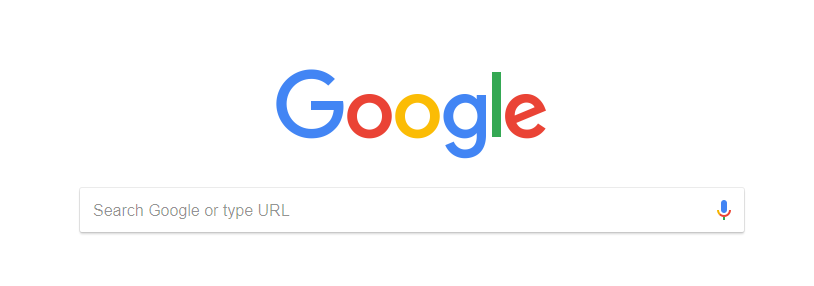
2018 구글SEO 상위노출
트렌드 TOP 10
구글SEO 알고리즘은 200개가 넘는다고 알려져 있으며, 이 알고리즘에 따라 유저에게 더 나은 결과를 제공하는 것이 구글의 목표입니다. 그러나 구글의 알고리즘은 게임의 규칙처럼 끊임없이 변화하는 요소이기 때문에 우리는 그 알고리즘을 모두 다 알 수도 없으며, 알 필요도 없습니다.
모든 검색엔진이 그렇듯 구글도 검색 결과의 품질을 향상시키기 위한 작업을 계속하며, 그 과정에서 구글SEO 알고리즘 역시 함께 변화 합니다. 오늘 중요했던 순위 요소가 내일 덜 중요해질 수도 있으며, 오늘 중요하지 않았던 요소가 내일 엄청난 영향을 발휘하는 요인이 될 수 있습니다.
그렇다면, 2018년에 내 사이트가 상위로 도약하는데 도움이 되는 중요 알고리즘에는 무엇이 있을까요? 여기 2018 구글SEO 상위노출 트렌드 TOP10을 공개합니다!

구글 SEO 2018년도 필수 최적화요소 랭킹 10
- 키워드와 컨텐츠의 관련성
컨텐츠가 키워드와 관련이 없거나 유저의 의도와는 상관이 없는 경우, 구글은 순위를 매기지 않습니다. 구글SEO 알고리즘의 진화로 무분별한 키워드의 남용과 관련없는 컨텐츠로 볼륨만 키워놓은 사이트는 스팸으로 간주되고 있습니다. 얼마나 많은 컨텐츠를 만드는지보다 얼마나 관련있는 컨텐츠를 만드는지가 사이트를 최적화하는 방법입니다. 기억하세요, 양보단 질!
- 유저 체류시간; 사용자가 사이트에 머무는 시간
유저가 원하는 컨텐츠를 찾았다면 사이트에 머무는 시간은 당연히 길어지겠죠. 반면, 그렇지 않은 사이트의 경우에 유저는 더 관련있는 정보를 찾기위해 다른 사이트로 이동할 겁니다. 중요한 것은 한번 사이트에서 이탈한 사용자는 다시 그 사이트를 방문하지 않는다는 사실입니다.
- 정확한 비즈니스 정보 제공
Google maps 및 My business, Local Pack등으로 구성된 비즈니스에 대한 정보는 여러분이 상상하는 것 이상의 엄청난 트래픽을 불러일으킵니다. 따라서 운영하고 있는 비즈니스에 대한 데이터를 정리하고 소유하는 것은 중요합니다. 이러한 위키데이터 및 위치데이터를 최적화하는 것은 대단히 중요하며, 다른 마케팅 방법에 비해서 시간과 비용이 적게 든다는 점에서 가장 매력적이라고 할 수 있습니다.
- 반응형 웹 및 모바일 최적화 사용
모바일 웹사이트가 없는 브랜드는 그렇지 않은 브랜드에 비해 경쟁력이 떨어진다는 사실은 당연지사! 반응형 및 모바일 최적화 페이지가 없다면 얼마나 많은 손해인지를 쉽게 측정할 수 있습니다. 실제로 PC버전과 모바일 버전에서 같은 키워드를 검색했을 때 랭킹에 차이를 보이고 있습니다. 이는 앞으로 구글의 모바일 시장에 대한 관심도와 관련있다고 할 수 있으며 구글SEO의 주요요인이 될 것입니다.
- 사이트 전체 컨텐츠의 고유성
웹사이트 전체를 고유한 컨텐츠로 유지하고 컨텐츠의 중복을 제거하는 것은 사이트의 크롤링을 보다 빠르고 쉽게하는데 도움이 됩니다. 구글측에서 내 사이트를 쉽게 파악할 수 있도록 하는 것이죠.
- 모바일에 친화적인 페이지
스마트폰을 통한 모바일 유저가 급속히 증가하면서 PC버전 외에 모바일에도 최적화가 필요한 시점입니다. 내 사이트가 모바일에 친화적인지 그렇지 않은지는 다음의 페이지에서 확인할 수 있습니다.
구글 모바일 친화성 테스트 페이지
- 페이지의 컨텐츠 고유성
사용자에게 다른 사이트에서도 볼 수 있는 컨텐츠가 아닌, 내 사이트에서만 볼 수 있는 고유한 컨텐츠를 제공해야 합니다. 가장 좋은 페이지를 위해 사이트의 컨텐츠를 지속적으로 고유한 자료로써 업데이트하는 것이 구글SEO, 상위노출의 지름길입니다.
- 페이지 로드 속도 향상
로딩 속도가 가장 빠른 페이지가 될 수 있도록 사이트를 개선하는 것은 상당히 중요합니다. 구글이 원하는 것은 유저를 조금이라도 쉽고 빠르게 만나게 하는 것입니다.
구글 페이지 로드 속도 측정 페이지
- 클릭률 향상시키기; 구조화된 데이터(리치 스니펫)
구조화 된 데이터는 검색 엔진에 컨텐츠의 해석 방법 및 이를 SERP에 표시해 줍니다. 구조화 된 데이터를 사용하면 여러가지 방법으로 검색 목록을 향상시킬 수 있습니다. 지식 그래프 및 리치스니펫을 사용한 결과, 실제로 클릭률을 30% 향상시킬 수 있었다는 데이타는 이를 반증합니다.
유저들이 직접 참여할 수 있도록 투표 및 평가 시스템을 홈페이지에 적용할 수 있으며, 이는 여러 사이트에게 제공하는 프로그램으로 쉽게 적용가능합니다. 구조화된 데이터 형식은 여러가지가 있지만 대부분의 SEO는 Schema.org를 표준으로 고수합니다.

[리치 스니펫 SERP]
유저들의 평가결과가 표시되어 다른 유저들의 검색에 도움을 제공한다.

[레귤러 스니펫 SERP]
단순히 검색결과만 표시되는 기존의 레귤러 스니펫
- 구글 SERP 클릭률
유저들의 사이트 방문과 클릭률은 구글SEO에서 상당히 중요한 요소입니다. 더 매력적인 타이틀과 디스크립션 태그를 통해서 많은 유저가 방문하고 싶은 사이트/ 컨텐츠를 만드는 것을 시작으로 여러분 사이트의 홍보는 시작됩니다. 물론 자극적이기만한 메타태그와 관련성 없는 컨텐츠는 지양하는 것은 기본!
보기
(
0) 명이(가) 좋아요를 눌렀습니다.
(
0) 명이(가) 댓글을 달았습니다.
로그인 후 확인하실 수 있습니다. 로그인
2018 영국 대학 순위 - 2018 UK University Ranking
(0) - (0)
2018 대학 순위 - 2018.09.12
#2018 영국 대학 랭킹
#2018 UK University Ranking
#2018 대학순위
2018 대학 순위
보기
보기 AMP
| #Rank | University | Town |
| 1 | University of Oxford | Oxford |
| 2 | University of Cambridge | Cambridge |
| 3 | University College London | London |
| 4 | The University of Edinburgh | Edinburgh |
| 5 | The University of Manchester | Manchester |
| 6 | The University of Nottingham | Nottingham ... |
| 7 | The London School of Economics and Political Science | London |
| 8 | University of Glasgow | Glasgow |
| 9 | The University of Warwick | Coventry |
| 10 | University of Leeds | Leeds |
| 11 | Imperial College London | London |
| 12 | King's College London | London |
| 13 | Newcastle University | Newcastle upon Tyne |
| 14 | University of Southampton | Southampton ... |
| 15 | University of Birmingham | Birmingham |
| 16 | The University of York | York |
| 17 | University of Leicester | Leicester |
| 18 | The University of Sheffield | Sheffield |
| 19 | University of Liverpool | Liverpool |
| 20 | Durham University | Durham ... |
| 21 | University of Exeter | Exeter |
| 22 | Queen Mary University of London | London |
| 23 | University of Kent | Canterbury ... |
| 24 | Lancaster University | Lancaster |
| 25 | University of St Andrews | St Andrews |
| 26 | University of Sussex | Brighton |
| 27 | University of Surrey | Guildford |
| 28 | University of Bath | Bath |
| 29 | University of Bristol | Bristol |
| 30 | Queen's University Belfast | Belfast |
| 31 | University of Reading | Reading |
| 32 | University of East Anglia | Norwich |
| 33 | Cardiff University | Cardiff |
| 34 | University of Aberdeen | Aberdeen |
| 35 | Loughborough University | Loughborough |
| 36 | University of Strathclyde | Glasgow |
| 37 | University of Essex | Colchester ... |
| 38 | University of Dundee | Dundee |
| 39 | City, University of London | London |
| 40 | University of the Arts London | London ... |
| 41 | Heriot-Watt University | Edinburgh ... |
| 42 | University of the West of England | Bristol |
| 43 | Sheffield Hallam University | Sheffield |
| 44 | University of Portsmouth | Portsmouth |
| 45 | Royal Holloway, University of London | Egham ... |
| 46 | University of Hertfordshire | Hatfield ... |
| 47 | Swansea University | Swansea |
| 48 | Brunel University London | Uxbridge |
| 49 | University of Plymouth | Plymouth |
| 50 | De Montfort University | Leicester ... |
| 51 | Coventry University | Coventry |
| 52 | Nottingham Trent University | Nottingham |
| 53 | University of Salford | Salford ... |
| 54 | Manchester Metropolitan University | Manchester ... |
| 55 | Goldsmiths, University of London | London |
| 56 | University of Brighton | Brighton |
| 57 | Birkbeck, University of London | London |
| 58 | SOAS, University of London | London |
| 59 | Aberystwyth University | Aberystwyth |
| 60 | University of Stirling | Stirling ... |
| 61 | The University of Hull | Hull ... |
| 62 | Bournemouth University | Poole ... |
| 63 | University of Greenwich | London ... |
| 64 | Aston University | Birmingham |
| 65 | Kingston University | Kingston upon Thames |
| 66 | University of London | London |
| 67 | Oxford Brookes University | Oxford |
| 68 | Middlesex University | London |
| 69 | Cranfield University | Cranfield ... |
| 70 | Bangor University | Bangor |
| 71 | Keele University | Keele |
| 72 | Northumbria University | Newcastle upon Tyne |
| 73 | Edinburgh Napier University | Edinburgh |
| 74 | University of South Wales | Pontypridd ... |
| 75 | Royal College of Art | London |
| 76 | Birmingham City University | Birmingham |
| 77 | Anglia Ruskin University | Cambridge ... |
| 78 | London School of Hygiene and Tropical Medicine, University of London | London |
| 79 | Leeds Beckett University | Leeds ... |
| 80 | University of Central Lancashire | Preston ... |
| 81 | University of Lincoln | Lincoln ... |
| 82 | London South Bank University | London ... |
| 83 | University of Wolverhampton | Wolverhampton |
| 84 | University of Westminster | London |
| 85 | London Business School | London |
| 86 | Ulster University | Coleraine ... |
| 87 | University of Derby | Derby |
| 88 | University of East London | London ... |
| 89 | London Metropolitan University | London |
| 90 | University of Huddersfield | Huddersfield |
| 91 | University of Sunderland | Sunderland |
| 92 | Robert Gordon University | Aberdeen |
| 93 | Staffordshire University | Stoke-on-Trent ... |
| 94 | Glasgow Caledonian University | Glasgow |
| 95 | Teesside University | Middlesbrough |
| 96 | School of Advanced Study, University of London | London |
| 97 | University of the Highlands and Islands | Inverness |
| 98 | The University of Northampton | Northampton |
| 99 | Liverpool John Moores University | Liverpool |
| 100 | University of Bedfordshire | Luton ... |
| 101 | Southampton Solent University | Southampton |
| 102 | Canterbury Christ Church University | Canterbury ... |
| 103 | University of Roehampton | London |
| 104 | Bath Spa University | Bath |
| 105 | The Courtauld Institute of Art, University of London | London |
| 106 | Edge Hill University | Ormskirk ... |
| 107 | Royal Veterinary College University of London | London ... |
| 108 | University of Chester | Chester ... |
| 109 | University of Worcester | Worcester |
| 110 | Glasgow School of Art | Glasgow |
| 111 | University of Bradford | Bradford |
| 112 | University of West London | Ealing ... |
| 113 | University of Gloucestershire | Cheltenham ... |
| 114 | Falmouth University | Falmouth |
| 115 | St George's, University of London | London |
| 116 | University for the Creative Arts | Canterbury ... |
| 117 | University of Abertay Dundee | Dundee |
| 118 | University of Bolton | Bolton |
| 119 | Cardiff Metropolitan University | Cardiff |
| 120 | University of the West of Scotland | Paisley ... |
| 121 | The University of Buckingham | Buckingham |
| 122 | Royal Academy of Music, University of London | London |
| 123 | Royal College of Music | London |
| 124 | The University of Winchester | Winchester |
| 125 | Liverpool Hope University | Liverpool |
| 126 | York St John University | York |
| 127 | Glyndwr University | Wrexham ... |
| 128 | University of Wales Trinity Saint David | Carmarthen ... |
| 129 | University of Cumbria | Carlisle ... |
| 130 | St Mary's University, Twickenham | Twickenham |
| 131 | Queen Margaret University | Edinburgh ... |
| 132 | The University of Law | Guildford ... |
| 133 | Royal Northern College of Music | Manchester |
| 134 | Regent's University London | London |
| 135 | Arts University Bournemouth | Poole |
| 136 | Scotland's Rural College | Edinburgh ... |
| 137 | Ravensbourne | London |
| 138 | University of Chichester | Chichester |
| 139 | Buckinghamshire New University | High Wycombe |
| 140 | The Royal Central School of Speech and Drama | London |
| 141 | Harper Adams University | Newport |
| 142 | Trinity Laban Conservatoire of Music and Dance | London |
| 143 | University of Wales | Cardiff ... |
| 144 | Richmond, The American International University in London | London ... |
| 145 | Royal Conservatoire of Scotland | Glasgow |
| 146 | University College Birmingham | Birmingham |
| 147 | Leeds Trinity University | Leeds |
| 148 | Plymouth College of Art | Plymouth |
| 149 | University of St Mark and St John | Plymouth |
| 150 | Leeds College of Music | Leeds |
| 151 | Norwich University of the Arts | Norwich |
| 152 | Leeds Arts University | Leeds |
| 153 | Newman University, Birmingham | Birmingham |
| 154 | Liverpool Institute for Performing Arts | Liverpool |
| 155 | Bishop Grosseteste University | Lincoln |
| 156 | Royal Agricultural University | Cirencester |
| 157 | Heythrop College | London |
| 158 | Rose Bruford College | London |
| 159 | European School of Economics | London ... |
| 160 | Northern School of Contemporary Dance | Leeds |
| Un | BPP University | Manchester |
| Legend: Un Unranked | Add University |
보기
(
0) 명이(가) 좋아요를 눌렀습니다.
(
0) 명이(가) 댓글을 달았습니다.
로그인 후 확인하실 수 있습니다. 로그인
세계에서 가장 오래된 빵
(0) - (0)
독일 뉴스 - 2018.08.14
#세계에서가장오래된빵
독일 뉴스
보기
보기 AMP
코펜하겐, 런던, 케임브리지의 고고학자들은 지금의 요르단 지방에서 14 400년 전에 구워진 빵을 발견했다고 한다. 인류가 농사를 짓기 시작한 것보다 4000년이나 빠른 시기다. 지금까지는 인류가 빵을 구워 먹기 시작한 것은 농경시대가 시작되면서, 즉 10 000년 전쯤에 시작되었을 것이라고 여겨왔다.
이 빵은 곡식을 가루로 갈아 채에 걸러 불에 구운, 요즘 중근동 지역 사람들이 먹는 빵과 기본적으로 큰 차이가 없이 만들어졌다고 한다.
이 시기는 아직 농사를 짓던 시기가 아니라서 이 빵은 자연에서 채취된 곡식으로 구워진 것으로, 당시로는 하나의 예외였을 것이라고 한다. 학자들은 이 발견으로 지금까지 알려진 것과 반대로, 수렵, 채취로 살아가던 당시 인류가 이렇게 구워진 빵을 식품으로 원했고, 제조를 위한 곡식을 대량으로 구하기 위해 농사를 짓기 시작했을 것으로 본다. (보도)
보기
(
0) 명이(가) 좋아요를 눌렀습니다.
(
0) 명이(가) 댓글을 달았습니다.
로그인 후 확인하실 수 있습니다. 로그인